
Contact press
Do you want to develop an additional sales channel?
Drone delivery for yachts
From marinas to yachts in just 15 minutes!
cala del forte, Ventimiglia
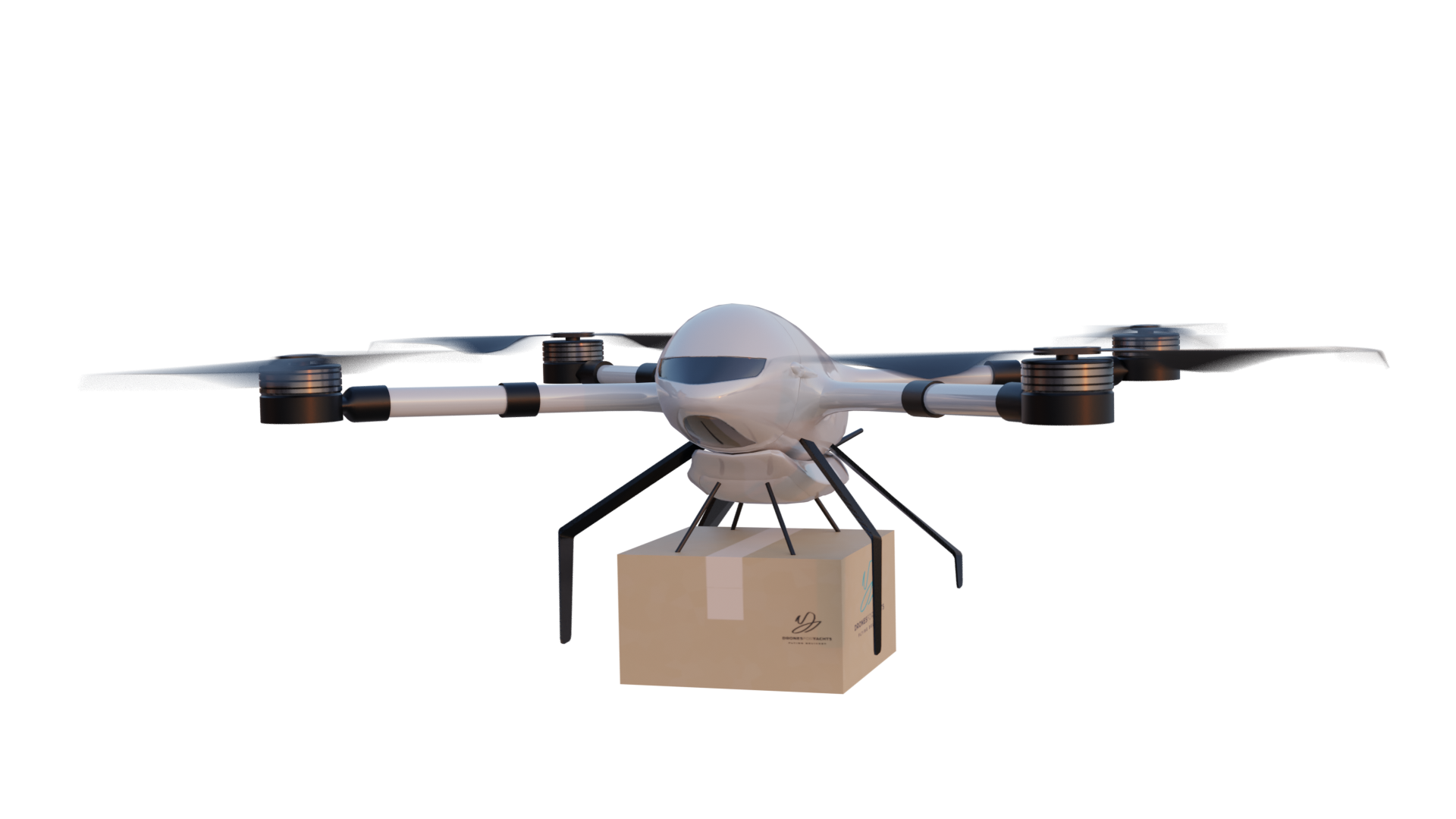

OUR CONCEPT
Facilitate delivery at sea.

An online marketplace offers a wide selection of high-end and local products to meet all the needs of the crew and customers on yachts at sea.
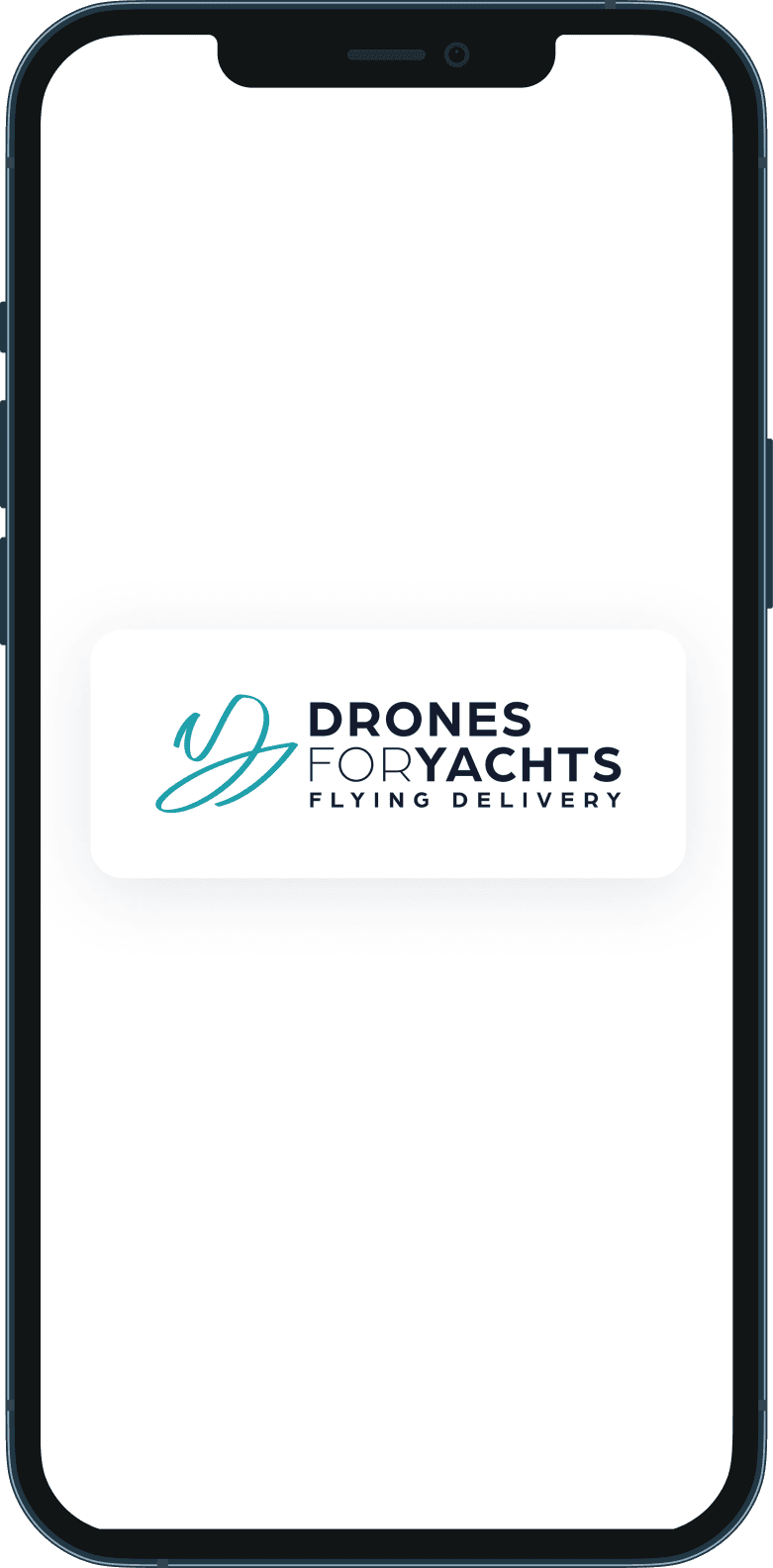
Our drones can be safely driven by our team of remote pilots in the marinas equipped with our hub. Your orders will be loaded into the drones in these hubs before being delivered to you at sea.
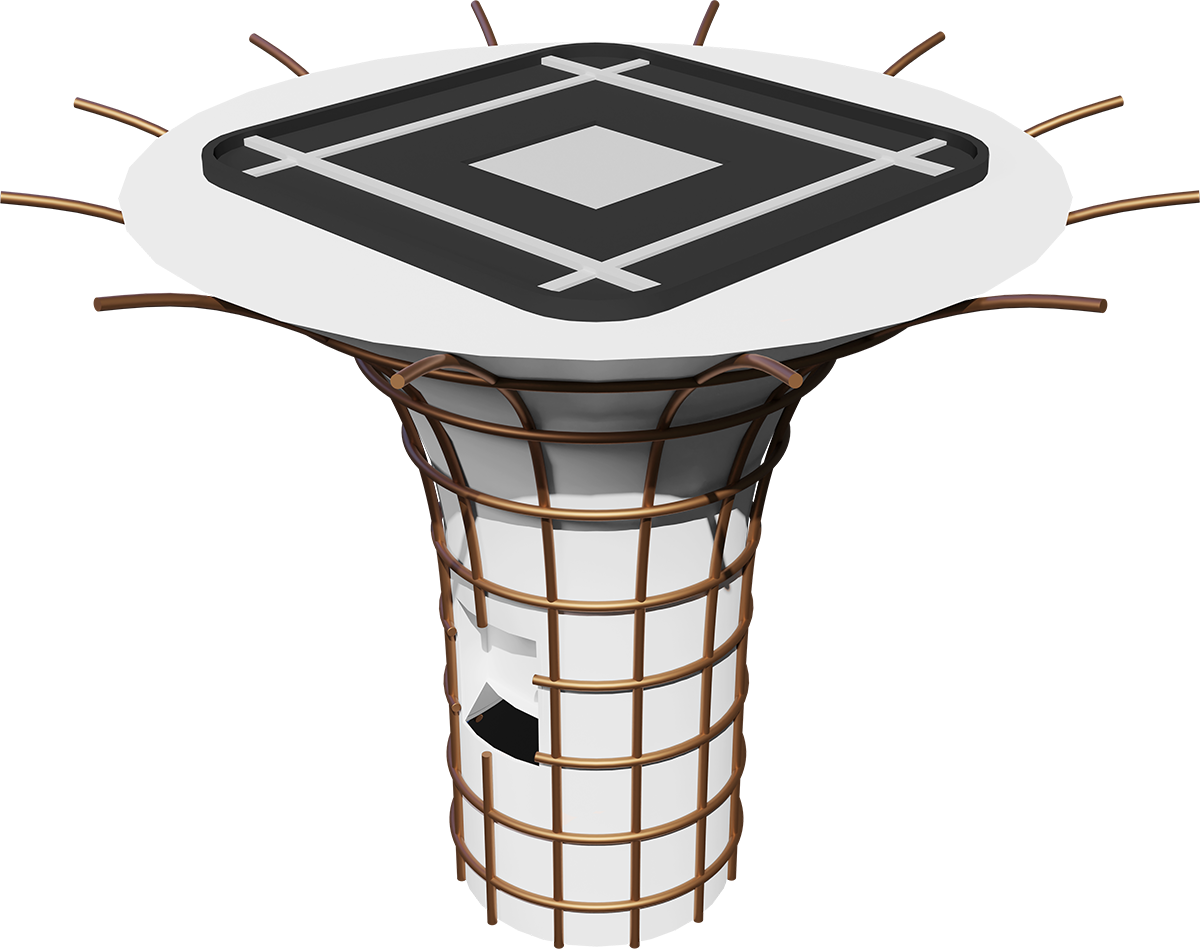
The delivery of products is ensured by our Beluga drones, which allow the transport of your parcel directly on the deck of the yacht in the best possible conditions: speed, safety, traceability.
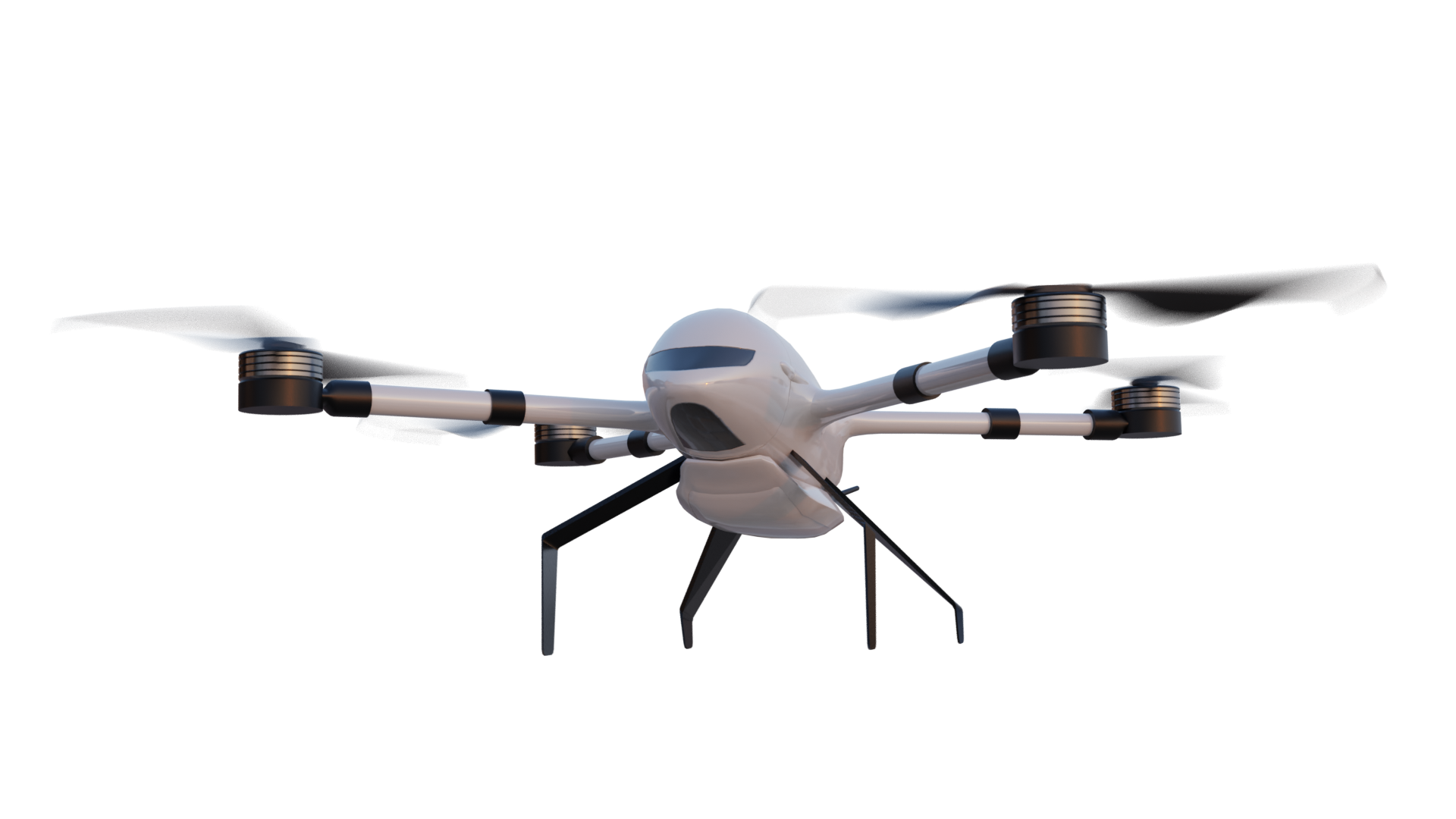
A logistics hub combining efficiency, beauty and security

Our delivery hub
Marinas are equipped by Drones for Yachts with our logistics hub. They have been designed to blend in with the architecture of the port, thanks to their aesthetic appearance. Unlike conventional delivery hubs they are easy to dismantle, allowing us to adapt our offer to the seasons.
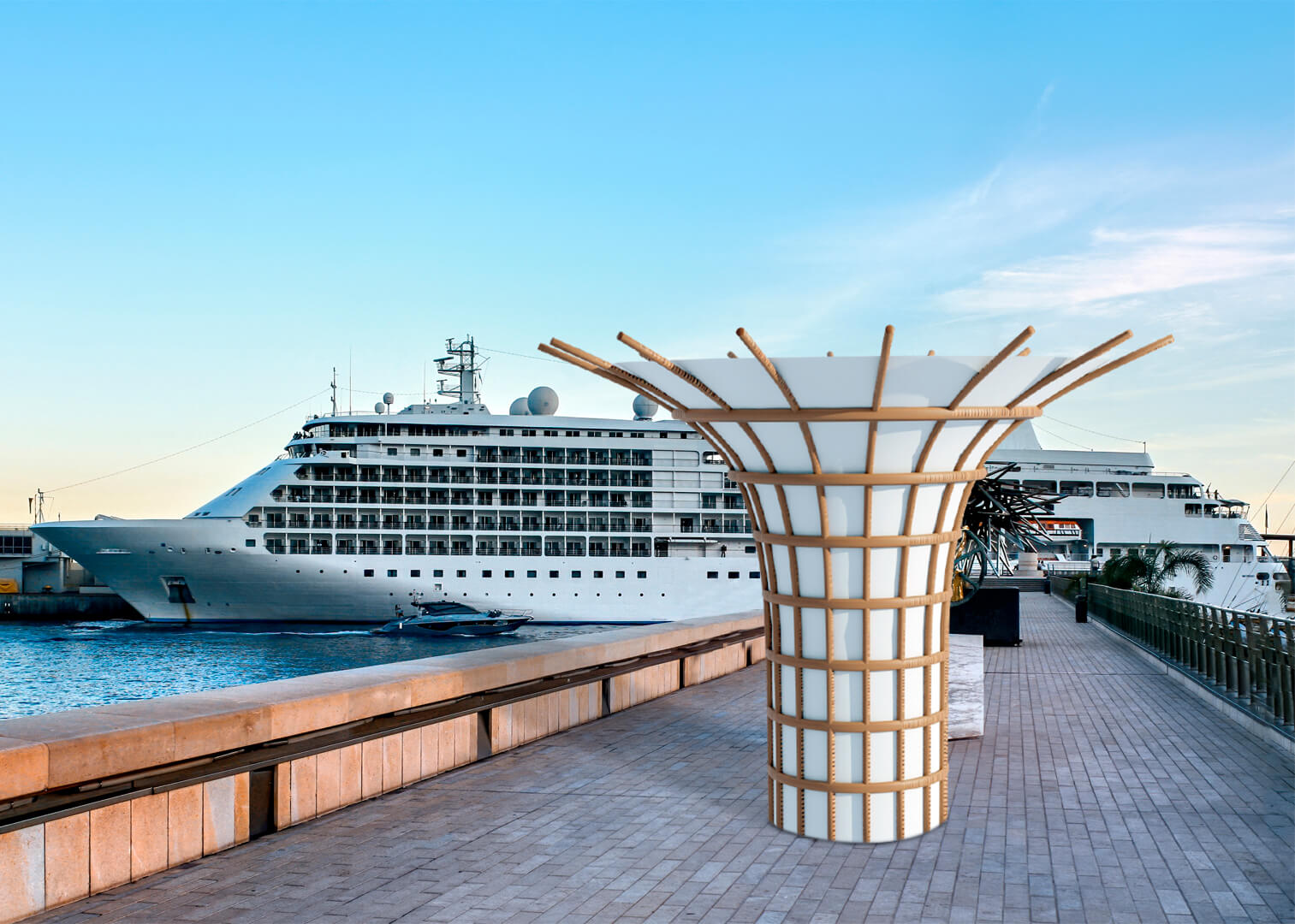
Deploy our hubs in your marina
A professional delivery drone the beluga, a silent and electric drone.
Inspired by the shapes of marine mammals and birds, our Beluga drones are 9 times quieter than their competitors on the market. Moreover, our drones are 100% electric, and therefore less polluting than the usual motorboat deliveries !
Endurance and speed
Our Beluga drones can fly for nearly an hour, go up to 110 km/h, and travel 40 km in a single flight. This remarkable speed allows us to get your parcel to your ship without constraints and to deliver it as quickly as possible.
Artificial Intelligence
Our professional delivery drones, the Beluga drones, are equipped with artificial intelligence and the latest Lidar system and with a GPS chip which allows them to detect your yacht at sea and locate it precisely. This is what makes the work of our pilots easier.
Storage capacity
Our drones have a carrying capacity of 5 kg. The Beluga drone can carry all types of high-end and local products: food, clothing or even medicine.
Receive your privilege pack by drone !
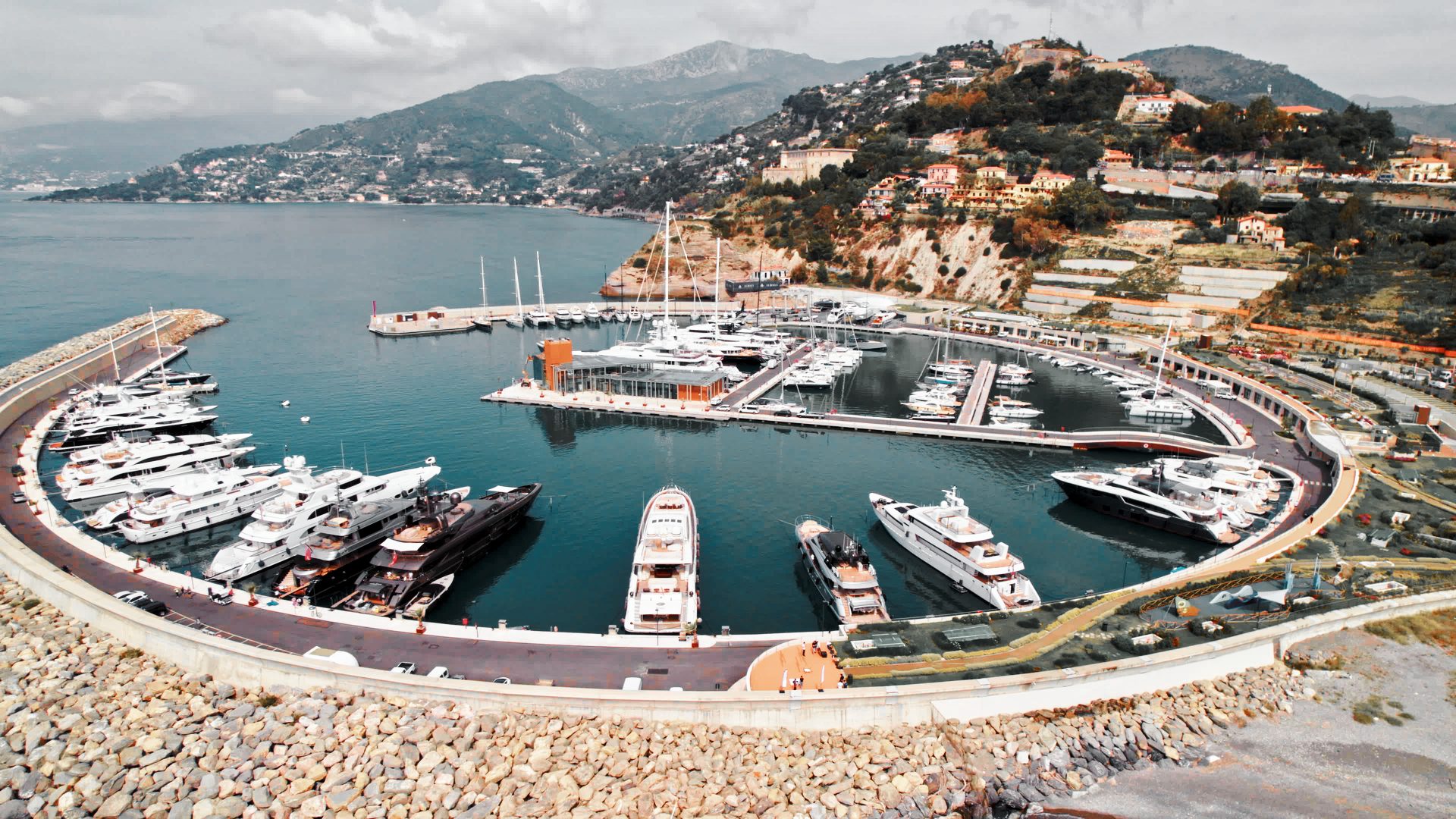
Our marketplace
The marketplace is accessible for each yacht in one of our partners marinas through an application or a browser. Thanks to our application, the customer, whether a crew member or not, can place the order and organize the shipment to the delivery area. Select your product, confirm your order and let our Beluga drones fly the last mile to your ship.
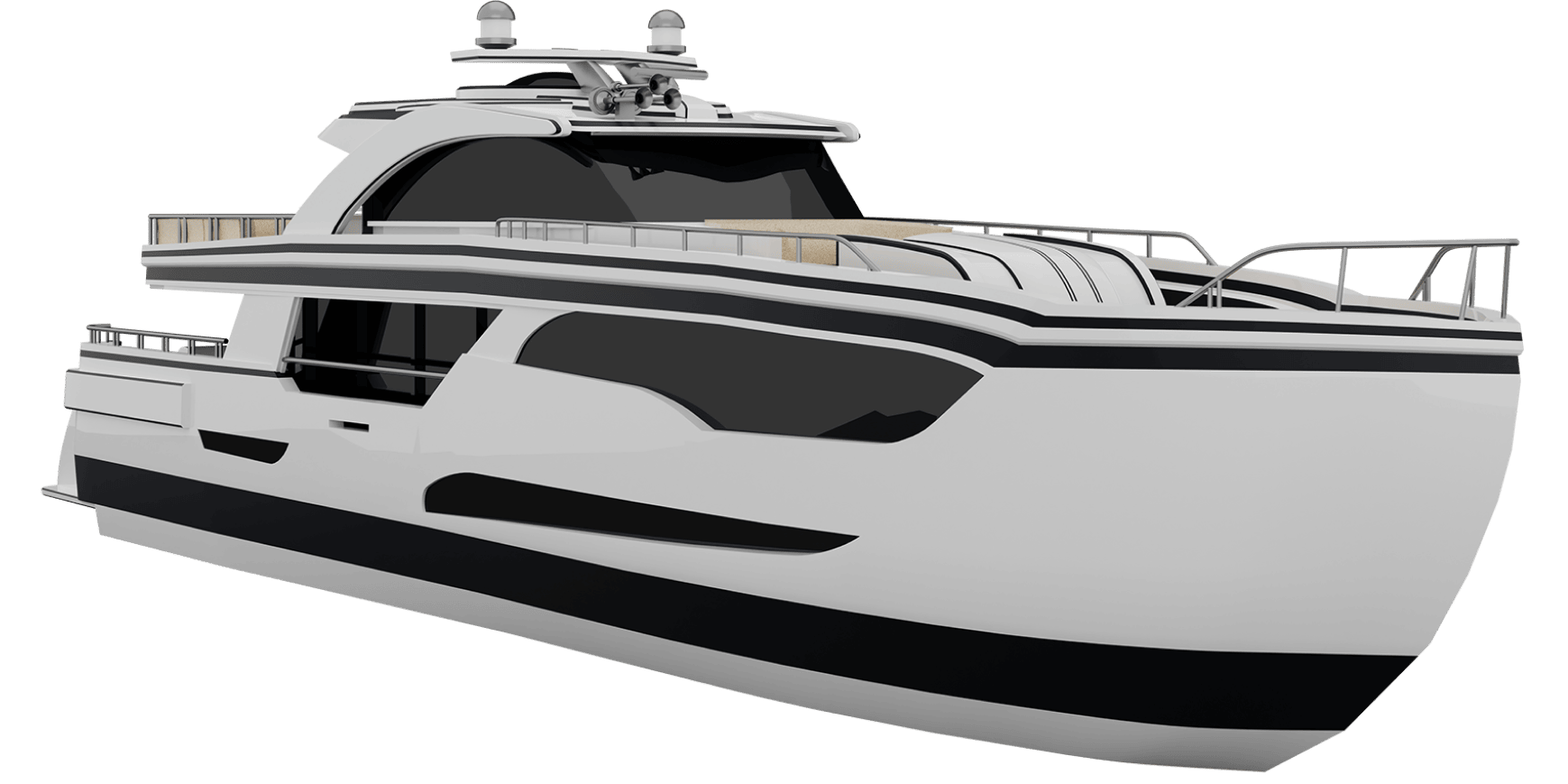
The Drones for Yachts marketplace, available on smartphones and web. Once you select the location of your marina, you have access to a wide selection of local and high-end products from our partners.
Need an ingredient for a recipe, batteries for a defective device or simply want a new perfume?
You can track the progress of your order on our app throughout the delivery process.

We offer the best products by working with prestigious brands and local merchants to deliver orders faster to the consumer. Interested? Join us!

Who are we?
Drones for Yachts is the first drone delivery service at sea. Our goal is to offer an innovative solution to the yachting world. Customer experience is at the heart of our DNA with a customized and exclusive service.
At Drones for Yachts, our mission is to make drone delivery accessible. Air delivery makes it possible to reduce the environmental impact while being faster and more secure. It also allows us to seamlessly deliver their order to our customers wherever they are.
Drones for Yachts is taking a leading role in connecting marinas and ports with yachts. We offer a complete delivery system from the marketplace to receiving the order at sea on the yacht.
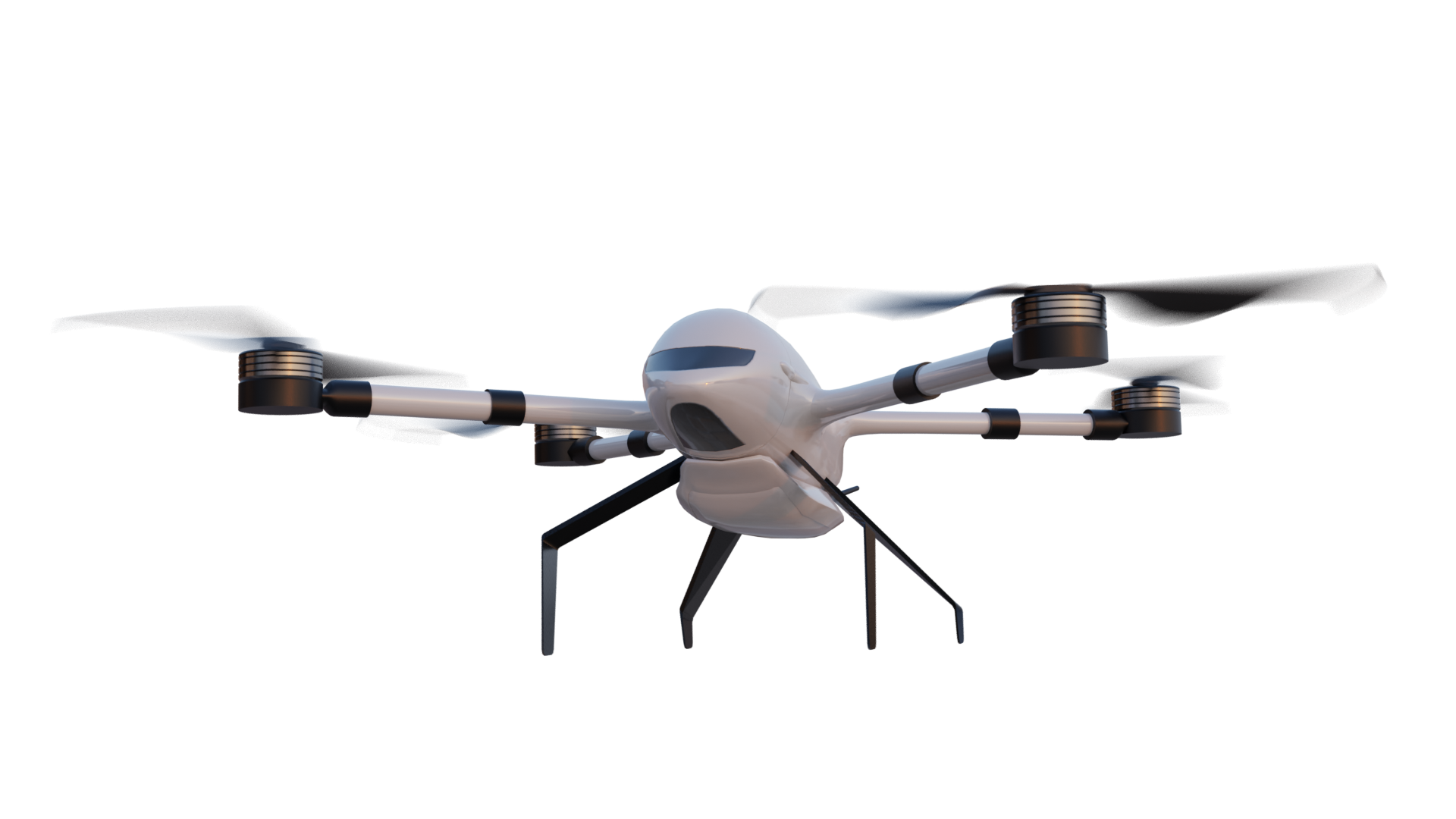
Who can benefit use this service?

Are you a retailer? Our delivery drones allow you to develop your catchment area and create an unique experience for your customers.

Create differentiation and boost your sales by integrating drone delivery on your online platform!
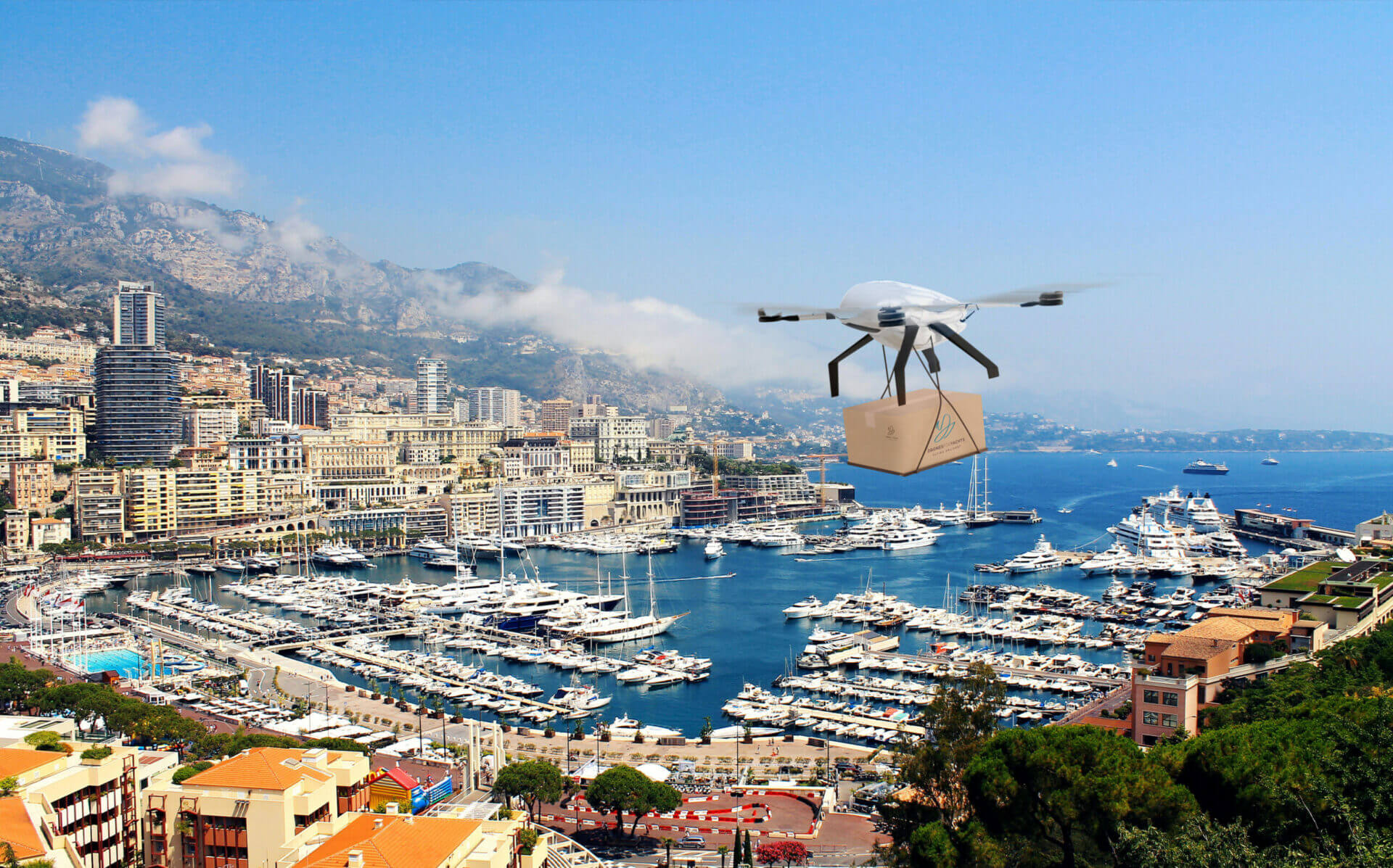
Thanks to hubs and delivery drones, make the yacht customers of a delivery service at sea happy, without distorting the aesthetics of your waterfront: the hub blends into your environment!
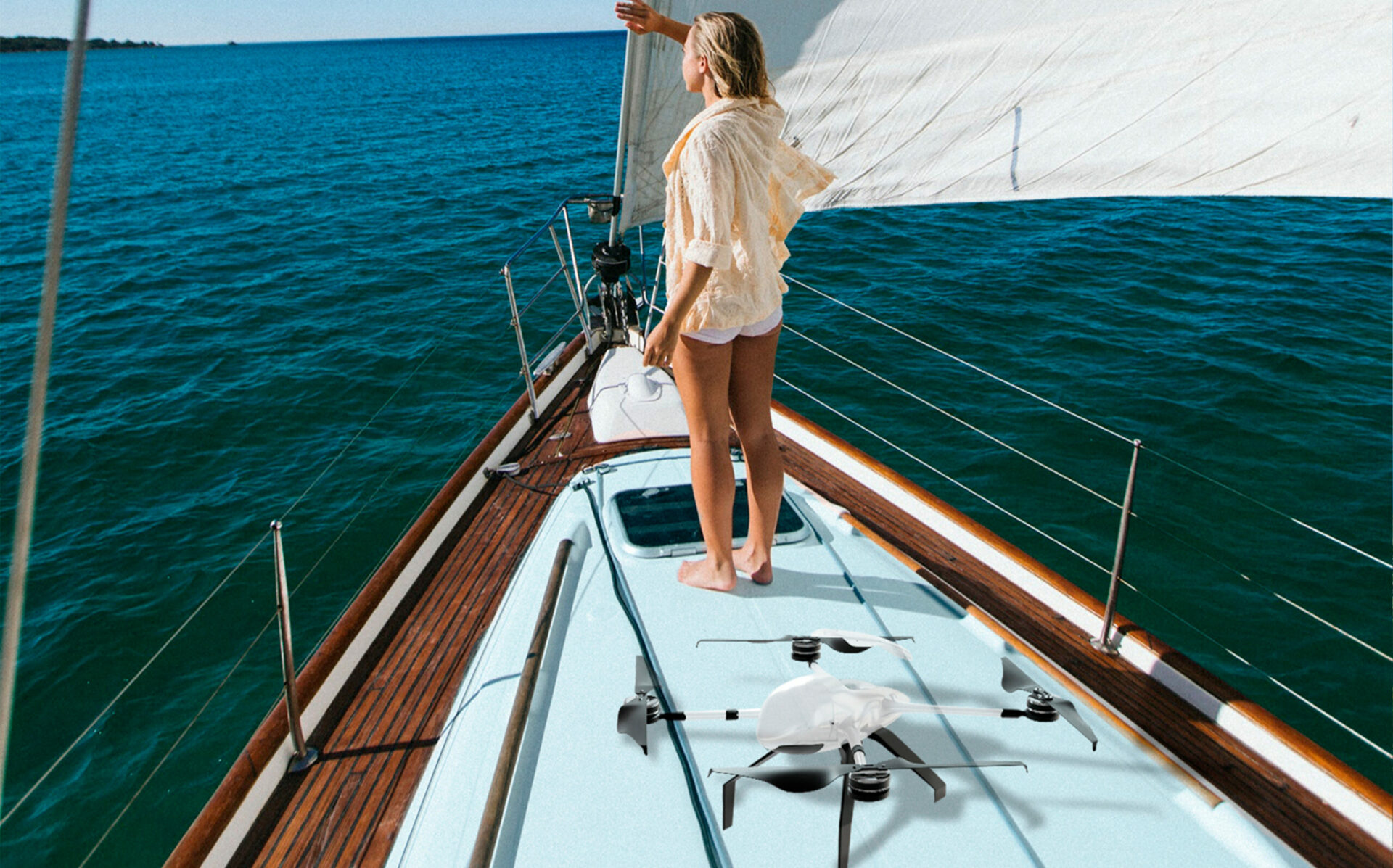
Place an order from your cabin and have it delivered by drone in 15 minutes!
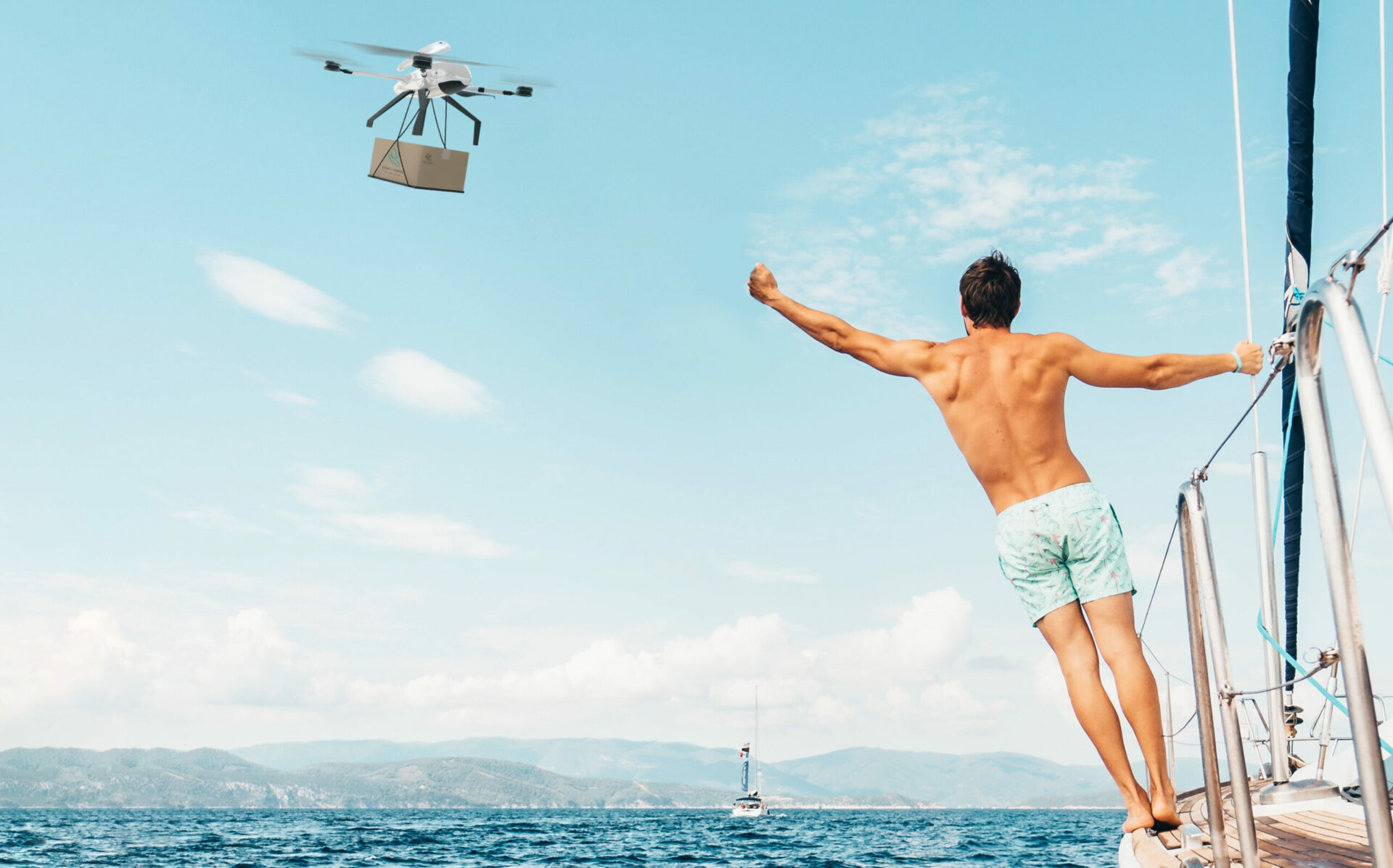
You are used to answering the most exotic requests of your clients? Now you can offer an innovative and revolutionary delivery service.
From now on, you no longer have to go on land to have groceries and drinks delivered quickly. Receive them directly at sea!

+10y working in major accounting companies in Paris as Deloitte. Previous CFO of a PME (25m turnover)

Marketplace coming soon...
Want to know more?
Our partners
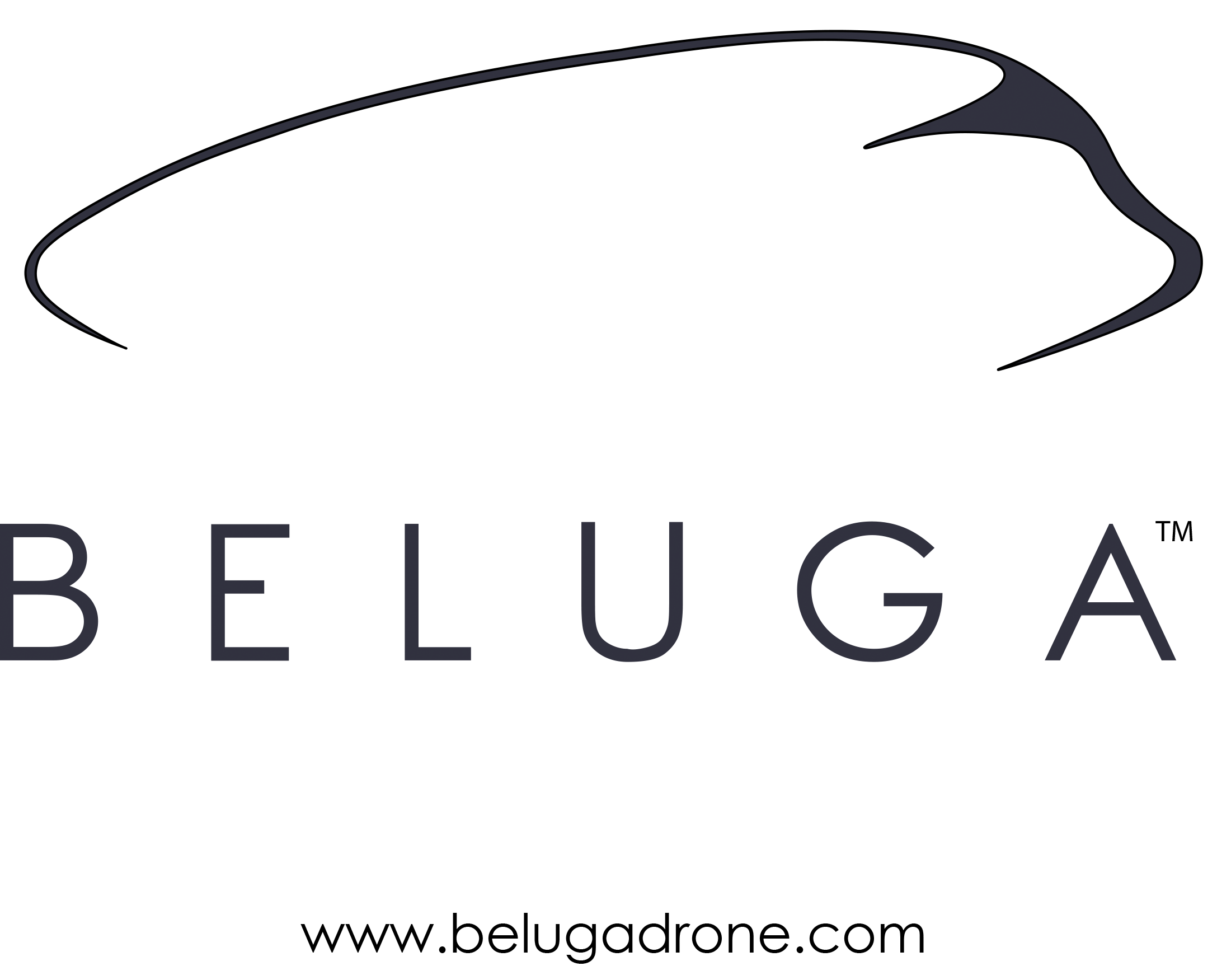
Mandatory and functional cookies allowing the proper functioning of the Site and the improvement of the user experience.
Cookies for audience measurement.

The 5 Best Drones for Sailing and Boating in 2023
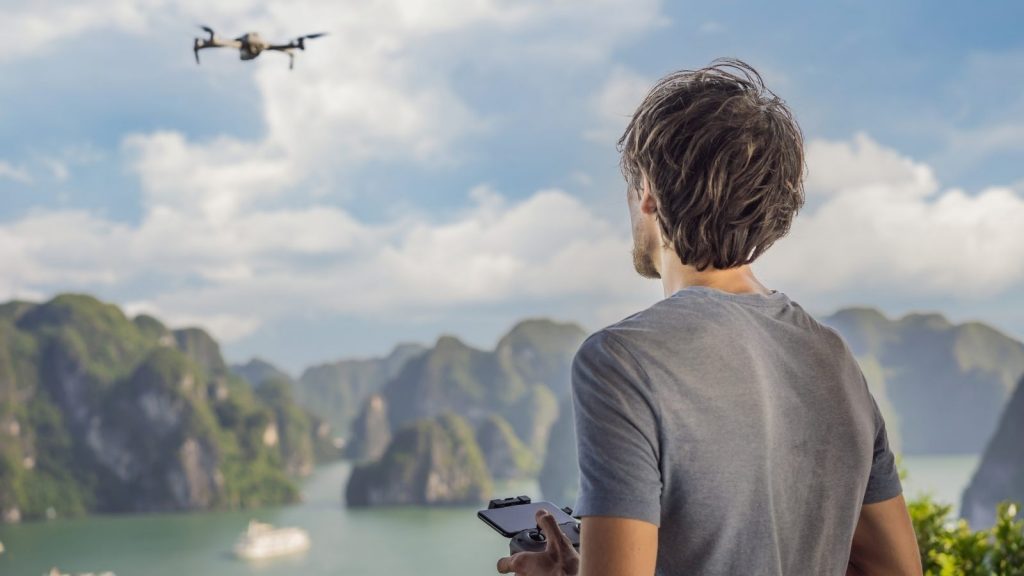
Some of the links in this post are affiliate links . This means if you click on the link and purchase the item, we will receive an affiliate commission at no extra cost to you. All opinions remain our own.
If you’re looking for the best drones for sailing , you’ve come to the right place. Whether you’re exploring hidden beaches, secluded bays, top marinas , awesome anchorage places, or want to film your boat while sailing, you’ll need to carry a drone on board to capture the greatest moments of your sailing experience.
Sailing enthusiasts usually want to capture every moment they can while they are sailing and drones make the process easier than ever before. After a long sailing day, drone footage is the best way to relive your awesome experiences on the water.
What is the best drone for boating? That’s a great question! There are many drones on the market and it’s hard to decide. Let’s take a look at the best drones for sailing, boating, and any marine use.
The 5 Best Drones for Sailing
Drones are quickly becoming extremely popular, and if you take boating as a hobby or passion, you may be wondering what drones are the best for boating.
Now, almost anyone can buy a drone, but not everyone knows what to look for. I’ll be giving you some tips and pointers on what to look for when buying a drone and which drones are the best drones for sailing.
All drone models are extremely stable, powerful, have a great camera, and have a decent flight time.
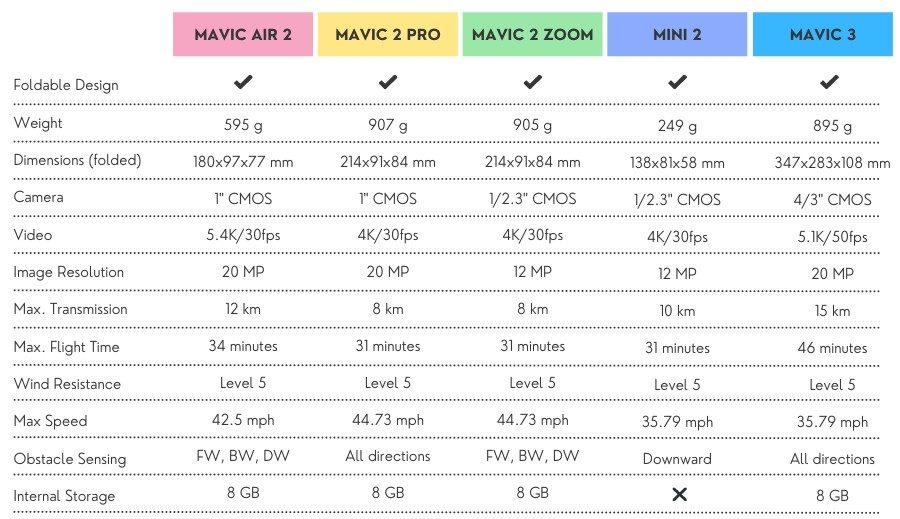
Let’s discover the best drones for sailing and boating activities, and which ones are best for various situations.
Here are 5 of the best drones for boating and marine use.
DJI Mavic 2 PRO - Best Overall Drone for Sailing & Boating
DJI Mavic 2 PRO is exactly what drone lovers have been waiting for: performance and picture quality in a compact package.
The Mavic 2 PRO is one of the most recent DJI drones, and it is packed with state-of-art technology, a fantastic camera, and, most significantly, it includes tracking and follow-me features. This is without a doubt the best drone for boaters.
The Mavic 2 camera drone is equipped with a Hasselblad L1D-20c camera with a 20MP 1″ CMOS Sensor, which allows you to shoot breathtaking aerial photos in astonishing color detail (resulting in outstanding quality and detail captured at a resolution of 20 megapixels). The camera includes a built-in stabilization technology in order to improve the quality of photos and videos. Thanks to the bigger sensor and 28mm equivalent prime lens, the ISO can be increased to 12800, which is significantly higher than other drones.
It’s an extremely powerful drone and it provides a maximum speed of 44 mph and a flying duration of up to 31 minutes. Also, it has a max. transmission distance of 10 km.
Did you know that the DJI Mavic 2 PRO has a wind resistance level of 5? That makes the drone of the best drones for sailing and boating activities. This is one of the best drones for windy conditions, being an ideal choice for boating and sailing.
ActiveTrack 2.0, HDR Photos, Omnidirectional Obstacle Sensing, and a low-noise construction are among the smart features included in the drone. The drone also offers features such as QuickShots (Rocket, Dronie, Circle, Helix, Asteroid, Boomerang, DollyZoom), POI, Waypoint, TapFly.
The drone can be purchased with the standard controller or smart controller (it is a bit more expensive but worth it). The smart remote controller can operate for up to 135 minutes on a single charge (on a full charge). Using the smart controller, you don’t have to worry if your phone has enough battery. The controller screen is also very bright and easy to see even in sunlight.
The drone has an internal storage of 8GB but accepts SD cards, allowing you to add up to 128GB additional storage.
If you’re a sailor and looking to take your hobby to the next level by capturing aerial footage, look no further. This is, in our opinion, the best drone you can get for sailing.
- Foldable design
- Easy to fly
- Amazing Image Sensor (20 MP)
- Great Quality of Images
- Great Color & Dynamic Range
- More Obstacle Avoidance Sensors
- Shoots slow-motion video up to 1080/120p and 4K/30p
- Better in Low Light
- Wind Resistance: Level 5
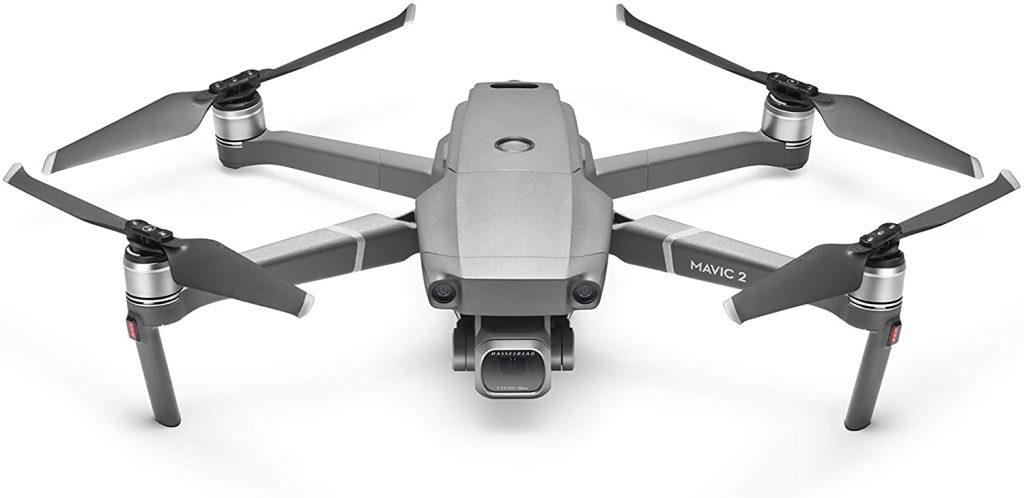
DJI Mavic Air 2 - Best Drone for Windy Conditions
By far, the best drone when it comes to boating is the DJI Mavic Air 2. This drone has several benefits that make it the ideal choice for someone searching for their first drone or just updating their current model. Let’s look at why this is one of the best drones for boating.
The DJI Mavic Air 2 is a small, portable drone specially designed for boating. It has a 4K Camera that can capture high-resolution photos and a great video capture resolution during the day or at night with built-in LEDs. It includes a tracking and follow-me feature.
The Mavic Air 2 is a significant upgrade over its predecessor with a better range, a considerably longer battery life, all for the same starting price as its predecessor. It offers a good value for novice pilots and seasoned sailors alike. Anybody who has ever flown a drone knows that it can be tricky to learn. You have to master no-fly zones and keep an eye on your battery life.
The 1/2-inch CMOS sensor on the drone produces 48MP images, while the 3-axis gimbal enables 4K/60fps video. A high-performance Quad Bayer image sensor is the key to producing amazing HDR footage.
The Mavic Air 2 is designed for first-time pilots with its simple flight controls but offers enough features for more experienced users to enjoy using it every day. The Air 2 is praised for its portability, controllability, video quality, and overall image quality.
Moreover, due to its wind resistance (level of 5), Mavic Air 2 can fly in windy conditions, making it an excellent drone for boating and sailing activities. Weighing only 20.01 oz (570 g) and having a level 5 wind resistance, DJI Maic Air 2 is probably the best drone for windy conditions.
The Mavic Air 2 has simple shooting controls that make aerial photography easier than ever. While flying freely, Spotlight 2.0 keeps the camera focused on a target. Subjects are kept in focus with ActiveTrack 3.0. POI 3.0 follows moving things such as people and cars. OcuSync 2.0 has a video transmission distance of up to 6.2 miles / 10 kilometers and can give a livestream in 1080p FHD definition directly from the drone’s camera. The drone is lighter than the PRO version, weighing only 1.25 pounds (0.57 kg).
The point perspective camera offers smooth motion for exploring the sea and you while sailing, and the gimbal technology uses a 3-axis stabilization system to keep your photos/videos steady.
With an excellent battery life of up to 34 minutes (~9 km) and a maximum flying speed of 42.3 mph in Sport mode, you can stay in the air long enough to obtain the ideal images and footages.
The drone combo pack also contains a four-way charger connector, which can take four batteries and charge each one. You don’t have to change every battery because it does the job for you. It’s useful if you’re charging all of your batteries overnight.
We recommend you choose the Fly More bundle because it includes all of the things you’ll need to keep you flying in the field for a longer period of time.
Moreover, you don’t need a cell service in order to operate DJI Mavic Air 2. This is an ideal drone for boating and sailing.
iOS 10.0 (or above) or Android 6.0 or higher is required for the DJI Fly app.
- Good Value for Money
- Very Light (20.01 oz / 1.25 lbs/570 grams)
- Up to 34 minutes Battery Life
- 48 MP Camera
- Shoots slow-motion video up to 1080/240p and 4K/60p & hyper-lapses up to 8K
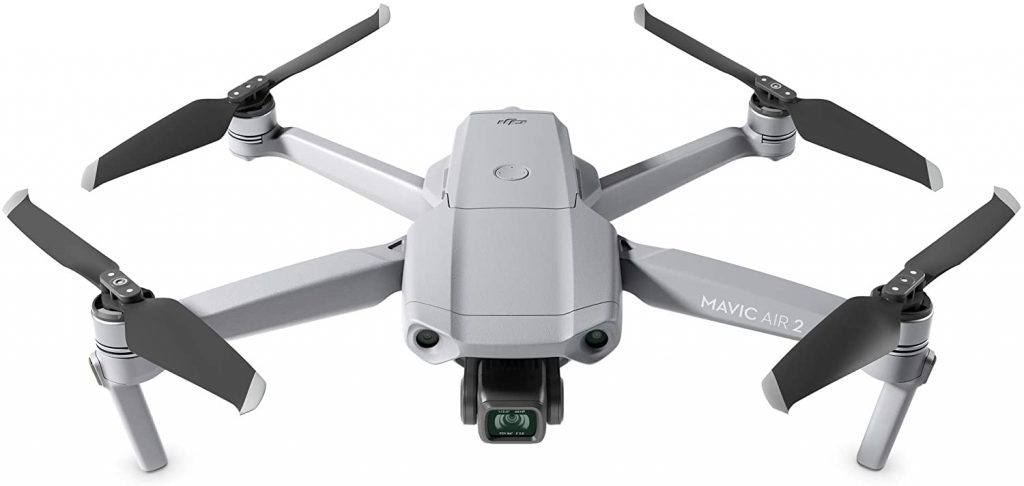
DJI Mavic 2 Zoom - Best Fishing Drone
For boaters who want to take their storytelling to the next level The Mavic 2 Zoom features a camera drone which is all about dynamic views, thanks to a 1/2.3-inch 12MP sensor with up to 4x zoom, including a 2x optical zoom (24–48 mm, compared to DJI MAvic 2 PRO which features an effective focal length of 28 mm).
If you want the greatest quality images and have a large budget, the Pro is the way to go; but, if you don’t have a large budget, DJI Mavic 2 Zoom is still quite excellent.
It features a flying time of up to 31 minutes, a top speed of 44 mph, and a 3-axis gimbal for stable photos. Due to its intelligent flight battery, the battery status is monitored in real-time. It also provides a level 5 wind resistance, making it an excellent drone for sailing.
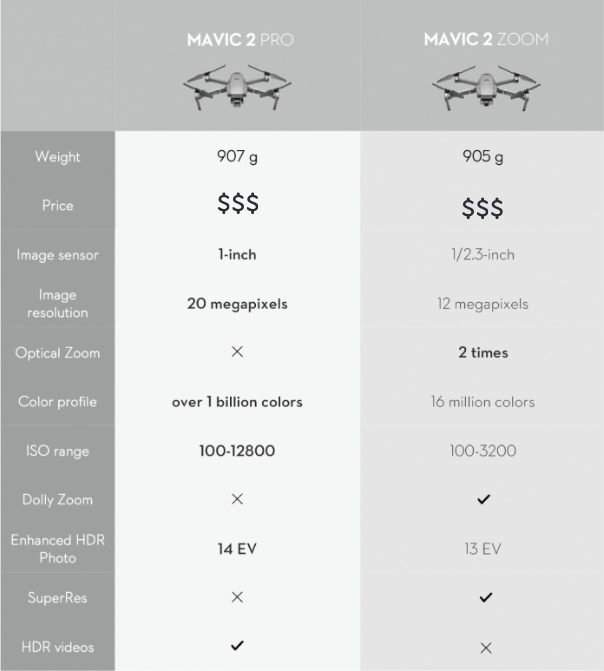
Mavic 2 Pro VS Mavic 2 Zoom : The Mavic 2 Zoom is the only drone that supports the Super Resolution function. When shooting in 24 mm equivalent 5, the camera will take and patch nine shots with its telephoto lens, resulting in a 48-megapixel super-resolution image. Compared to the Mavic 2 ZOOM version, DJI Mavic 2 PRO offers HDR and 10-bit DLog-M, while the ZOOM version does not offer these features. Also, the resolution of 4000×3000 pixels is lower in the Zoom version, compared to the Pro version: 5472×3648 pixels. Both drones provide ActiveTrack (Follow Me feature).
Are you trying to find the best fishing drones? As you know, Drone fishing serves two purposes: surveying possible fishing spots (essentially surveillance to discover the best spot) and dropping the bait.
If you enjoy both flying drones and fishing, Mavic 2 Zoom is one of the best fishing drones because it comes with some of the best features: good wind resistance, a 9km transmission range, 4K camera, excellent obstacle avoidance sensors, Return to Home and Follow Me modes. Moreover, Mavic 2 Zoom is a little fishing drone that you can simply transport, being able to use the zoom to identify the ideal fishing areas.
The Mavic 2 Zoom drone features an internal storage capacity of 8GB and SD card support up to 128 GB.
ActiveTrack 2, QuickShots (Rocket, Dronie, Circle, Helix, Asteroid, Boomerang, DollyZoom), POI, Waypoint, and TapFly are among the outstanding autonomous modes available on the Mavic 2 Zoom drone.
If you opt for the smart controller bundle, you should know that the main feature of the controller screen is the 5.5 inch ultra-bright display which means that in bright sunlight, this screen is much more usable than any mobile phone. This is one of the great advantages for any boater.
As for the internet connection, this is only necessary when you set it up for the first time, but you don’t need it after that.
Furthermore, they provide you a full-coverate and hassle-free. You can replace the drone for collision and water damage.
- Excellent Zoom Range (24-48 mm)
- Continuous Auto-Focus
- 4K with Zoom
- Obstacle Avoidance on All Sides
- Easy to Use & Foldable design
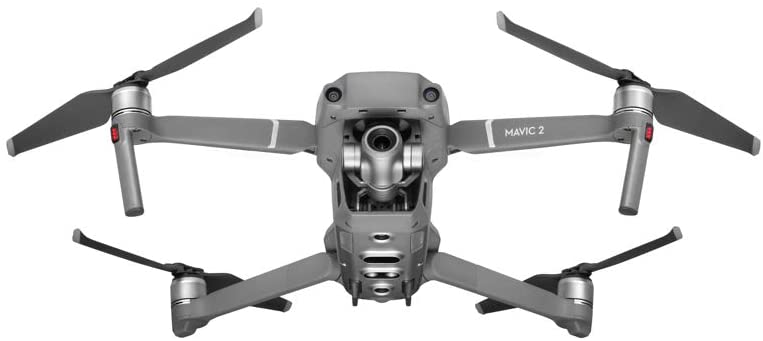
DJI Mavic 3 - Longest Flight Times Drone & Best Performing Drone
The Mavic 3 is now a game-changer for water sports. Have you ever gone surfing and wanted to record your session on the waves? Or maybe you’ve used drones to document your sailing trips before. But now, there are other drones that do a much better job at recording your water-based activities.
The drone has a 4/3 CMOS Hasselblad camera with a 12.8-stop dynamic range that preserves more details in highlights and shadows, elevating your work to a professional level.
Have you ever asked yourself which drone has the longest flight time? If yes, then you should know that DJI Mavic 3 has the longest flight time. With a spectacular flying length of 46 minutes (the drone with the best flight time ), the Mavic 3 drone allows you to take as many photos as you desire while just using one battery. The drone has a maximum transmission range of 15 kilometers and a live feed at 1080p/60fps.
Its camera has sophisticated Omnidirectional Obstacle Sensing. This allows you to fly confidently and safely no matter where you are. Live feeds are also smooth and steady using the O3 Plus Transmission technology. If you’ve ever wondered how far a drone can fly (from the controller), DJI Mavic 3 includes a transmission technology that allows for a 15-kilometer transmission range.
It also offers a Smart Return to Home function. The Mavic 3 camera drone can return to its home point through an optimal, quick, and safe route thanks to a new Advanced RTH technology. Whether it’s due to a low battery or the pilot, returning the drone to you is now easier than ever.
Even if it is more expensive than the other drone models in the article, it certainly offers excellent features, setting a higher standard for aerial photography.
In comparison to the normal Mavic 3 bundle, the DJI Mavic 3 Fly More Combo comes with 2 x extra Intelligent Flight Batteries, 1 x Battery Charging Hub, one Convertible Carrying Bag, and one ND Filters Set (ND4/8/16/32).
- Extended Flight Time, up to 46 Minutes
- Its camera can record up to 5.1K/50fps or 4K/120fps videos
- Upgraded Transmission System (15 km range & 1080p/60fps live feed)
- Faster Focusing due to Vision Detection Auto Focus (VDAF) Technology
- Foldable design & Easy to Fly
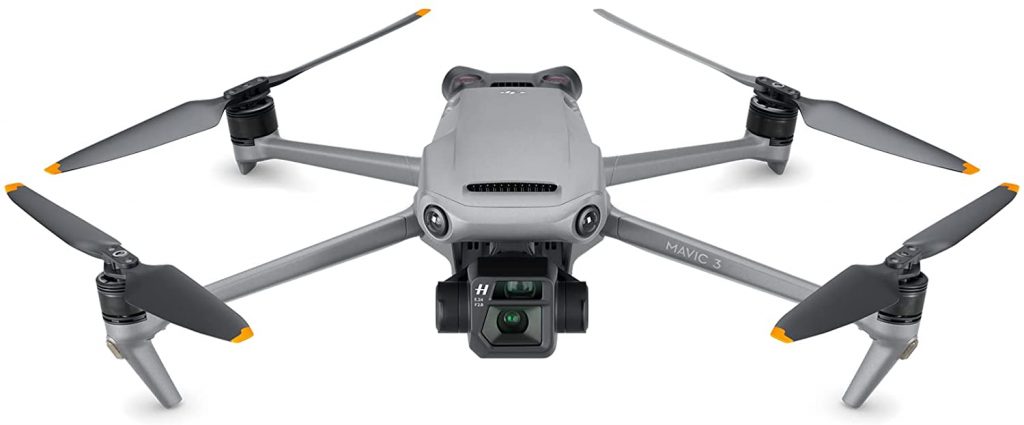
Phantom 4 PRO V2.0 - Best Drone to Fly From Boats
The new DJI Phantom 4 Pro V2.0 is currently one of the best drones for marine use, with awesome features such as TapFly, ActiveTrack, Gesture Mode, and Draw Mode. Due to its flexible design, it is extremely easy to transport.
Did you know that the DJI Phantom 4 Pro has a maximum speed of 45 mph (Sport mode) and a maximum flight distance of 11 miles? That makes the drone of the best drones to take with you on your sailing trips.
The drone camera has a 3-axis motorized gimbal as well as a 1-inch 20MP CMOS sensor with a mechanical shutter that minimizes rolling shutter distortion, making it one of the best sailing drones. It offers a video capture resolution of 4K UHD 2160p.
It boasts an 8 km transmission range, a maximum flying speed of 72 kph, 1080p livestreaming, and automated frequency switching thanks to OcuSync 2.0.
Compared to Mavic 2 & Mavic 2 PRO, Phantom 4 Pro V2.0 is larger and heavier but it’s definitely the simplest model to fly from boats due to its large legs (you can easily hand-launch and hand-catch the drone). That’s why Phantom 4 Pro V2.0 is the best drone for boating.
The wind speed resistance of this drone is 22.37 mph (36 km/h). That means 36.08 feet (10 m) per second.
The drone is compatible with the DJI GO 4 App, which requires iOS 10.0.2 or above, as well as Android 5.0 or higher.
- The simplest model to fly from boats due to its large legs
- Easy to travel with due to its small size
- 30 minutes flight time
- Incredible 20MP Camera
- Tap-to Fly and Tap-to Follow Modes
- Powerful Flight Performance (45mph max. speed)
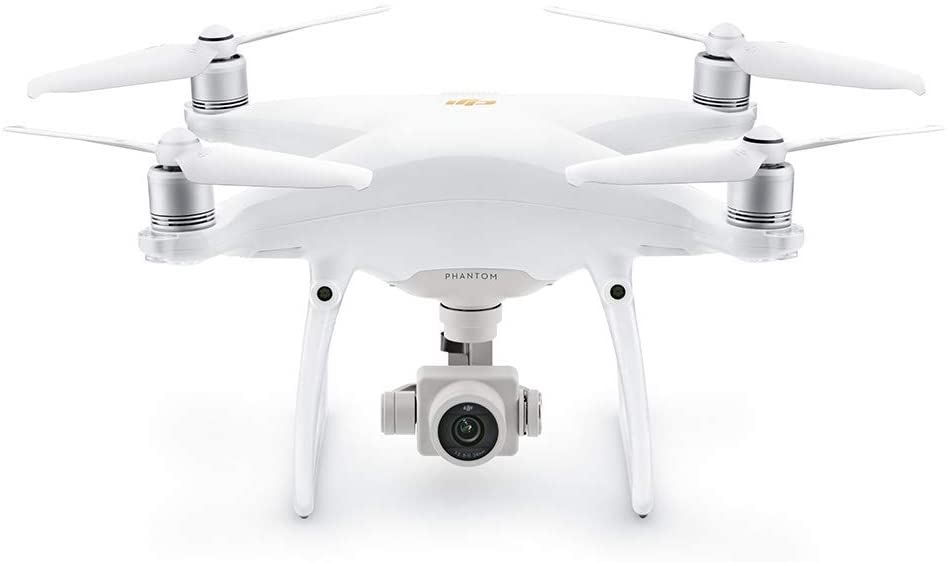
- Best Budget Drone for Sailing
For sailors who like to travel, a drone is an essential tool. If you don’t want to spend thousands of dollars on high-end photography equipment, we recommend you to take a look on the best budget drone for boating.
DJI Mini 2 Fly More
This incredibly ultralight, compact and foldable drone weighs only 249 g, being the best drone for lower budgets. It is the perfect drone for your sailing or boating activity as it can withstand the wind of level 5, the filming being stable even when you are flying along the coastline.
Mini 2 provides amazing image quality thanks to its 12MP camera, 4K/30fps video and a 3-axis motorized gimbal. It has an OcuSync 2.0 video transmission and allows up to 10 km transmission for HD video transmission (720p).
DJI Mini 2 drone has a powerful performance, with a maximum flight time of 31 minutes, enough time to capture the best photos and videos. It offers 4x digital zoom and with just a few touches (Quickshots feature), you will get the professional videos you deserve. Some of the best features are Follow Me and Auto Return, both of which perform perfectly.
In addition, the drone can fly the following pre-planned flights: Helix, Dronie, Circle, and Rocket.
If the drone is close to your phone, the DJI Fly app will detect and connect to it, synchronizing chosen photographs and videos at a rate of 20 MB/s.
In terms of storage, the drone has no internal storage, thus you’ll need to purchase a MicroSD card. It has a storage capacity of up to 256GB (MicroSD card).
- Excellent Features, Fantastic Photos, and Videos
- Wind resistance: Level 5
- Ultralight, Powerful and Easy to use
- 31 minutes of Flying Duration
- 4x Digital Zoom & 4k Ultra-Clear Video
- HD Video Transmission
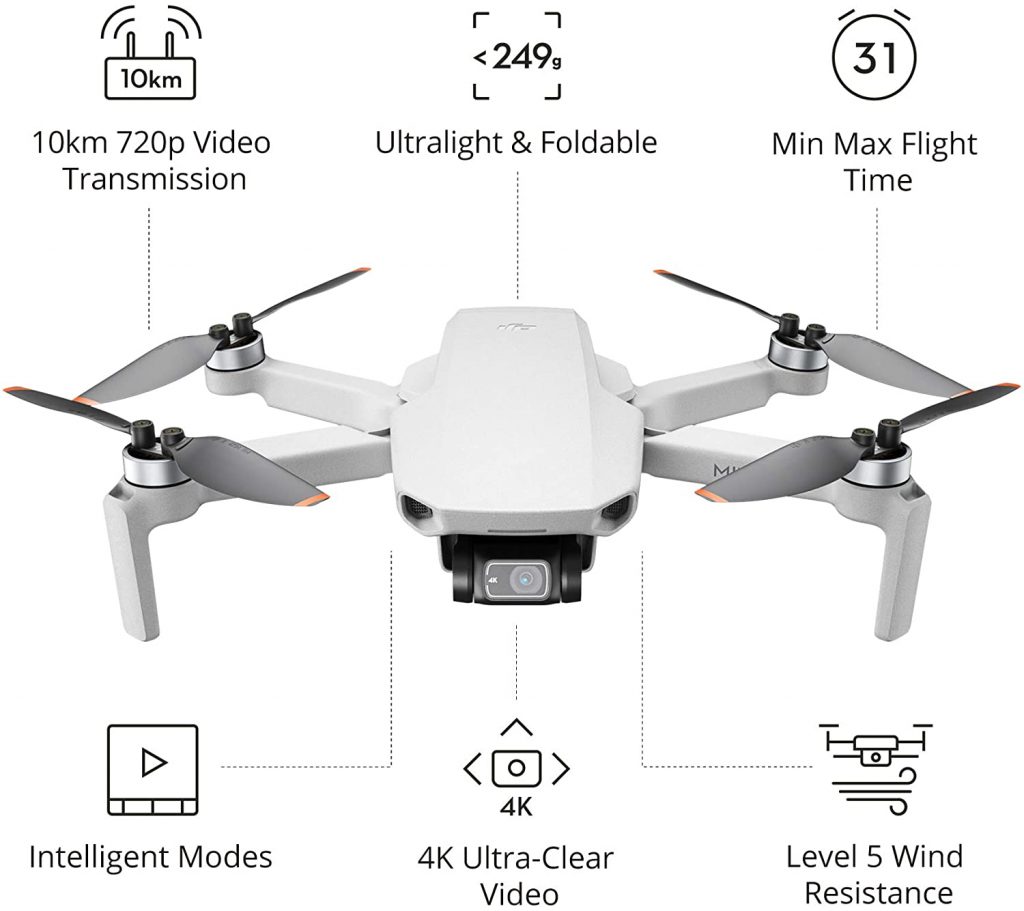
What Should I Look For When Buying The Best Drone for Boating?
Buying a drone can be complicated, especially if you’re new to the scene of drones. There are lots of features that drones have that make it confusing to know how to pick one.
Choosing the best drone for sailing and boating can be a tough choice. Before you purchase one, though, you need to do your homework. What are the core features of a drone and which ones do you need?
Flying Time
We all know that a great flying time (and range too) is extremely important for your drone to make your life easier.
The best drone for sailing and boating activities should have a minimum flight duration of 30 minutes. Since the flight time of a drone depends on the battery and the technology of consumption optimization, cheap drones can only fly 5 minutes, unlike high-performance drones that have a flight time of about 30 minutes.
The price of a drone is directly proportional to the maximum flight time. Therefore, we advise you to pay attention to this aspect in order to avoid landing the drone on the ground in a few minutes, in order to change its batteries.
While most DJI drone models have a flight time of approximately 30 minutes, the DJI Mavic 3 is the drone with the longest flight time, up to 46 minutes.
If you run out of a drone battery, after replacing a new battery, we advise you to let the drone rest for 5-10 minutes. This way, you will avoid overheating the engines.
Transmission Range
The farther your drone can fly from the transmitter, the more relaxed you will be.
If a cheap drone can have a range of only 30 meters, the models in this article can travel between 9 km and 15 km (depending on the model) without losing contact with the transmitter.
If you are wondering why this aspect is so important, you should know that when you have a better transmission range, the drone can reach more distant places, obtaining the most beautiful photos and videos.
The DJI Built-in OcuSync 2.0 function allows the drones to automatically switch between two frequencies, extending the drone’s maximum transmission distance up to 10 kilometers for further versatility. This transmission system is available for DJI Mavic 3, DJI Mavic 2 PRO, DJI Mavic 2 Zoom, DJI Mavic Air 2, and Phantom 4 Pro V2.0. The DJI Mavic 3 drone provides an O3 Plus Transmission system with offers you a 15-kilometer transmission range.
The speed of the drone is important when sailing and you want to use the Follow Me feature.
Any boater wants the drone to be able to keep up with the boat. The faster the drone can fly, the more special videos you can get.
Furthermore, you want to prevent losing the drone transmission, so the speed is critical.
The average top speed of drones is between 40 and 60 mph (63-96 km / h), but some can fly up to 70 mph, while cheaper drones can reach a maximum speed of 20 mph.
Camera Quality
Since the purpose of a drone is to take successful photos and awesome videos, the camera’s quality is one of the things to consider when buying a drone.
The camera is among the most expensive parts to make and this influences the price. Usually, the more expensive a drone is, the more it will be related to the quality of the camera.
Factors that influence photo quality are shutter speed, frame rate, aperture, and image stabilization. All of these factors will affect the quality of your photos. More megapixels also allow for greater details in the images, so if excellent images are important to you, consider this as well.
Wind Resistance
The drone’s wind resistance level is measured between 0 and 12, and describes the highest wind speed that the drone can withstand in flight.
Therefore, the better the drone, the better the stability in windy weather conditions. A level 5 wind resistance drone will be able to be maneuvered much easier in windy conditions compared to a level 3 drone.
Thus, the level of wind resistance of drones corresponds to a scale, classifying wind speed into 12 categories. Known as the Beaufort scale , the level represents an empirical measure that links wind speed to weather conditions.
Level 5 is a good level of wind resistance for drones, giving you the possibility for your drone to fly safely up to wind speeds of 10.7 m/s (24mph). All drones in this article have level 5 of wind resistance. This means that they are suitable for windy conditions.
| Wind Resistance Level | Wind Speed | Indicators |
|---|---|---|
| 0 | < 1 mph | Sea like a mirror |
| 1 | 1-3 mph | Smoke rises vertically |
| 2 | 4-7 mph | Small wavelets; Light breeze |
| 3 | 8-12 mph | Large wavelets; Gentle breeze |
| 4 | 13-18 mph | Small waves; Moderate breeze |
| 5 | 19-24 mph | Moderate waves; |
| 6 | 25-31 mph | Large waves begin to form; Strong breeze |
| 7 | 32-38 mph | Sea heaps up; Near Gale |
| 8 | 39-46 mph | Moderately high waves; Gale |
| 9 | 47-54 mph | High waves; Severe Gale |
| 10 | 55-63 mph | Storm |
| 11 | 64-72 mph | Exceptionally high waves; Violent storm |
| 12 | > 73 mph | Very rarely experienced; Hurricane |
Drones aren’t easy to fly and it takes time to learn how even the most basic of drones work. The best drone is one that’s easy to fly, offers good value for money and has great features. That’s why there are certain features that are non-negotiable.
There are tons of different types of drones and each has varying types of features. When buying a new drone it is important to know what features you should be looking for to get the most out of your purchase.
- Return to Home . This is a must-have feature. This is a highly helpful safety feature that helps in returning your drone to a safe, accessible landing site. Most DJI drones allows you to command the drone to return to the Home Point (RTH) when needed, when drone’s battery level depletes to a specified level (Low-Battery RTH) or when it happens to lose signal (Failsafe RTH).
- Follow Me . Many drone models include a Follow Me feature that allows the drone to follow you or another item and record a continuous video of the tracked object without you having to operate the drone manually the entire time.
- 3-Axis Gimbal . This mechanism that keeps your camera stable while allowing it to pivot with the machine’s motions is one ofo the things to consider when buying a drone. The various motions that a drone may do are characterized by the 3 axes (pitch, roll, and yaw). A three-axis gimbal can assist your drone’s camera in remaining stable even when in flight.
Why Would You Want a Drone for Sailing?
There are several excellent reasons to carry a drone boating with you. With the evolution of technology, drones have become more compact, high-performance, accessible, and easy to use.
Thus, more and more sailors and boaters have started to use sailing drones as a way to take awesome photos and professional videos. This is also because most drones are equipped with smart features such as “Return to Home” or “Follow Me”.
Here are the reasons to buy a drone for sailing.
Awesome Photos when Sailing
If you are a sailor, it is pretty obvious how a drone can fit into your hobby. In fact, one of the best uses for a drone in relation to sailing is the aerial photography aspect of it (or motion pictures). If you want to get better shots of you foiling downwind, kitesurfing, or whatever type of sailing you enjoy most, an aerial view can help.
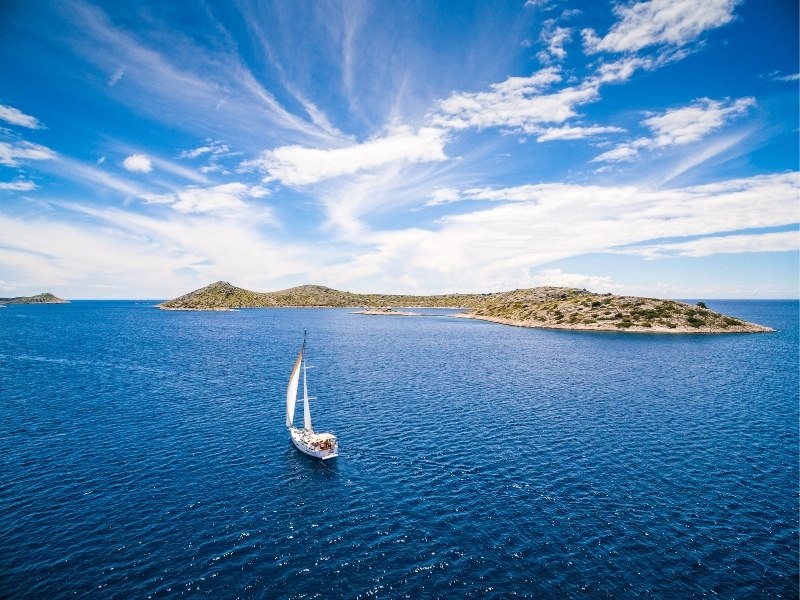
Professional Videos
If you’ve spent any amount of time on the water, you already know how amazing the scenery is. Whether you’re cruising through an estuary or out on the ocean, the blue hues and vastness of the natural world is breathtaking. But what if you could capture that beauty in a whole new way? Thanks to these great drones for sailing, more than likely you can!
High-performance filming, these higher-end drones record in higher FPS, giving you the opportunity to get awesome videos.
Whether you want to get aerial footage with your boat while sailing or simply make a video with the people on the boat while having fun, these drones are the best choice.
Great Memories
Sailing is a thrilling experience. When you’re out on the water, you feel free and your adrenaline rush is off the charts.
All of us love sailing as it is an excellent way to get out to sea and feel the wind. There is nothing better than the freedom it gives you being on top of a sailboat. We can count on that with this sport, you have to have a true passion for it. It will be worth your while in the end though.
You should try getting yourself a drone if you want to get the best possible results. A drone is a perfect way to create great sailing memories that will last forever. Besides the fact that drones can capture the whole boat in the image, the aerial images and captivating videos will excite you every time you watch them.
Sailing provides some of the best memories in your life.
Racing and Regattas
So you’re about to enter your first sailing regatta or perhaps you’ve already participated in a few. However, you’re wondering if it would benefit you to have a drone at the event.
If you have ever tried to film yourself sailing at a regatta, then you’re probably aware that it can be quite hard. You need to find a way to mount your camera on the boat, but there’s nothing accessible.
No wonder many sailors use this drone in regattas, as they have higher and faster speeds. Many boaters also enjoy drone racing.
How to Fly a Drone from a Boat
Many people do not know that you can fly a drone from a boat. Drone sailing is one of the coolest ways to relax and have fun with friends.
How to fly and rig a drone from a boat is probably the biggest curiosity of any boater. Although there are several ways you can set up your drone for boating and sailing, here is the safest process.
1. Check the weather conditions
It is advisable not to fly in rain or wind conditions above the wind resistance level of the drone. It is best to use one of the best wind apps to check the wind predictions. It is recommended to fly the drone only if the wind speed is below 15 knots (less than 20 mph) and the chance of precipitation is below 10%.
2. Make a Pre-Flight Checklist
You should always have a pre-flight checklist in order to be checked before you fly. This helps you make sure everything is fine with the drone and you can fly safely. Here’s what your pre-flight checklist should contain:
- Check the physical condition of the drone, more precisely look for cracks in the propeller;
- Check the regulations for the area where you want to fly. You don’t want to find yourself in a no-fly zone;
- Check the condition of the batteries, as they are recommended to be 100% charged;
- Check that the controller and the drone are properly connected;
- Calibrate the compass before every flight;
- Check your camera settings and make sure there is a memory card in the drone if you intend to shoot images or movies;
- While flying, keep an eye on the drone’s settings.
3. Taking off and Landing your Drone on a Boat
The most important aspects of a drone flight are takeoff and landing.
Before taking off, make sure you are in an open area to fly the drone without worries.
When you are ready to take off your drone, you can follow the safety list:
- Before you start your drone, come to a complete stop on the boat. This permits the inertial measurement unit’s (IMU) electrical sensors to settle;
- Turn off the visual positioning system (VPS) over water because the movement of water can cause the drone to act improperly: sonic and optical sensors may have difficulty locking in on something fluid;
- Because the boat will have moved from the take-off position after a few minutes of flight, you must set the home point to Dynamic mode so that the remote control is always the return-to-home point.
- Start the drone;
- Check the battery level again and confirm the drone settings;
- If you fly your drone from your boat, the best method is you launch by hand because most boats are made of a lot of metal, which causes compass errors; Lifting the drone off the metal surfaces can eliminate the possible compass errors.
- If you fly your drone from land, slowly push the throttle up (the left stick) to begin the propellers spinning. Then pause. You can repeat this many times until you’re satisfied with the throttle’s sensitivity.
- Increase acceleration to raise the drone to eye-level altitude for about 10 seconds;
- Listed for abnormal sounds. Thus, in case of noticing a problem, you will be able to land the drone to fix the problem;
- If all goes well, the drone’s altitude begins to rise.
When you are ready to land the drone, you can use smart features like Return to Home and the drone does everything for a safe landing. Once landed, make sure the propellers have stopped moving.
If you want to hand-catch the drone you should know that catching a drone by hand is extremely risky. That’s why it’s recommended to wear a tight-fitting leather garden glove while preparing to hand-catch the drone. Gloves will not completely protect your hand from the propellers, but they will help.
Be aware of the direction and speed of the water current and the wind as the landing process will depend on the drift of your boat.
When landing in the hands of the catcher or on the boat, the drone’s engines will stop for a few seconds harder than on land, because the boat is in constant motion and the drone will not “recognize” that it is on land.
After the engines have stopped, turn off the drone (turn off the battery power) before moving the drone or removing the propellers.
Drone boating is a fun and exciting new sport that is gaining momentum around the world. As a drone boater, you understand how fun and exciting it is to be able to take your drone flying.
So, what is the best drone for boating? Knowing which one is best for your own specific purpose will enable you to make an informed decision.
A drone for sailing is a tool that every sailor should have. Not only drones make great pictures, but they can help you if you get in trouble at sea.
We hope we gave you a solid starting point for choosing the best drone for sailing.
F.A.Q. about the Best Drones for Sailing and Boating
Which drone has the longest flight time.
DJI Mavic 3 is one of the best drones with the longest flight time: 46 minutes.
How far can I fly a drone?
A high-end consumer drone, such as the DJI Mavic 3, has a range of up to 9.3 miles (15km). Also, Mavic 2 PRO, Mavic Air 2, Mavic 2 Zoom drones have a transmission range of 10 km.
What is the longest lasting drone battery?
The DJI Mavic 3 has the longest battery life of any drone on the market. The Mavic 3 is rated for up to 46 minutes of flying duration on a full battery charge, giving you extra time to capture the best shots, videos, or simply fly around to explore the surroundings.
Can I land a drone on a boat?
You can land a drone on your boat. As a landing pad, you can use a wet towel if you intend to land your drone on a boat deck. It will perfectly stick to the deck and legs of the drone.
Can I fly my drone from a boat?
You can fly your drone from a boat. DJI drones are the best models to fly from boats even if you have to launch and catch the drone manually (hand-launch and hand-catch).
What is the best drone for windy conditions?
DJI Maic Air 2 is probably the best drone for windy conditions because it is very light (20.01 oz / 1.25 lbs / 570 g) and has a level 5 wind resistance.
Leave a Comment Cancel Reply
Your email address will not be published. Required fields are marked *

Best Drones for Boating, Kayaking, and Sailing
By: Author Elizabeth Ciobanu
Posted on Published: July 19, 2023 - Last updated: April 3, 2024
Are you into water sports, such as boating, kayaking, and sailing, and looking for a drone to document your activities? You’ve come to the right place.

From FPV to cinematics to drones you can use for fishing, there’s a drone out there for you; you just have to find the right one.
So, which are the best boating, kayaking, and sailing drones?
The best boating, kayaking, and sailing drones include the DJI Avata, DJI Mavic 3 Classic, SwellPro Splash Drone 4, PowerVision PowerEgg X, and the DJI Mini 3 Pro. These drones will suit you whether you want to create cinematic footage, shoot underwater, or even use a drone for fishing.
Keep reading to learn more about these drones and some tips on using drones for water sports.

To help, we’ve identified and reviewed the best drone courses for beginners and professionals.
1. DJI Avata

Pro-View Combo (DJI Goggles 2) + Fly More Kit - FPV Drone UAV Quadcopter with 4K Video, 2 More Batteries, and a Charging Hub for Up to 36-Min Flight Time, Super-Wide 155° FOV.
✅ Pros
- Excellent video quality
- Stable transmission
- Long flight time for an FPV drone
❌ Cons
- It could be more expensive than building your own drone
- Due to its weight, it may be subject to weather restrictions, such as strong winds
FPVs for sports or any other activity are quickly gaining popularity because FPV drones have a dynamic and fast-paced view you can’t get from a regular drone.
The shots also need the drone to get very close to the subject, fly in tight spaces, and perform a wide range of maneuvers, as you can see in this video of an FPV drone filming a kayaker and this video of an FPV drone filming surfers.
Most FPV pilots swear by building their drones, with control over the transmission, the goggles to use, speed, and additional third-party hardware such as action cameras.
However, it takes time and money to assemble the best FPV setup. That’s why I recommend the DJI Avata.
Avata is the newest FPV drone released by DJI, known for producing some of the best camera drones.
If you’re a beginner and don’t know much about FPV, Avata is one of the most stable systems you can start with and move up to the more complex systems.
Don’t get me wrong; Avata does have a learning curve, but it’s a perfect RTF FPV drone.
So what features does it have that make it great for boating, kayaking, and sailing?
Avata comes with OcuSync 3+, the latest transmission system in DJI’s consumer drones.
This transmission system ensures a stable video transmission at up to 6.2 miles, making possible shots like the one shared above.
Secondly, Avata has a built-in 1/1.7-inch CMOS camera with an f2.8 aperture and can shoot 48 MP still images and videos of up to 4K at 60 fps.
You can use this camera to create high-quality footage of your sailing, boating, or kayaking escapades.
If you have the budget and find that cameras like the GoPro or the DJI Action camera produce better footage, you can mount them on Avata.
Thirdly, Avata is beginner-friendly. The beginner modes allow the drone to hold its altitude, making it easier for a new pilot to understand the controls.
Once experienced enough, you can switch to Manual Mode and fly Avata like an FPV drone.
Lastly, Avata comes with an 18-minute flight time. With its stable transmission, you can fly further away from the controller without losing the signal or depleting the battery.
If you lose the signal, you can set the drone to automatically return home, which is quite effective.
What’s more, with a speed of up to 60 mph, you can rest assured this drone can keep up with the subject, especially in fast-paced environments.
» MORE: Best Budget Drones for Fishing
2. DJI Mavic 3 Classic

- DJI RC remote controller
- High-quality footage
- Advanced tracking system
- 360-degree obstacle detection
- Long flight time
- The learning curve for more complex maneuvers
- It may be more expensive than other budget-friendly models
The DJI Mavic 3 Classic is perfect for creating high-quality footage of your boating, sailing, or kayaking activities without spending much money.
With a 4/3-nch Hasselblad camera, you can take footage in 5.1k at 50 fps and 4K at 120 fps.
You can also use the Mavic 3 Classic to create tracking footage thanks to the up-to-date ActiveTrack 5.0, 360-degree obstacle avoidance, and excellent camera.
ActiveTrack 5.0 is designed to detect various objects, including boats. It also has an additional feature that allows you to change the direction the drone should follow you from.
This works similarly to Skydio’s feature; the only difference is that you don’t have a beacon as an additional controlling device.
Sometimes drones with obstacle avoidance and tracking features have been known to move around a lot as they track the subject.
DJI has tried to fix this feature by adding a “Nifty” option in the obstacle avoidance settings, which helps minimize this movement, ensuring smoother video.
You can also use the Spotlight feature, where the drone is always focused on the subject, and all you have to do is execute any maneuvers you have in mind.
Another big plus for the Mavic 3 Classic is the 40-minute flight time, which gives you enough time to record all the necessary footage.
When it’s time to land, it’s possible to land it in your hand, especially if you’re taking off from the boat. Practice this on the ground first to get the hang of it.
Below is a video of the Mavic 3 Classic tracking a boat.
3. SwellPro Splash Drone 4

RC Drones Dynamic Return to pilot, Fishing Drone Boat Mode Equipped with floating foams, Unrivalled-performance Propulsion System, 4k Drone Innovative Smooth+ Flight Control, All-new IP67 fishing drone seawater-proof
- High payload capacity for adding other accessories
- Offers a wide range of activities to do when sailing
- It’s bulky, heavy, and not easy to move around with
- The whole setup of landing gear and accessories makes it a more expensive option
The SwellPro Splash Drone is a larger drone designed to help you take your boating and sailing escapades to the next level.
Whether you want to fish (yes, you can do that with a drone) or even take underwater shots, this drone is designed for that. Here’s why.
The SwellPro Splash Drone 4 comes in an IP67-rated casing, allowing it to get close to the water and submerge without damaging the internal parts.
This drone is quite heavy, so you can’t land it in your hand, but the waterproof build makes it possible to land it on the water, and it will still be fine.
Secondly, this drone has a 2 kg payload capacity.
If you love fishing and would like to see how it works with a drone, this payload capacity is enough for you to add a bait-dropping mechanism which you can get from the manufacturer, and even catch some small fish and transport them to the shore.
Before fishing, use the drone’s high-quality camera and sonar fish-finding technology.
This saves you time compared to finding the fish manually, and you can even use it for larger fishing projects where you scout for fish and then use traditional fishing methods.
With a three-mile range, you can scout for fish while on land or in a three-mile radius from your boat, minimizing how often you will have to use the boat.
And you will not have to worry about the batteries getting depleted since you get a 30-minute flight time, a long enough time for a drone its size.
One fascinating feature that sets it apart from the rest is the boat mode.
This mode allows you to add floats to the lower part, so the drone can cruise on water like a boat.
You can then explore the underwater sceneries, take photos, explore, or just have fun in the water.
Below is this drone’s boat mode in action.
» MORE: Best Beginner Drones with Follow Me
4. PowerVision PowerEgg X Waterproof Drone

Multi-purpose waterproof drone for flying and landing in inclement weather & water sports photography.
- Waterproof casing makes it excellent for close-to-water activities
- It’s versatile since it can also work as a handheld camera
- Decent camera
- Ability to add audio as you film
- The casing, landing gear, and other accessories are at an extra cost
This is another waterproof drone that you can consider. It’s cheaper than the SwellPro Splash Drone 4 and has some features that set it apart from the other drones on our list.
As I mentioned, it’s a waterproof drone, though the casing is optional. You can omit the waterproof casing if you don’t think you will use it very close to the water and want to save some cash.
However, for the best experience, I recommend getting the casing.
One of the unique features of the PowerEgg X is the ability to remove the propellers and use this drone as a handheld camera.
You can use it to film footage, maybe at the beach or as you head to the boat, then reattach the propellers and create aerial footage, then combine all the footage into a reel with some cool transitions.
Another great feature is the SyncVoice technology, which allows you to record and synchronize audio with the footage.
Adding audio corresponding to the footage is one of the best ways to spice up drone footage, and the PowerEg X drone allows you to do this as you film.
The camera is also decent, filming up to 4K at 60fps. Other features that can help spice up your footage as you film include AI track, slow motion, and timelapse.
Like with the SwellPro Splash Drone 4, you can attach landing gear to the PowerEgg X, allowing you to land this drone on the water since it may be difficult to land it in your hand due to its design and weight.
Below is an overview of the PowerEgg X.
5. DJI Mini 3 Pro

Lightweight and Foldable Camera Drone
- 4K/60fps Video
- 34-min Flight Time
- Tri-Directional Obstacle Sensing, Integrated RC and screen
- An affordable and portable option
- Obstacle avoidance and tracking features for enhanced filming experience
- Portrait mode
- Decent footage quality for a mini drone
- Limited obstacle avoidance
- The smaller sensor may not be ideal for low-light conditions
- It’s too light and can’t handle strong winds
You will love the affordability and portability of the DJI Mini 3 Pro if you’re looking for a cheaper drone to document your escapades in the waters.
The Mini 3 Pro weighs just under 250 grams with a 34-minute battery, so you will not need to register it if you will be using it for fun.
The only exception is if you get the larger battery, which lasts at least 40 minutes. In such a case, registering the drone is worth it since you will get more flight time to get enough footage.
Regardless of the battery you choose, the drone will still be light enough to land in your hand when on the boat or kayak.
The foldable design also makes it easy to move around with since it practically fits on your palm when folded.
The Mini 3 Pro has obstacle avoidance and tracking features that will come in handy when filming your kayak, boat, or any other water activity.
However, it only detects obstacles in three directions, and you can only track a subject in Trace and Parallel modes.
Either way, you will get more than you bargained for a drone that costs less than $1,000.
The 1/1.3-inch sensor may be small and limited for low-light conditions, but it still produces surprisingly good footage in optimum lighting conditions.
For content creators who would like to share their footage directly to social media, you will love that this drone’s gimbal can switch from landscape to portrait mode at the click of a button.
You also get access to MasterShots, QuickShots, Hyperlapse, and Panorama, which can help you shoot and edit cinematic footage quickly.
Like most DJI drones, you will enjoy stable video transmission and signal strength thanks to the OcuSync 03 video transmission system.
Below are some boat videos captured with the Mini 3 Pro.
6. Drone Sky Hook

Drone Fishing, Bait Release, Load Delivery, Search and Rescue and Fun – U.S. Patent - by DRONE SKY HOOK
- Lightweight
- Easy to attach to the drone
- Allows for the dropping of a wide range of objects
- It’s not compatible with all drone models
This is not a drone but an accessory.
If you have the DJI Mavic 3, Phantom, or Mavic Air 2 series drones and would like to use them for more than just filming, you can get the Drone Sky Hook, which allows you to drop objects.
You can use it to drop baits, catch small fish, carry them to the shore, and do other fun activities.
In a search and rescue mission, you can drop items like phones or life jackets if the weight is within the drone’s payload capacity.
This device weighs only 50 grams, so it will not weigh down your drone, but you will need to find out your drone’s payload capacity before you can use it.
Below is the Sky Hook in action.
Tips for shooting drone footage from a boat or kayak
Below are some tips for using drones when boating, sailing, or kayaking.
- Familiarize yourself with the regulations – Various regions have specific regulations regarding flying drones in marine environments. Ensure you familiarize yourself with these regulations so you don’t get into trouble. Besides the regulations, you should also practice safety when flying near marine animals to avoid startling or injuring them.
- Do not set the home point when flying from the boat or kayak – This is because the drone will return to the last saved point in case of a lost connection, and you may have moved to another area by then. If you have to set the home point, set it to the controller’s location if you will have the controller with you.
- Check the weather – Water bodies are sometimes characterized by strong winds or precipitation. Drones like the DJI Mini 3 Pro will have a tough time flying in such conditions, and even though a drone is advertised to handle strong winds, the battery may get depleted quickly, making it difficult to land.
- Beware of interference – When flying over water, you may experience a lot of interference from other boats and structures. Do not trust what the manufacturer says. Test the drone and observe how far it can go based on where you fly.
- Maintain privacy – You will meet other people engaging in boating, sailing, or kayaking activities. Do not film them if they do not want to be filmed, and observe local laws on privacy.
- Choose the right drone – Determine what you must do when boating and choose a drone suited to that activity. Waterproof drones are useful if you fly close to the water’s surface.
- You may need a spotter – When flying drones like FPV drones, you may need a spotter to help guide you when you can’t see the drone. This will minimize crashes.
- Invest in safety equipment – Since your drone could crash, invest in safety equipment such as floating devices to prevent the drone from sinking and to help with retrieval.
For more tips on flying drones over water, check out our video on YouTube.
» MORE: Tips for Flying a Drone Over Water (Video)

The Absolute Best Drones For Sailing

Sailing is one of the most enjoyable ways to spend your free time. Exploring the open sea is a great way to relax and unwind. Whether you are fishing or meandering along the coastline, you will be taking in the beauty that the world has to offer.
What better way to capture these moments than with the use of drone camera technology? The ability to take such unique and interesting photographs and video from the sky is an almost entirely new phenomenon. The use of drones has only increased in recent years. Previously it was just the super-wealthy or the military that had access to such incredible technology. Now, you can buy these advanced drones for yourself for just a few hundred dollars.
This article will not only cover why a drone is so great for taking sailing but what you should be looking for in your drone. Not all drones were created equal, some simply can’t stand up to the winds of the high seas. Some are simply not reliable enough and some are far too expensive.
This article will give you the knowledge and guidance to pick the best drone for you, even making some solid recommendations that would suit almost anyone’s needs. You don’t need to be an expert in drones when you have an article like this at your disposal.
Table of contents
Why would you want a drone for sailing?
There are plenty of great reasons for bringing a drone sailing with you. Whether you are looking to spend a lot on your drone or are looking for a more budget option, they all offer similar things. Here are the most common reasons someone might bring a drone with them:
Photography
Drones are far better at taking still images than high-quality videos, this is especially the case with the lower end drones. It doesn’t take long before even a complete novice will be able to take some pretty great photos. Being at sea offers plenty of great photo opportunities, it could be as simple as the sunset or as special as whales or dolphins breaching the surface of the water. The coastline provides so many opportunities that you simply couldn’t get any other way. Whether you do photography professionally or for fun, this is an opportunity you won’t want to miss.
Drones are very good at taking videos. The higher-end ones will be able to record in much higher FPS, but even the lower end ones will provide the chance to take some pretty cool videos. Whether you are recording the scenery or the boat itself, you will be able to take some unique and interesting videos. If you are planning to video you and your friends/family sailing you will be able to get some unique shots this way. The only alternative to using a drone for these shots would be hiring a helicopter. That may be outside most people’s budget.
Drones are not just for photography, they can also be great fun for racing. Some drones can move very quickly. Drone racing is an incredibly intense, and incredibly fun, sport that anyone can take part in. Drone racing is an actual sport with proper leagues you can enter, this may be a longshot for a complete novice but it could be an exciting goal to aim for.
Making memories
Whether you are photographing yourself or videoing yourself, a drone is a perfect way to record these memories for years to come. With a drone, you can get amazing family photos that don’t require someone to be excluded whilst taking the picture.
What are you looking for in your drone?
There are so many drones on the market, yet some are better suited to life at sea than others. There are some features that you should look for in any drone you plan to buy. Different drones will excel in different areas, but they should all be somewhat decent in the following areas, otherwise, you risk running into avoidable problems.
Speed is something that may not matter to everyone. You might not be planning on racing your drone, but you will still want a decent speed output. Speed is important for two main reasons. First, higher speed drones can create more interesting and exciting videos. Secondly, and most importantly, if your drone isn’t able to keep up with your boat while you are sailing you are in trouble . You may end up losing your drone completely if your battery starts to run low and you cant get it back to the boat in time. Additionally, if you start to pull too far ahead of your drone you may lose signal with it and then you have essentially flushed hundreds of dollars down the drain.
Battery life
The longer your battery life, the longer you can use your drone for; of course. If you are at sea finding your drone ran out of juice after just 5 minutes will be very disappointing for you. Depending on the model of your drone you could have anywhere between 15-60 minutes of power. Knowing your battery life and bringing your drone back well before it dies is important to avoid losing it. If your drone dies out at sea you arent likely going to ever see it again.
Stability is always important when considering which drone you would like to buy. This is even more important at sea. The high winds are going to be unforgiving for small drones with poor stability. If your drone isn’t sturdy enough you may find it getting blown away into the distance or knocked completely out of the sky. If it isn’t strong enough to withstand high winds, it isn’t strong enough to survive out at sea. Furthermore, some drones are fitted with self-stabilizing cameras in anticipation of windy conditions. If you don’t have one of these drones your videos and pictures are going to be very blurry.
Camera quality
Not all drones were created equal. Not all cameras were created equal. It is then safe to assume that not all drones cameras are created equal. You are going to get what you pay for here. The more expensive a drone is will typically be tied to the quality of the camera. The camera is one of the most expensive parts to manufacture and this influences price.
Price matters. It doesn’t just indicate how good a drone will be, it can completely price some drones out of the market for you. Your typical high-quality drone will be between $700-$3,000. Any less and you run the risk it won’t be sturdy enough to survive at sea, any more and you may be overpaying for what you realistically need. Unless you are a professional who needs a drone to earn a living, $3,000 for a drone is about the absolute max you need to be paying.
So without further ado, let's dive in to the 5 best drones for sailing:
The 5 best drones for sailing
Any of these drones would be great if used when sailing. They are all generally pretty stable, with decent battery life and a decent camera. You are, of course, going to get a better drone if you choose to purchase the most expensive on the list (DJI Mavic Pro) than the cheapest (Parrot Mambo). However, any of them would likely suit your needs. Whichever is best for you probably depends mostly on your budget. Here are 5 of the best drones for taking sailing with you.
1. DJI Mavic 2 Pro
This drone is one of the best currently available on the market. It may cost $1800 ($2,499 as a bundle ) but you are certainly getting your money’s worth. This drone is fitted with a 20-megapixel camera with inbuilt stability technology to improve picture and video quality, even in the windiest settings. This is perfect for use when sailing. This drone is incredibly strong and even comes with 8gb inbuilt storage. It is SD card friendly meaning you can fit up to 128gb of further storage onboard your drone. The DJI Mavic 2 Pro has a flight time of 31 minutes and can reach speeds of 44mph in good conditions.
2. DJI Inspire 2
The DJI Inspire 2 is on the more expensive side, but with good reason. This drone is fitted with a 5.2k camera capable of capturing stunning images and videos. It may be on the high end of the price spectrum but you are certainly getting what you pay for. There are two different camera options available for this drone, one is slightly heavier than the other. This is why the flight time can vary between 23-27 minutes. Be sure to know the limits of your drone when choosing which camera you choose. The maximum speed is also tied to the camera. The lighter the camera, the faster the drone will be.
3. Parrot Anafi
The Parrot Anafi is far more affordable than some of the other drones on this list. Whilst it is still a great drone, you are getting be getting fewer features than its pricier counterparts. But, it is far more affordable for most people and is a great first drone. The Parrot Anafi is capable of filming in 4k and has a flight time of 25 minutes. This drone is great for taking pictures, its 21-megapixel camera and stabilizing technology will ensure high-quality images every time.
4. DJI Phantom 4 Pro V2.0
The DJI Phantom 4 Pro (V2.0) is capable of filming 4k videos at 60 frames per second. It is fitted with a 20-megapixel camera and is perfect for the avid photographer. The drone’s sleek white look is very futuristic, it certainly looks like a $1700 drone. Its battery life is around 30 minutes, which is pretty average. It can reach speeds of 45 miles per hour in good conditions and is more than capable of withstanding the strong winds at sea. This drone is pretty good , if you are looking for a reliable, mid-priced, drone this is the one to go for.
5. Yuneec Typhoon H Plus
The Yuneec Typhoon is on the more expensive side. It too comes with a 4k capable camera that can shoot 16 megapixel still images. It too has a flight time of about 25 minutes and it too can go upwards of 40 miles per hour. But then why is it so expensive? Because it is very stable. If you are looking for the best drone for taking sailing this may be the one for you. It is a hexacopter (6 propellors) meaning it is capable of withstanding even the strongest of winds. Even in the worst conditions your videos will be well stabilized. If that’s important to you, the Yunnec Typhoon is second to none.
No matter which one of the above drones piques your interest the most, you will be getting a great quality drone. They may vary in price but they are all reliable drones. Taking a drone sailing with you can be so much fun; if you are on the fence about getting a drone to accompany you next time you go sailing, perhaps start off with the DJI Spark. If you are not new to the world of drones and are looking for the top of the line model, you can’t go wrong with the DJI Mavic Pro.
Hopefully, this article has helped give you an idea of what to look for when you choose your drone for sailing. Even if you don’t choose one from the above list, if you keep the, “What are you looking for in your drone?” section in mind you won’t go wrong.
Related Articles
Daniel Wade
I've personally had thousands of questions about sailing and sailboats over the years. As I learn and experience sailing, and the community, I share the answers that work and make sense to me, here on Life of Sailing.
by this author
Personal Health and Gear
Entertainment
Most Recent

What Does "Sailing By The Lee" Mean?
October 3, 2023

Best Sailing Duffle Bags: Top Picks For Boat Travel
September 27, 2023
Important Legal Info
Lifeofsailing.com is a participant in the Amazon Services LLC Associates Program, an affiliate advertising program designed to provide a means for sites to earn advertising fees by advertising and linking to Amazon. This site also participates in other affiliate programs and is compensated for referring traffic and business to these companies.
Similar Posts

The Best Sailing Schools And Programs: Reviews & Ratings
September 26, 2023

How To Choose The Right Sailing Instructor
August 16, 2023

Best Sailing Racing Electronics
July 5, 2023
Popular Posts

Best Liveaboard Catamaran Sailboats
December 28, 2023

Can a Novice Sail Around the World?
Elizabeth O'Malley
June 15, 2022

4 Best Electric Outboard Motors

How Long Did It Take The Vikings To Sail To England?

10 Best Sailboat Brands (And Why)
December 20, 2023

7 Best Places To Liveaboard A Sailboat
Get the best sailing content.
Top Rated Posts
© 2024 Life of Sailing Email: [email protected] Address: 11816 Inwood Rd #3024 Dallas, TX 75244 Disclaimer Privacy Policy
Free & Fast Shipping for Order $900+
30-day Return Guarantee & 1-year Warranty
Duty & Tax included for USA & Australia.
Online Tech Support & Repair Service

- Fisherman MAX (Advanced)
- Fisherman FD3 (Advanced)
- SplashDrone 4 Fishing Edition
- Compare Fishing Drones
- Fisherman FD1 Plus (FD1+)
- Fisherman MAX (Basic)
- Fisherman FD1
- SplashDrone 4 Filming Edition
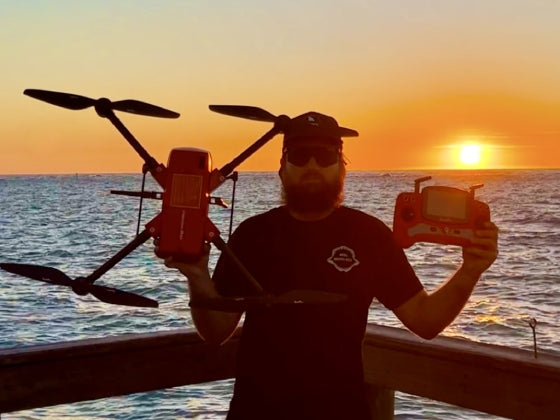
- SplashDrone 4
- Fisherman MAX (FD2)
- Fisherman FD3
- SplashDrone 3+
- Brand Ambassador
- Drone Fishing Charter
- Drone Fishing Master
- Tournament Sponsorship
- Drone Fishing
- Sailing & Boating
- Falcon Training
- Track Your Order
- Warranty Policy
- Where to Repair
Best Drone For Sailing & Boating
Swellpro splashdrone 4, every sailor's dream drone.
Whether it’s for filming your yacht or explore hidden beaches, many boating and sailing enthusiasts like to carry a drone with their journey at sea. However, standard drones like DJI are not built to survive the marine environment. And this is where SwellPro waterproof drones find its place in the boating world since 2015.
Seawater-proof Fly and Control
Don’t risk the safety of your crew and your drone by hand-catching the drone on a boat. You can easily and safely land SplashDrone 4 on the water as it is totally waterproof and coated to resist saltwater corrosion. Even the remote controller is waterproof so it is not afraid of wave splash.
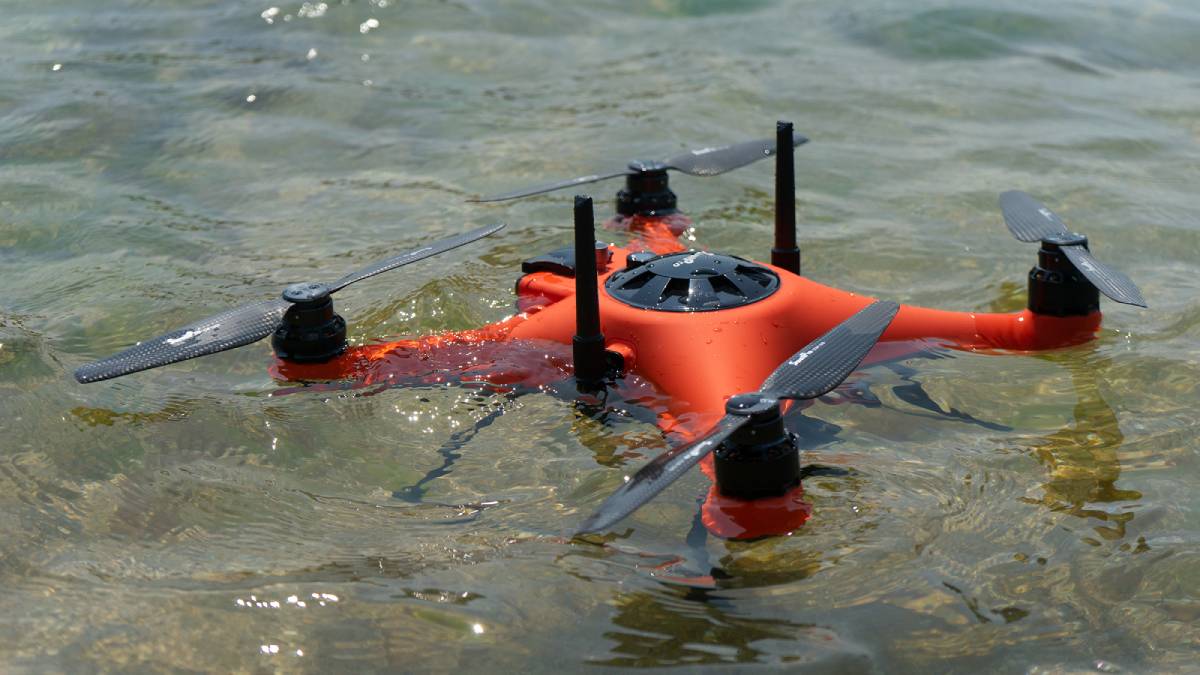
Floating Design
Corrosion-free.
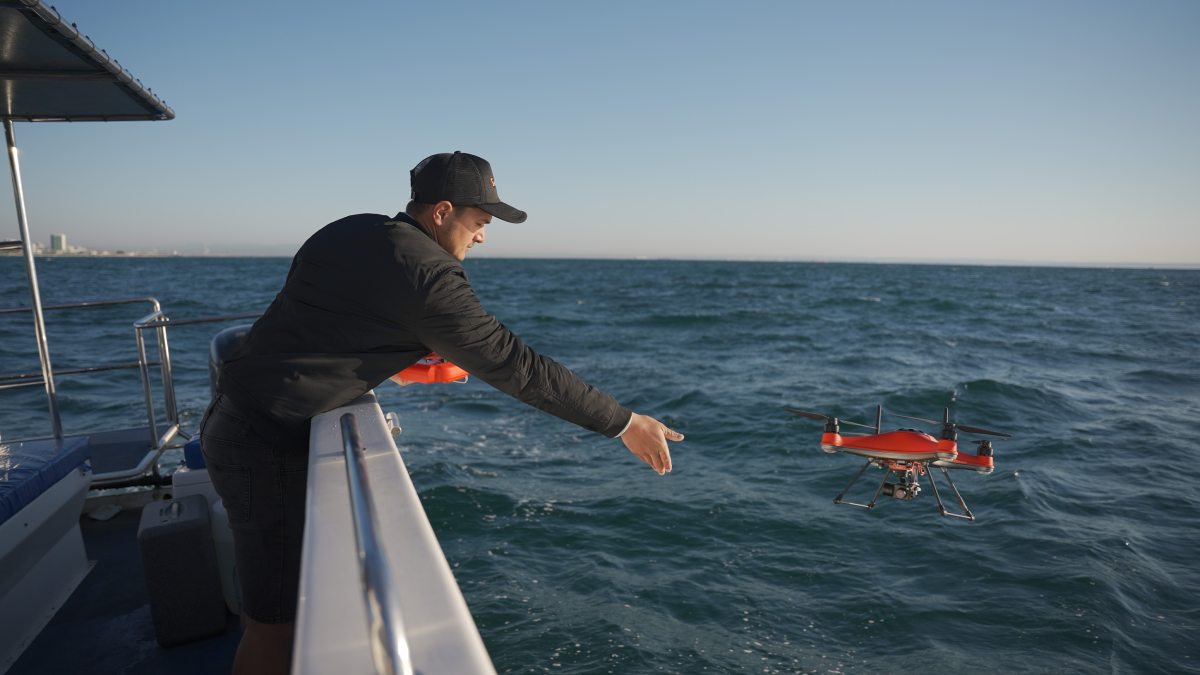
Fly Against The Wind
The high propulsion system and aerodynamic design empowers the SplashDrone 4 to fly without any issues in strong wind at sea. You never need to worry about your drone blowed away by strong wind.
Wind resistance Beaufort force 33 knots / 31 mph / 60 km/h
Film Your Boat in a New Perspective
SplashDrone 4 can take high-resolution photos and smooth videos with a 4K camera stabilized by 3-axis gimbal. On top of that, there are several innovative flight features on the drone for cinematic sailing footage in all kinds of boating situations.
Shot on SplashDrone 4
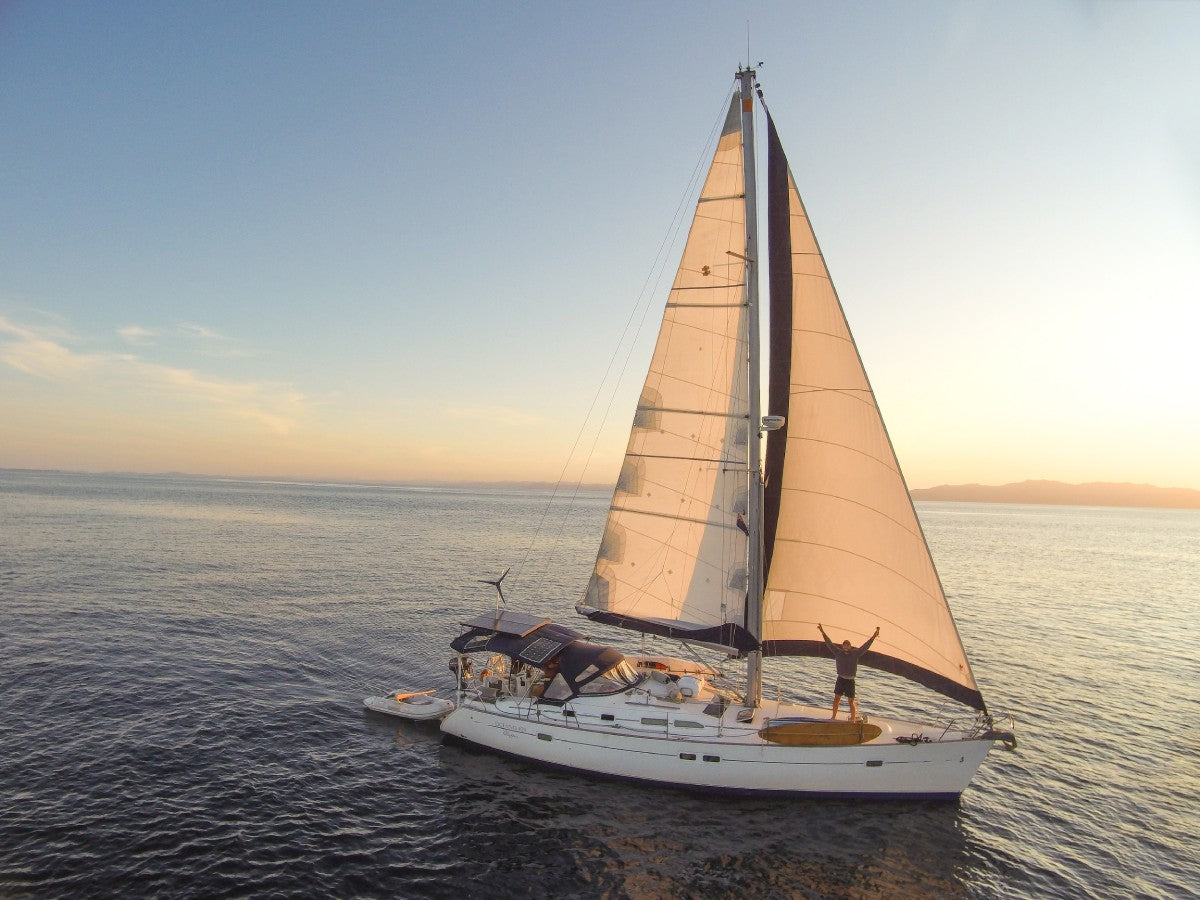
Cruise Mode
In Cruise mode, SplashDrone 4 is going to maintain the direction and speed of your input after you release the remote controller. You can change the direction of the drone with a single joystick. Keep a moving boat in the frame while you concentrate on camera angles and composition.
Dramatic and abrupt movements of a drone can lead to shaky footage. Engage our innovative Smooth+ controls to switch from joystick to fine knob control of drone movement. Your footage will be instantly smoother as you dial in just the right amount of turn or bank. Easily set up a smooth transition or an orbit pan. Even if you are new to drone controls.
Use the autopilot Follow-me feature to chase a speeding boat automatically at up to 22 mph. SplashDrone 4 will actively keep the boat in the frame at a constant angle from the front, side, and back with the camera always pointing to the position of the pilot. It’s particularly useful for single-handed boats.
Fly Safe on the Ocean

Dynamic Return to Boat
The SplashDrone 4 constantly records the GPS position of the remote controller, allowing the aircraft to always return to the pilot‘s position even if they are on a moving boat far away from the original take-off point.

When the SplashDrone 4 turns upside down on the water for any reason, PowerFlip feature turns the drone back to the normal state to take the control back.
Surveillance, Exploration and More …
Pirate surveillance.
Piracy is still a threat to ocean cruisers in many parts of the world. SplashDrone 4 gives them a high vantage point in detecting approaching objects in the vicinity of a yacht. If they notice a suspicious boat, they can alter their course ahead of time to avoid assaults by would-be pirates.
Anchor Spot Searching
SplashDrone 4 has been used by cruisers to scope out remote anchorages more accurately and faster than can be done with charts, dinghy, from the spreaders, or keel strikes. Carrying the Dronar sonar fish finder, SplashDrone 4 could be dipped in the water and detect water depth in what might be a good anchorage.

“Best Gifts for Sailors”
- yachting world.
Nov 8, 2021

- Allures yachting
- Garcia yachts
- Dufour yachts
- Fountaine Pajot Sailing Catamarans
- Outremer catamarans
- Catana catamarans
- Garcia Explocat
- Dufour catamarans
- Aventura catamarans
- NEEL Trimarans
- Allures Sailing Catamarans
- Fountaine Pajot Motor Yachts
- Garcia trawler
- Beneteau Motorboats
- Aventura Power Catamarans
- Yacht school
5 best drones for filming your yacht
If you want to take unique aerial shots or video of your boat or cruise regions, you need a good drone. Fortunately, quality drones are becoming more affordable, which is why Yachting World has teamed up with TrustedReviews.com to thoroughly test the latest drones for quality yacht footage.
Over the past few years, drones have really moved forward, and now everyone can try their hand at piloting a device. Mini drones - This is a great first training session, during which you can experience a lot of driving pleasure. Large quadcopters fly almost autonomously, thanks to a variety of automatic flight modes.
Many drones are equipped with fantastic cameras for capturing stunning aerial photographs that would not be possible with any other device - just look at the footage The Ocean race to verify this. The video quality also grows with every new model.
However, you need to be able to fly intelligently, so be sure to read Drone code , which contains all the information you need to fly safely - courtesy to the yachts around you at anchorages is important!
This rating contains models that have been tested by time and thousands of users, some of them have recently come out with some kind of upgrade, but they should be guided by when choosing a quality drone for your boat:
Dji Mavic Pro
Key features:
- Compact, foldable design
- 4K video / 12MP images
- top speed 40 mph
- forward collision detection
- 27 minutes flight
DJI Mavic Pro is currently one of the best drones on the market. It is incredibly comfortable to carry with you thanks to its flexible design. It folds very compactly to the size of a water bottle.
DJI Mavic Pro
All this in addition to several advanced automatic flight modes that allow for truly stunning cinematic shots, plus fantastic 4K video quality and 12MP images. A battery life of about 27 minutes is a very good result for a drone.
If you want a combination of agility in flight and fantastic image quality, then DJI Mavic Pro - the best drone on the market, although now available and DJI Mavic Pro 2 , and more compact Mavic Air.
Rating: 5/5
Parrot Bebop 2 Power FPV
Key features :.
- New control system and FPV goggles
- 2 batteries included - each provides 30 minutes of cordless use
- GPS and GLONASS
- 1080P video / 14MP images
Parrot Bebop 2 Power FPV - this is an update to the original model Bebop 2 . "Power" in the title indicates that battery performance has improved. Now 30 minutes of continuous flight, it is easily replaced by the next 30-minute flight with an additional battery that comes immediately in the kit.
Parrot Bebop 2 Power FPV
Parrot included other accessories as well, including a new remote control system and FPV goggles that really create an immersive experience giving you a top-down view.
There are also automatic shooting modes, including object tracking, for more battery life when needed. Unfortunately, the image quality is not as good as that of other drones, but Bebop 2 power is still one of the best options.
Rating: 4/5
- Takeoff from the palm of your hand
- Gesture controls and quick shots
- 1080P video
- 13 minutes flight
Dji has extensive experience in creating miniature drones, which can confirm DJI Mavic Pro. DJI Spark - technically the smallest drone of the company - but only in comparison with the disclosed one Mavic Pro .
Thanks to its small size and light weight, it can take off right from the palm of your hand, so you don't have to look for a suitable takeoff point. It also has return functions that bring it back to its take-off location at the end of the flight.
To make it even easier to operate your device, you can use the gesture controls to trigger many automatic shots and capture great shots with minimal effort.
Standard package DJI Spark does not include a remote control device, so you will have to use your phone for piloting. There is a combo package "Fly More" which includes a controller and other accessories that you will surely want to purchase for a better experience.
Parrot Mambo
- HD camera and VR headset
- Bluetooth control from a smartphone
- 9 minutes flight
Although there are many cheap ones on the market mini drones from unnamed brands, in this case, you know you are getting a quality device from Parrot.
Parrot mambo
Mambo tiny and lightweight, making it ideal for indoor entertainment, but it will fly well outdoors as well if it's not too windy. The flight is controlled via your smartphone, and the remote control is an optional accessory.
The battery life of about 9 minutes is short enough, but it only takes 30 minutes to fully charge the device. There is a 0.3MP camera that points downwards - so this is not the best drone for taking photos.
GoPro Karma
- Includes drone Karma , camera GoPro HERO6 , 3-axis gimbal for camera Karma grip , compact case
- 20 minutes flight
- top speed 35 mph
Debut GoPro the quadcopter market has not been without mistakes, but fortunately, the company has ironed out the problems. A number of updates have also improved flight, including the addition of more automatic flight modes.
GoPro Karma now also available with the latest action camera GoPro Hero 6 Black ... The Hero 6 Black is the ultimate action camera, so this device is capable of capturing fantastic videos and photos.
There is also a detachable 3-axis gimbal Karma grip for the camera to provide the most stable picture, which you can use separately from the drone. It took a while, but GoPro finally caught up with all the features that can be seen on other similarly priced drones.
Expert advice
Renowned marine photographer richard langdon provides five basic tips for piloting a drone:.
- Practice, practice, practice until all controls are second nature
- Never fly close to people
- Taking off a drone from a moving boat, even if it moves slowly, always brings surprises. In the mode Gps the drone will instantly want to hold position and can fly straight into someone's head, backstay or antenna VHF .
- Monitor the battery level
- When you return your drone, especially if you have no eye contact with it, fly it forward so you can see what is happening through the drone's camera
News and articles

British firm Tentsile - known for its portable tree houses - has created a camping tent designed for comfortable living in some of the world's most extreme locations. Literally - no limits! The new Tentsile Universe is the most versatile of its kind, whether in a tree, over water or on land!

Vincent Riou - The French solo skipper departed on 11 May in his 60-foot PRB for The Artemis Transat race, but was forced to abandon his boat yesterday on his way to Boston due to keel problems.

Can a novice yachtsman conquer the oceans under sail? Of course yes, because nothing is impossible! But there is a nuance...

- Skip to main content
- Skip to secondary menu
- Skip to primary sidebar
- Skip to secondary sidebar
- Skip to footer

Stay up to date on all the latest Drone News
DJI Drones for Boats: New Tethered Drone System Enables a Mavic 2 to Take-Off and Land on Small Vessels [VIDEO]
November 1, 2021 by Miriam McNabb 7 Comments

Volarious is a development company focused on expanding the capabilities of commercial off-the-shelf DJI drones. V-line Boat Mode is their latest offering, facilitating coastline surveillance and search and rescue operations with only a 1.2 meter square landing pad and the Volarious app.
“With one click of the button, the drone will take off and follow the vessel, allowing surveillance from a high angle. This allows a small patrol boat to efficiently observe its surroundings as well as much taller vessels. The V-Line system works especially well when paired with the new Mavic 2 Enterprise Advanced. The high-resolution thermal camera allows better observation of objects and people at night,” says a press release.
As police and coast guards around the world contend with the challenge of controlling ocean borders , drones offer a critical tool. Drone pilots, however, may struggle to land a drone on a small boat – especially in the often windy environments on the ocean. Some solutions call for a drone to be hand-caught, also challenging and sometimes dangerous to the operator. A failure generally means, at best, a loss of equipment .
“We built V-Line Boat Mode so that the whole process can be fully automated, from taking off to boat following to landing,” said Weiliang, founder of Volarious. This innovation allows users to expand operational capacity in activities like harbour and inland waterways patrol.
The system works even without the V-Line tether kit, allowing drones to be flown close to shore or vessels for detailed observation. During landing, advanced vision algorithms guide the Mavic 2 to accurate land back onto the vessel. It automatically compensates for the drift and rocking motion of the vessel.
“Coupled with 5G connectivity, a low latency live stream from the drone can be sent back to a command centre, allowing for greater situational awareness and information sharing,” says the release.
Miriam McNabb is the Editor-in-Chief of DRONELIFE and CEO of JobForDrones, a professional drone services marketplace, and a fascinated observer of the emerging drone industry and the regulatory environment for drones. Miriam has penned over 3,000 articles focused on the commercial drone space and is an international speaker and recognized figure in the industry. Miriam has a degree from the University of Chicago and over 20 years of experience in high tech sales and marketing for new technologies. For drone industry consulting or writing, Email Miriam .
TWITTER: @spaldingbarker
Subscribe to DroneLife here .
Reader Interactions
[…] DJI Drones for Boats: Volarious Tethered Drone Systems – DRONELIFE DroneLife […]
[…] More… […]
[…] DJI Drones for Boats: Volarious Tethered Drone Systems – DRONELIFE DroneLife Source […]
[…] Source link […]
[…] post DJI Drones for Boats: New Tethered Drone System Enables a Mavic 2 to Take-Off and Land on Small Vess… appeared first on […]
Leave a Reply Cancel reply
Your email address will not be published. Required fields are marked *
Save my name, email, and website in this browser for the next time I comment.
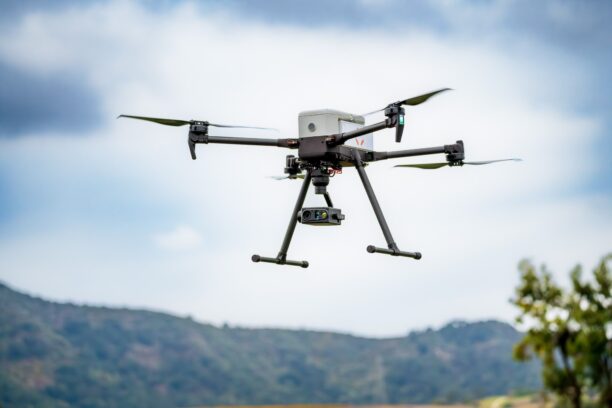
What Will It Take to Strengthen U.S. Drone Manufacturing? A Conversation with Inspired Flight’s CEO
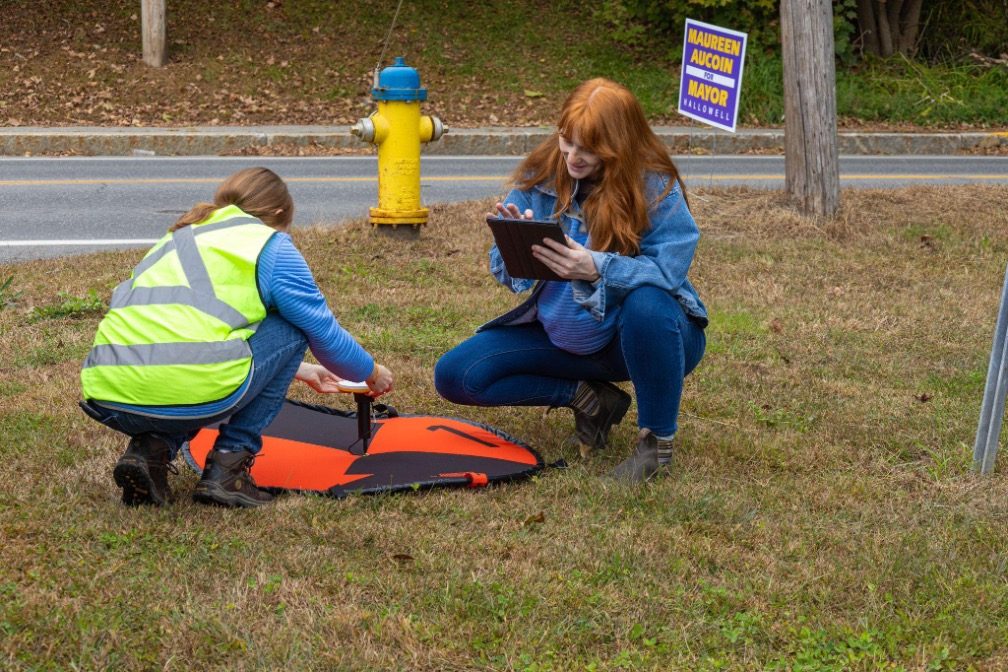
Collection Ground Control Points with Global Mapper Mobile
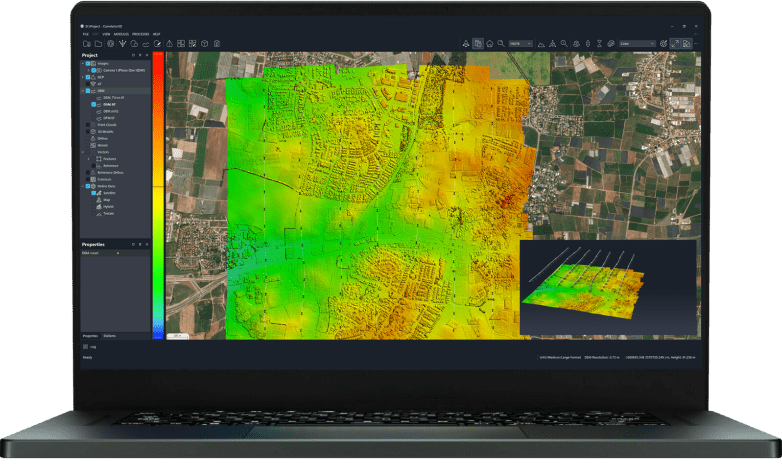
How SimActive’s Correlator3D™ is Revolutionizing Military Mapping: An Exclusive Interview with CEO Philippe Simard

SimActive Photogrammetry Software: Enabling Users to Meet Accuracy Standards for Over 20 Years
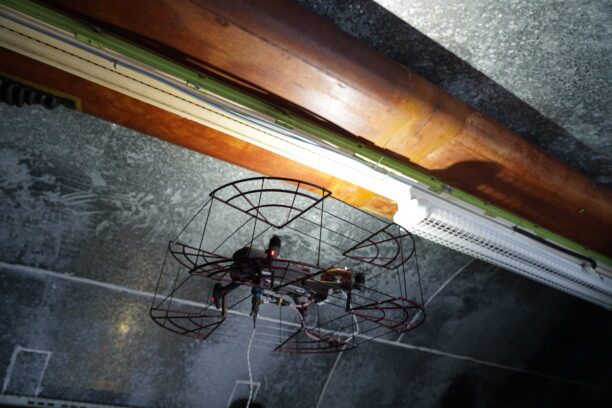
Smart Tether for Parrot ANAFI USA from NACT Engineering
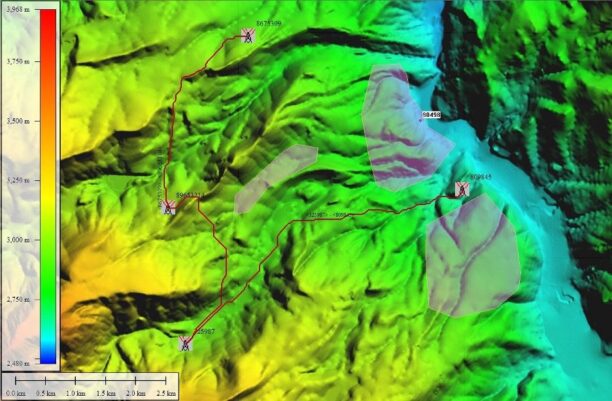
Check Out These New Features in Global Mapper v25 from Blue Marble
This website uses cookies and third party services. By clicking OK, you are agreeing to our privacy policy . ACCEPT
Privacy Overview
| Cookie | Duration | Description |
|---|---|---|
| cookielawinfo-checkbox-analytics | 11 months | This cookie is set by GDPR Cookie Consent plugin. The cookie is used to store the user consent for the cookies in the category "Analytics". |
| cookielawinfo-checkbox-functional | 11 months | The cookie is set by GDPR cookie consent to record the user consent for the cookies in the category "Functional". |
| cookielawinfo-checkbox-necessary | 11 months | This cookie is set by GDPR Cookie Consent plugin. The cookies is used to store the user consent for the cookies in the category "Necessary". |
| cookielawinfo-checkbox-others | 11 months | This cookie is set by GDPR Cookie Consent plugin. The cookie is used to store the user consent for the cookies in the category "Other. |
| cookielawinfo-checkbox-performance | 11 months | This cookie is set by GDPR Cookie Consent plugin. The cookie is used to store the user consent for the cookies in the category "Performance". |
| viewed_cookie_policy | 11 months | The cookie is set by the GDPR Cookie Consent plugin and is used to store whether or not user has consented to the use of cookies. It does not store any personal data. |

The 6 Best Drones For Sailing 2024
There’s no doubt that drones have taken the world by storm in recent years, and the best drones for sailing have come on leaps and bounds in terms of quality and affordability.
Drones can enhance sailing experiences by providing an aerial view of the surroundings. They can give family, friends, and a wider audience a real insight into what sailing life is like, and you can even use them to scout out a potential anchorage ahead of arrival.

As an Amazon Associate, we earn from qualifying purchases. We also earn from other affiliate programs. This means we may receive a small commission on products purchased through our links at no extra cost to you.
Having lived aboard our sailboat for over three years now and sailed thousands of miles, we’ve been through our fair share of drones. Some have been amazing, others not so much (the one that flew off of its own accord and crashed into a tree as soon as we turned it on has not made the list!)
In this blog post, we’ll explore some of the best drones for sailing and provide tips on how to use them effectively, based on our own experiences and from using the drones of several of our sailboat friends to test them out for this article.
So, whether you’re a seasoned sailor or just getting started, be sure to read on for some helpful insights!
What Qualities Should You Look For In The Best Drone For Sailing?

If you’re looking for the best drones for sailing, there are a few key qualities you should look for.
Of course, the best drone to use is the one you have, so if you can’t afford a drone with some of these capabilities then we would highly recommend you opt for a cheaper model and accept the fact you can’t fly it in high winds, or that the video quality might not be as good.
First, you’ll want to make sure that the drone is stable in windy conditions. This is especially important if you’ll be using the drone to capture video or take photos while sailing.
We’ve all seen drone footage that’s shaky and all over the place, and the wind when you’re on a sailboat can be twice as bad as on land. For really decent footage from a sailboat drone, you’ll want one that has great stability even in high winds.
Flight time
One of the most annoying things about drones is their battery life! Just when you’re about to get the perfect shot, the battery runs low and you have to fly it back. Look for a drone with decent battery life, and even better, a sailing drone with more than one battery so you can swap over quickly without charging.
Video quality
Consider how you’re going to use the footage from your drone. If you’re happy with a few snapshots for the family photo album then quality might not be so important to you. If you’re keen to use photos and videos in a more professional capacity then you’ll want to keep a close eye on the video quality of the sailboat drone you’re buying.
You’ll want to make sure that the drone is easy to control. Look for a model with intuitive controls and a user-friendly interface. There is nothing worse than a drone that’s really fiddly or hard to control when you’re trying to launch and land it on a sailboat.
Top tip: Don’t forget to store your drone properly. Obviously this is good practice wherever you are but on a sailboat, it’s even more important. Saltwater and rolly surfaces are not great for delicate parts. We can highly recommend the Peak Design everyday sling . Perfect for onboard storage and trips off the boat too. Read our Peak Design sling review for more information.
The Best Drone For Sailing

#1 The DJI Phantom 4 Pro – Best all-round drone for sailing

The DJI Phantom 4 Pro is one of the best drones for sailboats. It has a high-quality camera that can take stunning photos and videos, and it’s also incredibly easy to fly. We aren’t lucky enough to own one of these ourselves, but we do know several sailors who have them and have been kind enough to let us review them.
This is a sleek, high-end drone that can fly up to 45 miles per hour in favourable conditions. It can stand up to ocean strong winds so you needn’t worry about it being swept away when you need to nail the shot!
It can film 4k videos at 60 frames a second and is fitted with a 20-megapixel camera, so you won’t compromise on photo quality either. This really is an excellent sailboat drone.
The DJI Phantom 4 Pro is a high-end drone that offers excellent features and performance. However, there are some downsides to consider before purchasing this drone.
First, the Phantom 4 Pro is quite expensive, costing around $1,500. This makes it one of the most costly consumer drones on the market.
Secondly, the Phantom 4 Pro is large and heavy, making it difficult to transport and store.
Finally, the drone’s battery life is only about 20 minutes, which is shorter than some other drones in its class. This can actually be a bit of a pain, as although 20 minutes sounds like a long time, you really want to bring it in earlier so you don’t risk running out of battery on the way back.
Despite these drawbacks, the Phantom 4 Pro remains a popular choice for serious drone enthusiasts due to its excellent features and performance, and we can see why.
Buy now from Amazon
#2 The Yuneec Typhoon – Best for videography

The Yuneec Typhoon is a highly popular drone for sailing that offers several advantages over the other options on this list.
The Typhoon is very easy to fly, making it a great choice for beginners or those who are not familiar with drones, though the price may put first-time users off.
It has a decent camera which is capable of taking high-quality photos and videos. The Typhoon’s camera is also equipped with GPS, meaning that users can easily track their progress and location.
The main advantage of this sailing drone over other, cheaper models on this list is its stability feature. The Typhoon is a hexacopter with 6 propellers, which makes it extra stable even in the strongest winds. This means the videos and photo quality will be a cut above the rest in bad weather. If you’re a keen videographer then this might be the best drone for sailing for your needs.
The Yuneec Typhoon is a popular drone often lauded for its features and ease of use. However, there are some potential drawbacks to consider before purchasing this sailing drone.
This is an expensive drone. The reason for this is the stabilisation, but for users not familiar with drones or hobbyists, it may be a big expense for not much reward. Consider whether you need a technical, high-quality drone for your footage or whether you will be happy to fly your drone during fine weather.
#3 The DJI Mavic Pro 2 – Best high quality

The DJI Mavic 2 Pro is an awesome bit of kit. This drone is one of our favorite drones for sale, and it may cost a pretty penny but you are certainly getting your money’s worth!
This powerful flying machine features a 20-megapixel camera with inbuilt stability technology to improve picture quality no matter what kind of weather conditions you’re experiencing out there.
Not only does this high-tech gadget have 8GB of storage capacity, it’s also SD card friendly so you can add a whopping 128 gigabytes via SD card slots if you need more space.
This drone has one of the longest flight times on this list, 30 minutes worth of flying fun. It’s also tiny, so you won’t have any trouble storing it aboard.
Honestly, the only real con to this sailing drone is the price tag, but even then it’s well worth the money!
#4 The Parrot Bebop 2 – Best mid-range option

The Parrot Bebop 2 Power is the improved version of the former model. This drone has one of the most impressive flight times on this list, boasting up to 30 minutes in the air.
Key features like automated shot modes make this drone easier to fly, and we especially love the follow object mode that allows you to hand over a little more control to the drone.
The drone comes with two batteries and a range of other fun accessories. You can pick one up for around £600, so while it certainly isn’t cheap, it isn’t one of the most expensive drones on this list either.
The Bebop 2’s video quality is only slightly better than that of its predecessor, which is a shame considering the price.
With in-app purchases, you can unlock more features for this drone like emergency crashing protection and increased storage capacity– but you might be put off by the fact you have to pay for features that other drone brands include in the price.
You should be aware that it’s limited to 8GB of internal storage.
#5 Holy Stone HS700E – Best budget drone for sailing

Holy Stone’s HS700E is a great drone for those who want to get up high and see all that their surroundings have to offer. This is one of the cheaper drone models on this list and it’s a great option for beginners who want to hone in their skills before splashing out on something more premium. This is a rugged drone that is well suited to the sailing environment.
This model comes with three intelligent batteries, which provide 23 minutes each time you fly it. You won’t be faffing around charging batteries before you can fly again.
The brushless motors are powerful but quiet so as not to disturb anyone around you when in operation. Additionally, there’s an air optical flow control system included that allows this birdie bot to take flight smoothly and hover stably.
#6 The Splash Drone 3 Auto – Best waterproof drone for sailing
This drone is pretty unique, and perfectly suited to sailing because it’s actually designed for wet and wild surroundings.
The Splash Drone 3 Auto is completely waterproof, so you can even land it in the ocean and it won’t mind one little bit (though depending on how deep the sea is at the time of the crash, you might have a thing or two to say!)
This is a bit of a gimmicky drone at the moment and hasn’t quite reached the quality of the other drones on this list. The main benefit is its waterproof capabilities, so you can feel comfortable flying it over shallow anchorages. But that’s not to say it isn’t a great drone for making memories with.
It has a flight time of around 15 minutes, so one of the shorter flight times on this list but still enough to get the shot. It reaches top speeds of 30 knots – we’re pretty sure that will keep up with your sailboat. It has stabilisation that’s adequate and will record 4k footage.
In summary, this is a fab little drone that you can feel confident about flying in the wet conditions that sailing life brings.
Why Use A Drone On A Sailboat?

Sailboat drones have become more and more popular among sailors in recent years, and for good reason. Not only are they a unique and creative way of capturing memories and creating beautiful artwork, but they can actually be quite useful too!
Drones can also be used to help sailboats navigate through difficult waters. Thanks to their small size and maneuverability, drones can be used to explore areas that would be otherwise inaccessible. For example, a drone could be used to investigate a reef before sailing into it.
Can You Fly A Drone Off Your Sailboat?

The answer is yes, but there are a few things you need to keep in mind.
First of all, make sure that you’re using a drone that is rated well for use on a sailboat (any from this list will work great). It needs to withstand the force of the wind and other less than ideal conditions.
You will also want to read up on how to land a drone on a sailboat (see below). It’s a little trickier than a simple land-based landing, so make sure you practice on land first to make sure you’ve got the hang of it.
You’ll also want to make sure that you’re familiar with the local laws and regulations regarding drone use. In some areas, there may be restrictions on where you can fly your drone, so it’s important to check before you take off.
With those things in mind, flying a drone off your sailboat can be a great way to get some unique footage or photos. Just make sure to follow the guidelines and stay safe!
How Do You Catch A Drone On A Sailboat?

There are a few things to consider when trying to catch a drone on a sailboat.
Disable the Obstacle Avoidance System
Most drones have an obstacle avoidance system that prevents them from crashing into objects. This is usually really handy, but with so many things around on a sailboat the drone can start acting up. It’s actually easier to land a drone on a sailboat with the obstacle avoidance system disabled.
Land your sailboat drone from the side of the boat
This is usually the best direction to fly the drone home from, as there are fewer obstacles. Take your approach from the side of the boat to give yourself as much room as possible.
Slow is pro
Take your time and be prepared to have a few attempts. The worst thing you can do is to try and rush a landing on a sailboat. Make sure you aren’t trying to multi-task, and that you can concentrate fully on the job at hand!
Catch the drone from where you have the most space
Finally, it’s also worth considering where on the sailboat you’re positioned. The bow (front) of the boat will offer the best visibility, but it may be easier to catch a drone from the stern (back) where there is more open space.
Ultimately, there is no one guaranteed method for catching a drone on a sailboat, but by taking into account factors like wind and position, you’ll give yourself the best chance of success.

Conclusion: The Best Sailboat Drone
If you are looking for the best drone for sailing, then we highly recommend the drones we have reviewed on this list, that have been tried and tested by experienced sailors.
Drones are perfect for capturing stunning footage of your sailboat as it cuts through the waves, or showing off the stunning anchorages you experience on your journeys. So whether you’re filming professionally or capturing memories, make sure you have your sailboat drone with you next time you head out on the water.
If you’re interested in life on a sailboat then be sure to check out our ‘How to live at sea’ guidebook , which teaches you all you need to know before and during your move onto a sailboat.
Similar Posts

Sailing The Dodecanese

How Much Do Sailboats Cost 2024? The Average Prices

Sailboat Keel Types: Pros And Cons 2024

The 55 Best Sailing Gifts For Sailors 2024

Sailing Stories

The Best Cold Weather Sailing Gear For Winter 2024 (including checklist)
- BOAT OF THE YEAR
- Newsletters
- Sailboat Reviews
- Boating Safety
- Sails and Rigging
- Maintenance
- Sailing Totem
- Sailor & Galley
- Living Aboard
- Destinations
- Gear & Electronics
- Charter Resources
- Ultimate Boating Giveaway

How to Use a Drone on a Sailboat
- By Ronnie Simpson
- Updated: June 10, 2020
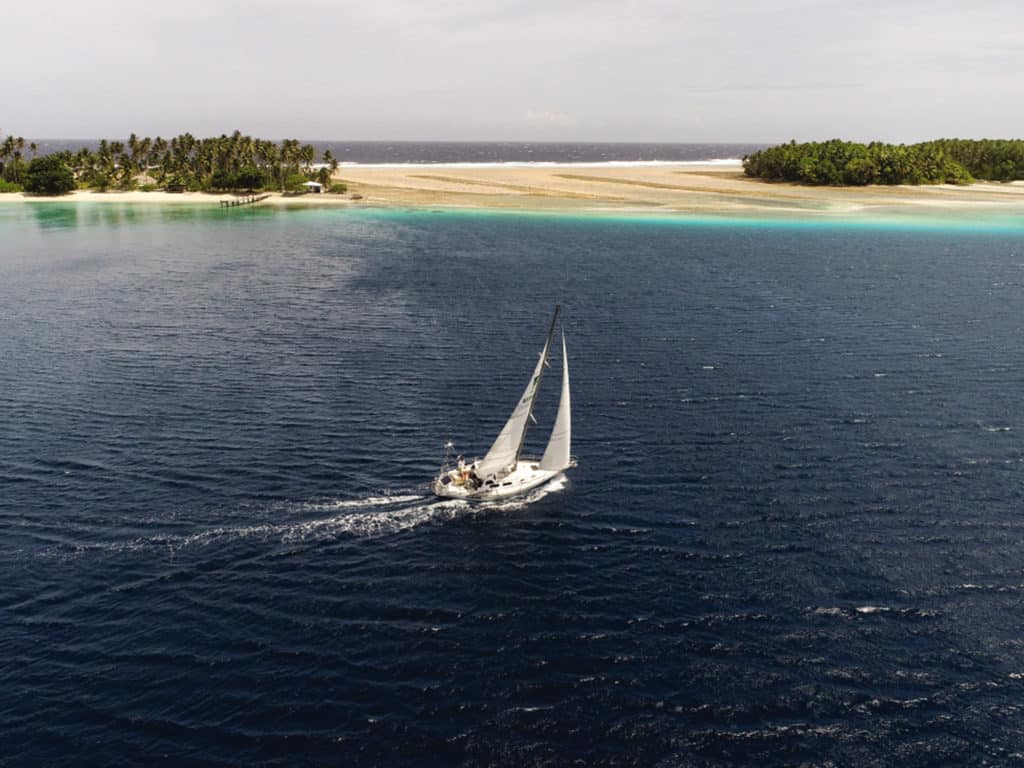
In the past decade, drones have completely revolutionized how we see sailing. Just a handful of years ago, capturing airborne images of a sailing yacht, a regatta or a harbor was exclusively the domain of professional photographers or well-heeled amateurs who could afford a helicopter and were equipped with a pricey long-lens camera to capture the moment.
Now, literally millions of people around the world carry a small, unmanned drone that can be easily launched into the sky and commanded to take photos and video; some even have the ability to distribute these images live onto social media. Due to the nature of sailing and the constantly changing seascape in which it takes place, being able to achieve this aerial perspective is invaluable to telling the story of a cruise or racing yacht and its crew, and the places and conditions in which it travels.
With the recent proliferation of drones, most sailors have undoubtedly seen or heard a drone buzzing around their boat or marina at some point. And many of us probably have a friend who owns a drone and has a good crash story. As an experienced, commercially licensed drone pilot and drone enthusiast, time and again I’ve heard a variation of this tale: “I got a drone once, and I wrecked it the first day. I decided that drones are not for me.”
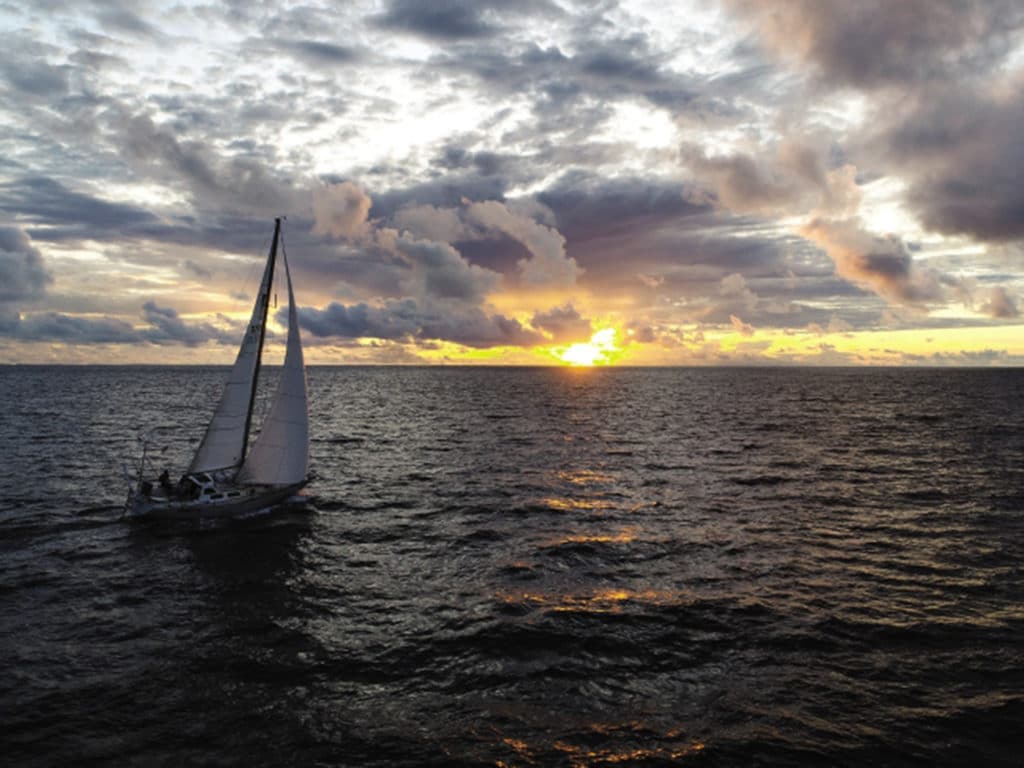
To which I say: Imagine if you went for a sail once, with no experience and no proper instruction, and had a mishap while docking and decided that sailing just wasn’t for you. Don’t sell yourself short. Owning and operating a drone is far easier and more practical than many sailors think.
Getting Started
With about a thousand bucks, or less, and just a bit of practice, you too can capture beautiful high-resolution videos and photos of your boat at anchor or under sail in no time. For less than the price of the smallest, cheapest sail on your boat, you can have a device that has the potential to deliver incredible imagery that can allow you to share your sailing adventures with your friends and loved ones, add value to the eventual for-sale listing of your boat, and capture that incredible image of your boat as a gift or focal piece in your home.
Commercially available drone technology has improved by leaps and bounds since the original drones began to hit the market several years ago. Now, as then, one company has established itself as a leader in the industry and gained the lion’s share of the market: DJI. When this Chinese-based company first released the Phantom series of drones, they completely revolutionized sailing media and photography almost overnight. While there are several other reputable drone-makers on the market, virtually every single licensed professional drone pilot I have worked with (including myself) relies on DJI products. Disclaimer: I am not sponsored or paid by DJI in any way (but I wouldn’t be opposed to it!).
One of the first pieces of advice I can offer is to not buy a knockoff drone or the cheapest one you can find online. Like most things, you truly do get what you pay for. In the past couple of years, a number of DJI Mavic-like clones, oftentimes for crazy-low prices ($90, shipped), have popped up on the market. If you ever actually receive your drone, you will almost undoubtedly be disappointed in the product. My first drone was a cheap one, about $200; it was a liability and somewhat likely to crash itself or create some type of drama nearly every time I flew it. Operating off a boat? Forget about it. One of the best moves I made was to upgrade to my first DJI Mavic Pro drone, which now retails for under a grand. Overnight, my drone game was elevated significantly from the $200 beginner model.
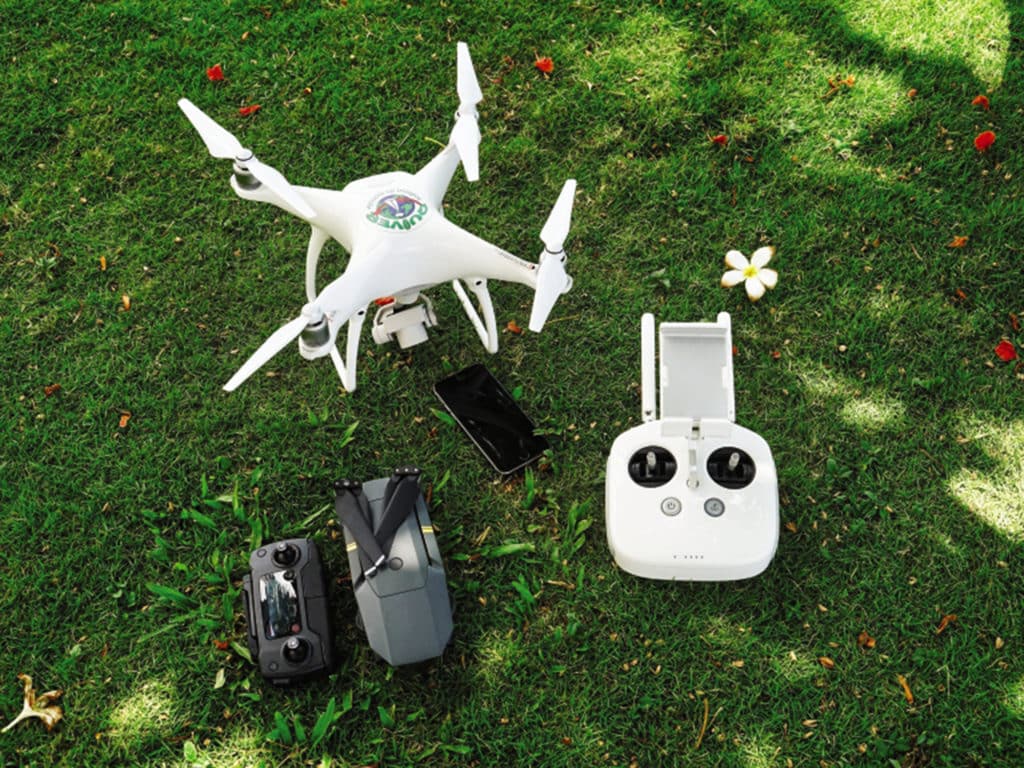
When operating around boats and the water, turning off all of the auto and safety features is almost universally agreed upon by any experienced drone pilot. If you launch from a moving boat, for example, the drone will oftentimes try to “return to home” and land at its point of takeoff when the battery drops to a certain percentage. This can obviously be catastrophic when flying from a moving boat. Also, returning for a landing is usually met with resistance because the drone won’t want to come within several meters of the boat and its rigging, making landing impossible. Turning off all the safety and auto sensors also improves battery life and performance.
Before launching off a boat, it is quite critical to become familiar with your drone and how it operates and handles. A wide-open grassy space with no other people, trees or structures is ideal. Concrete and steel structures (e.g., buildings) in particular wreak havoc on the compass of a drone. When going through the drone’s initial setup, “swinging” the compass—just like on a sailboat’s autopilot—is one of the first required steps. This is best done in a grassy field or at least 50 yards away from your house, and definitely not on a hard, paved surface.
Once you have practiced and feel confident in operating your drone—having practiced launching and retrieving it by hand—it’s time to move on to the boat. A drone with legs, such as the DJI Phantom series, is the undisputed champion of boat-based operations. Due to its portability, however, DJI’s Mavic line of drones has become increasingly popular. Though these Mavic drones are less ideal to catch on a moving boat, it is doable, and it was interesting to see that several of the top onboard reporters in the recent Brest Atlantiques race were using Mavic 2’s. Aftermarket 3D-printed handles, or homemade versions, can make the task of catching a Mavic easier; online research is very helpful.
Useful Tips
During retrieval, but especially during launching, anything that can be done to reduce the apparent wind is helpful. When launching off a moving boat going upwind, I generally ask the main trimmer to ease the mainsail and the helmsman to luff up and slow down the boat. Once the drone is away, the helmsman simply falls back off and the main is retrimmed. The one drone that I lost was off the famous 70-foot racing sled Merlin, and it was entirely my fault. I tried to get the drone away without disrupting the team’s racing; had I communicated with the skipper, I would have known that they had one more tack before the mark. I easily could have gotten the drone away at that point. The major lesson learned in that loss of a really nice Phantom 4 was to always be hyperaware of launching off the leeward side of a fast boat going upwind; the turbulence, or “dirty air,” in the lee of the mainsail sent my drone straight into the drink. Launching while sailing downwind tends to be easier because the boat is generally flatter and apparent wind speeds are reduced. Once the drone is out of my hand, I like to immediately throttle it up and away from the boat.
Learning to fly a drone is just one part of the equation when becoming a drone pilot. It is important to remember that you are acting as an unmanned aerial vehicle pilot, and that you are subject to all kinds of local, state and federal laws. First and foremost, you must register your new drone with the Federal Aviation Administration for $5 per drone per year and comply with all relevant laws; for more information, visit the FAA website (faa.gov). Beyond that, the internet is an incredible resource to learn more, and there are also several good apps, such as the FAA’s B4UFly app, which can help you determine what is legal (and not) based on your location. As well, the DJI drones tend to have basic built-in-knowledge tests and features that will warn of local no-fly zones and restrictions. In many cases, a new DJI drone won’t even take off or fly in prohibited areas.
Once you have gained some drone experience, people might ask you to take drone shots or videos for them. While no license is required to fly a drone as a hobbyist, a license is required before conducting any commercial activity. Should you decide to fly your drone in exchange for money—for real estate agents, home inspectors, a yacht-racing team or anyone else—you will need to become a commercial drone pilot. Doing so is less difficult than you might think. Take an online course, watch some YouTube study guides, and head to your local FAA-approved knowledge-testing center, which is usually at your nearest flight school. The fee for taking the test is $150, and the license is free. Welcome to the world of drones, where the sky is literally the limit.
Ronnie Simpson is a sailing-media professional who has put his commercial drone pilot license to work while covering major events, including the Transpac, the Rolex Sydney-Hobart Race, the Pacific Cup and Fiji’s Musket Cove Regatta. A veteran long-distance racer and frequent contributor to Cruising World , he is now based in Fiji.
Your Eye in the Sky
Choosing a drone is just like choosing a boat. You can spend virtually as much or as little as you wish, and what might be right for someone else might not be right for you, and vice versa. As a commercial drone pilot who frequently gets paid to film and photograph boats under sail, I am oftentimes launching off moving boats and am especially partial to the DJI Phantom series of drones. While covering the 2019 Transpac and 2019 Sydney-Hobart Race, every single drone I saw in the sky was a Phantom 4, including my own pair of them (though I never flew both at once, which is illegal).
They were out of production for approximately a year (from late 2018 until late 2019), but DJI’s supply-line issues have apparently been sorted out, and the DJI Phantom 4 Pro Version 2.0 was again back on the market earlier this year. If you are shooting off moving sailboats, this is the king of drones. However, at a starting price of over $1,700 for a new Phantom 4 Pro V2.0, it’s not cheap. That said, there is a strong secondhand market of Phantom 4’s and Phantom 3’s. As mentioned in the story, the legs of the Phantom 4 drone are arguably the model’s greatest quality; catching them off a moving boat is a breeze.
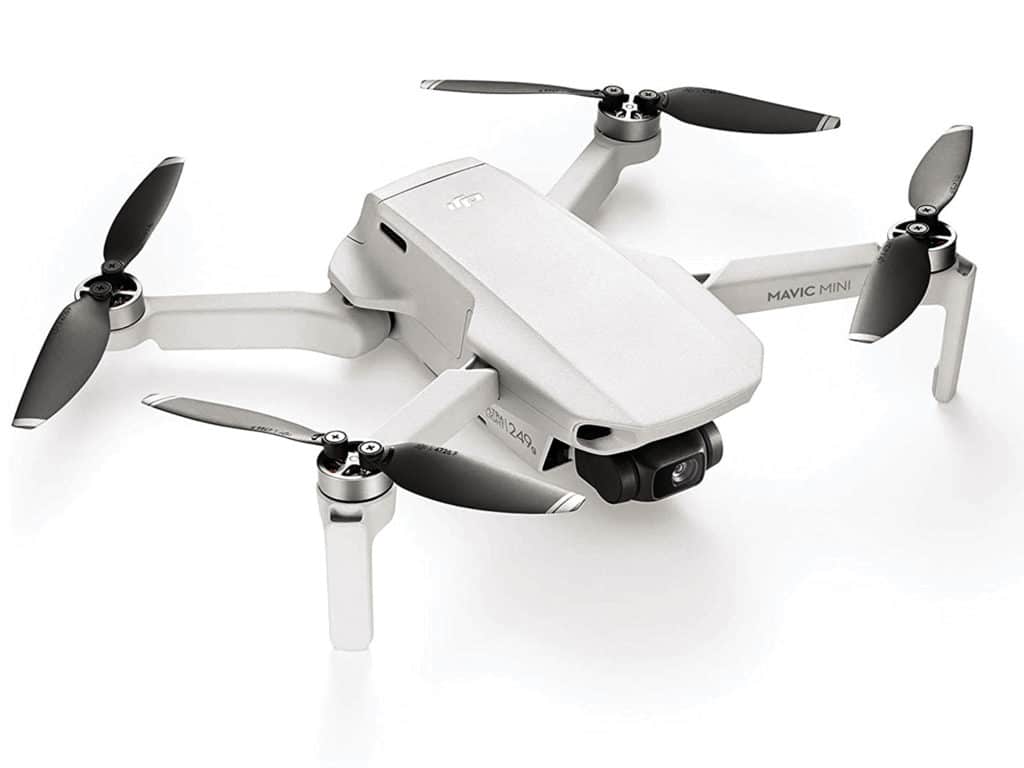
While the Phantom is the king of commercial-boat-based drone use, DJI’s Mavic series is the company’s bestseller. Portable, powerful and easy to fly, the Mavic is the go-to drone for most pilots. I still own two Mavic Pros and almost always have one in my backpack; unless I’m working from a boat, my Mavic is the workhorse. Ranging from the Mavic Mini ($399) to the Mavic Air ($919), and all the way up to the Mavic Pro ($1,149) and Mavic 2 ($1,729), one can spend as much or as little as they wish, and it’s quite easy to see where the money goes in each ascending level.
With the newly released Mavic Mini (above) at under $400, the incentive to purchase a $99 no-name knockoff or a cheaper alternative brand for a couple hundred bucks is less and less appealing. In my personal experience and that of my many friends who fly drones, many of us have tried different brands, but virtually all of us have settled on DJI drones. Like the Phantom drones, there is a massive secondhand market for Mavic drones, as well as the tiny DJI Spark . And remember, along with the drone, you will want a good smartphone. Unless you opt for an expensive controller that includes its own screen, your smartphone will permit you to see what you are filming and where you are going.
Happy flying!
- More: How To , photography , print may 2020
- More How To

Surviving the Storm: A Sailor’s Tale of Hurricane Lee

Best Practices for Boat-Show Shopping

Grease the Wheels of Your Boat: A Guide to Proper Lubrication

A Bowsprit Reborn: A DIY Renovation Story
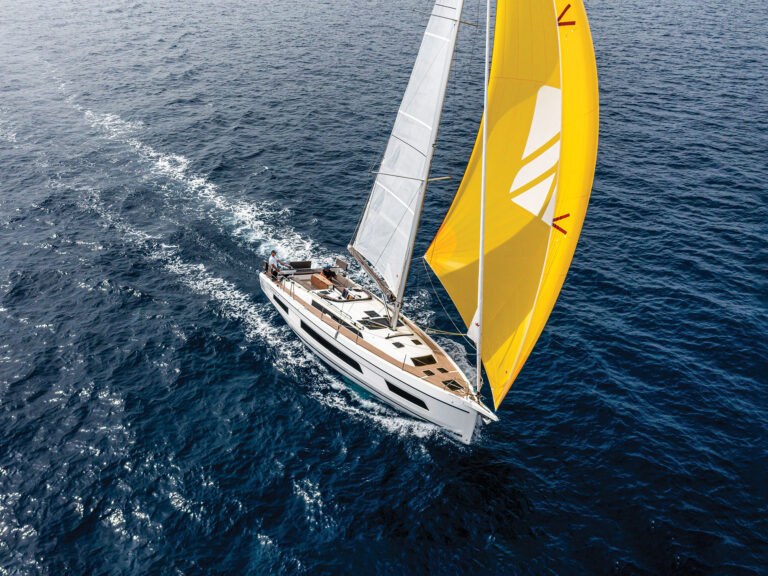
Sailboat Review: Dufour 41

Storm-Tossed, Lobster-Blessed: A Culinary Cruising Tale
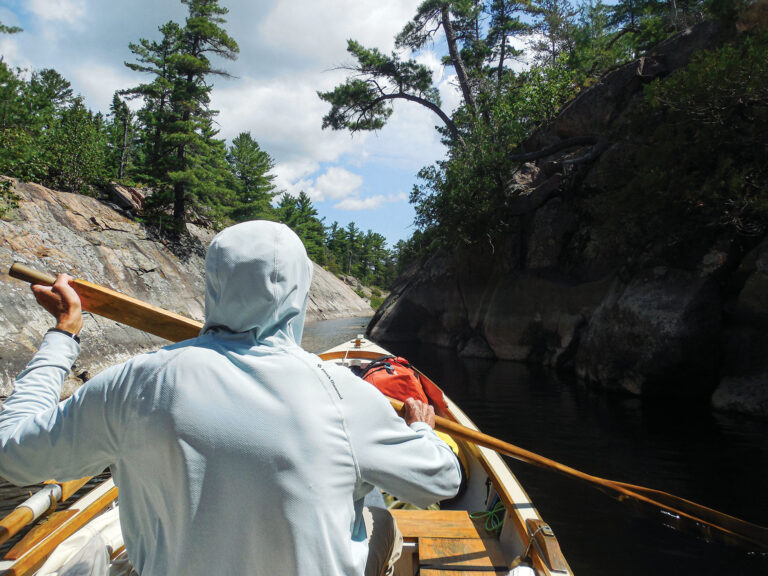
Minimalist Cruising: Georgian Bay by Dinghy
- Digital Edition
- Customer Service
- Privacy Policy
- Terms of Use
- Email Newsletters
- Cruising World
- Sailing World
- Salt Water Sportsman
- Sport Fishing
- Wakeboarding
- Yachting World
- Digital Edition

How to fly a drone like a pro and land it safely back onboard your yacht
- July 25, 2019
There’s a fine art to using a drone at sea – Terysa Vanderloo explains how to avoid crashing yours into the ocean

Drones can provide spectacular overhead shots while under way. Photo: Andy Schell: 59 North Sailing
With the advent of small, affordable and user-friendly drones , many cruising sailors have adopted them as a way of achieving really impressive and professional-looking photographs and video.
I speak from experience when I say this is far easier said than done, and flying a drone while under sail is a challenging task. However, there are proven techniques and tricks for flying a drone while under way – without it ending up in the drink. I spoke to three drone-piloting experts for their advice.
Andy Schell and his wife Mia run 59° North Sailing, which offers adventure sailing charters on their Swan 48 and Swan 59. They’re also fantastic photographers. Andy uses the DJI Phantom 4 Pro , which he believes is the best drone for flying from a boat because of the legs it has on its underside, which provide the perfect handles for catching the drone – without the very real fear of getting fingers caught in the propellers.
Note: We may earn a commission when you buy through links on our site, at no extra cost to you. This doesn’t affect our editorial independence.

An on board reporter flying a Phantom 4 from the stern of a Volvo Ocean Race yacht. Photo: Jesus Renedo
My partner Nick and I have the smaller, compact version, the DJI Mavic Pro , which has no legs for landing: I can attest to the nerve-wracking experience of catching it from a moving boat and agree wholeheartedly that the Phantom would be a better option for flying while under way. The advantage of the Mavic is that it’s far smaller and folds up to an even more compact shape – we live on a 38ft monohull, and so stowage space is at a premium.
Brian Trautman, best known as the skipper of SV Delos on the popular YouTube sailing channel, has been flying drones since 2014. Since then, he and his crew have flown many drones in different conditions.
Brian has both the Phantom and Mavic on board Delos and also recommends the Phantom while flying from the boat as it is far easier to catch, as well as being more powerful, which helps in windy conditions. Their Mavic is used primarily for land-based excursions.

Brian Trautman (centre) prepares to fly a DJI Phantom 4 Pro
Therefore, which drone you choose may come down to whether or not you have the space to store a chunkier model like the DJI Phantom, and whether or not you want a drone that is portable. It’s worth noting that there’s a cost difference between the two: the Phantom is cheaper than the Mavic.
Another model that might be of interest is the DJI Spark , which is even smaller and more compact than the Mavic – not much bigger or heavier than a sunglasses case. Nick and I have successfully flown a Spark from a catamaran in light winds before, although it’s no good for windier days and also doesn’t have 4k capabilities.
I also spoke to Richard Edwards, a professional videographer who was one of the onboard reporters responsible for some of the incredible footage during the last Volvo Ocean Race . He suggests a simple yet ingenious solution to catching a drone such as the Mavic or Spark, which is to glue a light plastic mini tripod to its underside.
Read YBW’s guide to the best drones for sailing
Once you’ve purchased your drone, the next step is to get used to flying it. Clearly, practising from land is a wise starting point, so you can get used to how it handles as well as hone your skills for catching it.
Brian starts off by flying the drone in circles around trees or houses. “If you can do a complete 360° flying manually around a stationary object while still keeping a constant distance and the object in frame then that is something to be very proud of,” he advises. “Once you’ve mastered this, then it’s time to try the same thing on a boat – which is much harder.”
After you’ve mastered the basics, Andy suggests flying the drone on a breezy day in manual mode with the collision sensors and ‘return to home’ function turned off, since that’s how you’ll have to do it on the boat. He suggests: “Practice launching and catching it by hand – someone on the controls, another person on the launch and catch, ideally wearing sunglasses and thin gloves as safety protection.”

Raymarine’s Axiom UAV app can automate launch, in-flight navigation and return-to-boat for DJI drones
The next logical step is to practice flying the drone from the boat while at anchor to get used to the space you’ll be working with. However, at some point, it will be time to put your skills to the test and fly the drone from the boat while under way.
Andy says: “You need two people: a pilot and a catcher. We launch off the stern quarter, opposite the radar pole; that way, all the pilot has to do is fly straight up. The drone will want to hover in place and the boat will just sail away from it safely. Flying it downwind is far easier on battery life. Upwind, the drone can handle about 20 knots, but it’s harder to land on a heel and the battery won’t last as long.”
Richard also flies from the stern. “To launch, have a person hold it above head height off the back of the boat – it’s irrelevant if it’s downwind or upwind. Power up and immediately ascend to keep clear of rigging, and the boat speed should naturally mean it flies away.”
Flying a drone from a catamaran is generally easier as there is more space to launch and catch it and the boat itself is more stable. The trampolines may provide more room than the stern of the boat, but the disadvantage here is that there is still a danger of the drone colliding with the rigging. Again, choose a launch spot where there is clearance and the boat will be moving away from the drone once it’s in the air.
Article continues below…

Tested: 5 of the best drones for filming your yacht
Drones have really advanced over the past few years, with anyone now able to try their hand at piloting a…
Safe landings
When it comes time to bring the drone back to the boat and catch it, Richard advises already having a plan in place before taking off (this is also where you find out if you turned off the ‘return to home’ function). “Never land anywhere but at the stern of the boat and come in from behind, never from the side or overhead, otherwise you’ll be disorientated and hit the boat.”
Andy and Mia also catch from the stern. Andy says: “It’s easier to land than you think. “We start coming home at 60% battery. You’ve got to fly it in backwards, because the forward vision sensors will stop it from getting close enough to catch. “Keep the boat sailing straight and bring the drone in. If you need to re-do it, just let go of the controls. The drone will stop and hover, and the boat will safely sail away from it. Then bring it in for another try.”
On a catamaran, the trampolines may look tempting as a catching area, however it’s worth considering Andy and Richard’s advice: the safest option is the stern as the drone will be able to approach from behind, it will be clear of all rigging, and the boat is always moving away from the drone, meaning multiple attempts to catch it can more easily be made.
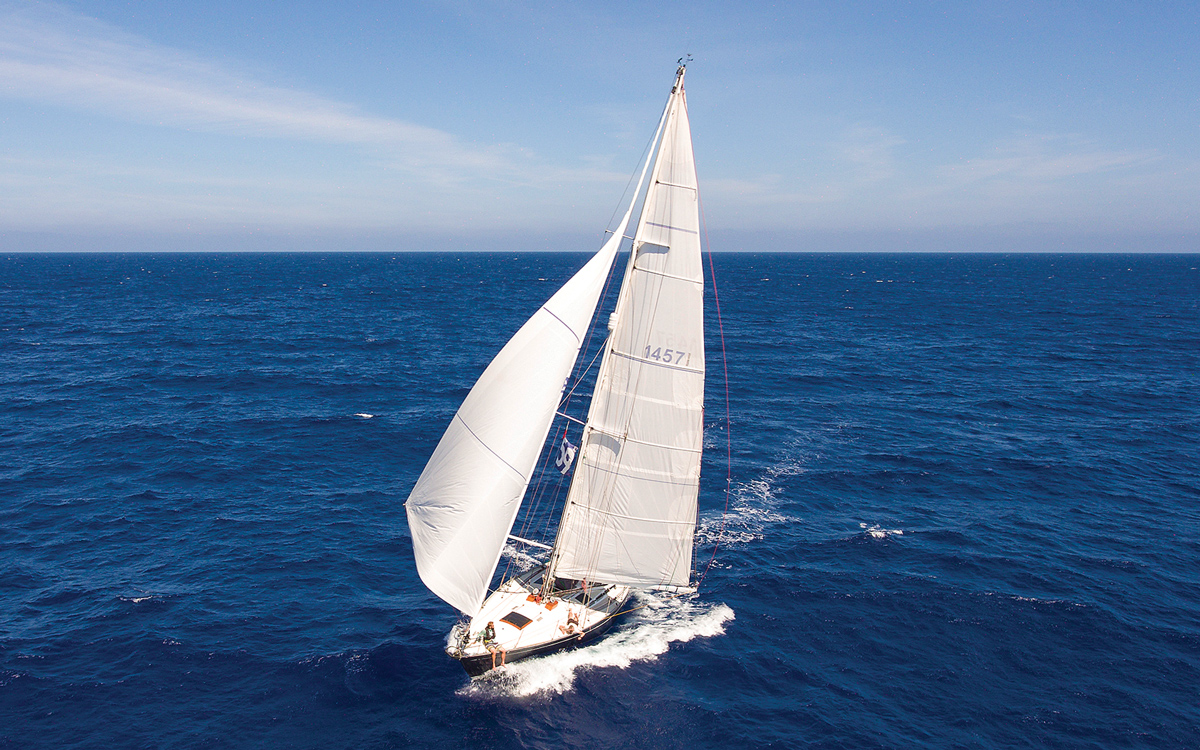
Drones can capture photos and video that were once possible only from a helicopter. Photo: Andy Schell / 59 North Sailing
Brian emphasises how difficult it can be to judge distances between the drone and the boat when both are moving. In fact, Brian usually flies the drone from the dinghy, which deals neatly with the danger of collision with the boat. “Most of the times I’ve crashed the drone have been trying to land while under way. I usually try to avoid this at all costs and prefer to fly from the dinghy. It’s much easier to land without worrying about the rigging.”
For cruising couples who are sailing short-handed this could be a challenge, although Brian and Karin, his wife, have managed it many times when it has just been the two of them on board. “Start simple and focus on simple movements,” Richard advises. “Most of all, have fun, but don’t underestimate the importance of safety and planning.”
Although it’s natural to worry about losing the drone overboard, Andy advises: “You won’t get the amazing shots if you don’t push the limits, so you’ve got to be prepared to lose the drone. If you absolutely cannot afford to lose it, then don’t fly it at sea!”
Drone specs
4k vs 1080?
This refers to the resolution of the image; 4k is actually 3840 x 2160 pixels and 1080 is 1920 x 1080 pixels. 4k is swiftly becoming the industry standard, however if all you want your photos and videos for is your own personal use or to post on social media, 1080 is perfectly fine.
Gimbal or stabilisation software?
Many drones these days will boast either a gimbal or electronic stabilisation. This is especially important for cruisers wanting to take video, however stabilisation will also help produce sharp photographs.

Order anything, anywhere!
Our operation is straightforward: customers make their selections, place orders with the restaurant through an app and then wait for their meals to fly in.
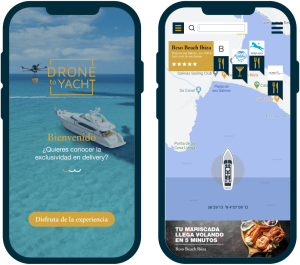
The world's most luxurY delivery service
We introduce a revolutionary, sophisticated delivery service. Our mission is to connect restaurants, resorts, golf courses… to customers all around the globe. Our job is to ensure that costumers have access to anything they want, anywhere they need.
Enjoy a different experience, where exclusivity, privacy and absolute comfort come together to provide a never-before-seen service that expands your frontiers.

Our partners are the most exclusive venues in the world. National and international press echo Drone To Yacht.
Drones arrive in Ibiza to deliver food from restaurant to yachts
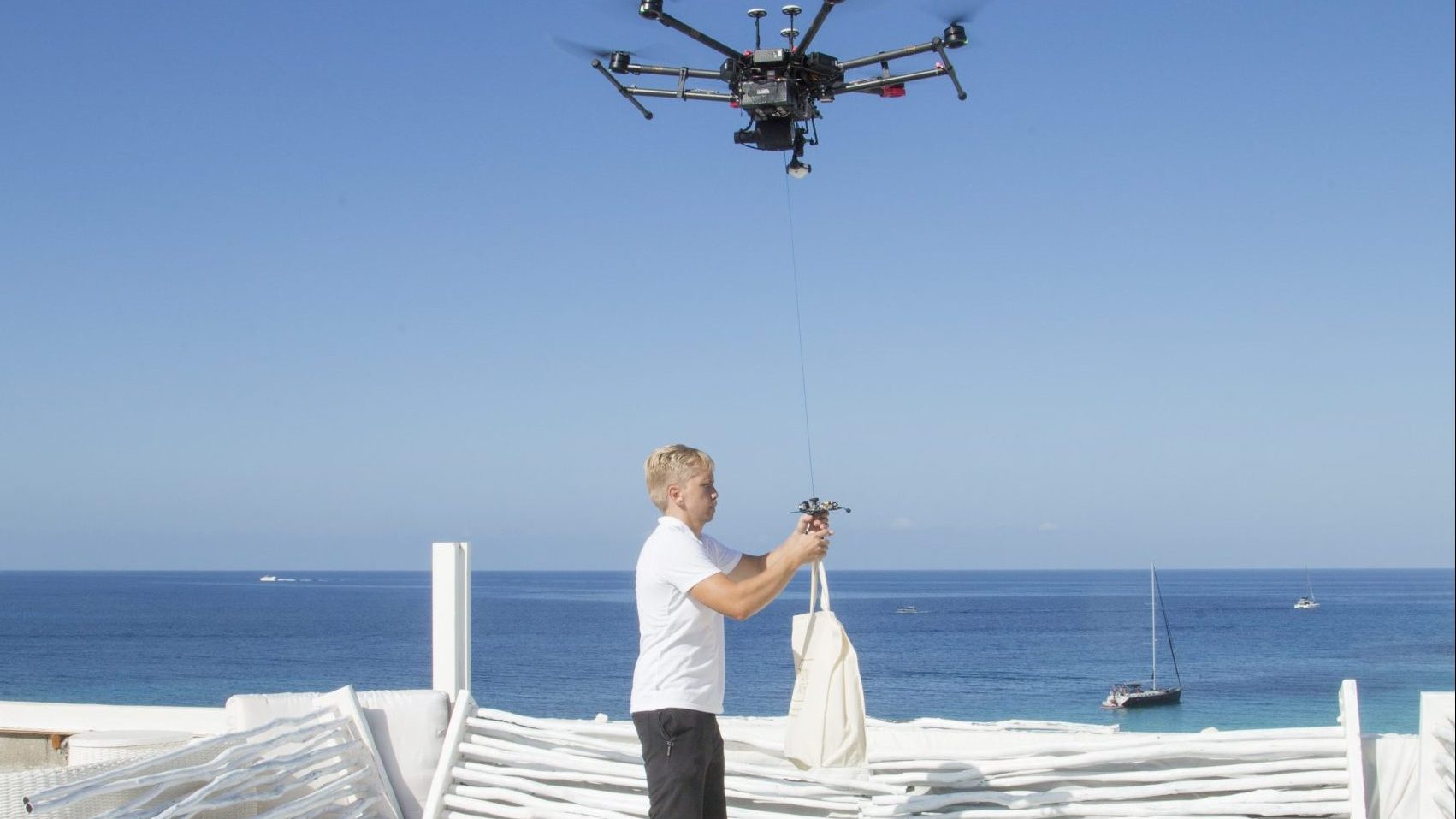
El Economista
Drone to yacht, the aerial “Glovo” for yachts, opens in Ibiza
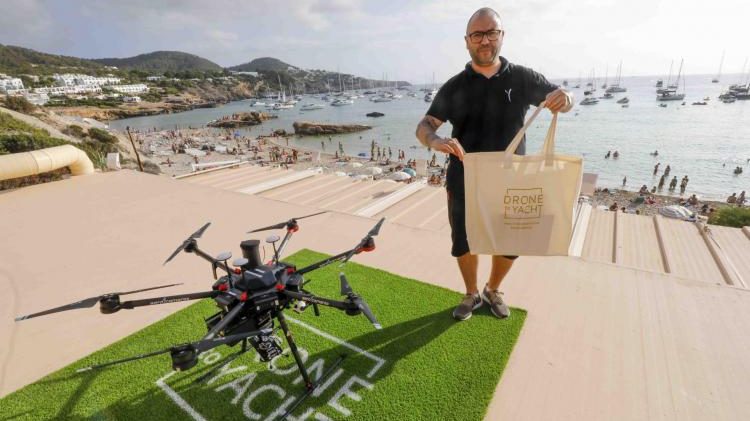
Periódico de Ibiza
Drone To Yacht will bring food and drinks to the yachts anchored in Ibiza
WHY CHOOSE Drone to yacht?

Distinctiveness over your competitors
With an unprecedented combination of luxury and technology.
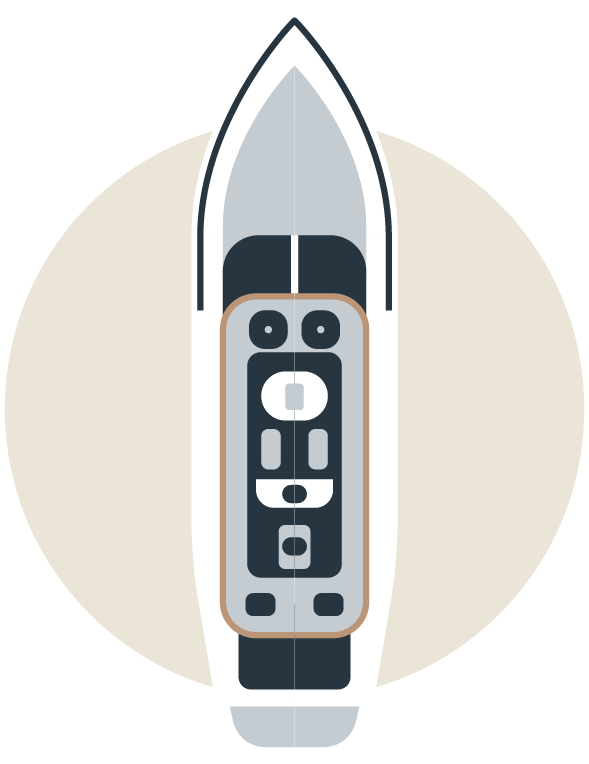
New target clients I New sales channel
Our mission is to provide a pleasant experience by reaching areas that would not be easily covered otherwise.

Increase on sales I Incremental revenue
Businesses who partner with us experience an increase on their revenue. Thanks to the tools that we provide to them they are able to upgrade their customer base and user experience.

Marketing and commercial development
We are able to concentrate all our marketing efforts towards a single brand. We have the potential to become an all-around-the-world known company that will assist your business thrive.

Drone To Yacht is on a mission to transform the way customers make their orders.
We believe that knowing what consumers want today is not enough. We are building a complete food delivery experience that many had never considered before. A service that anticipates and meets the expectations of the consumer of the present and the future.
Boost your business by offering your customers the possibility to receive your orders directly on their boats.
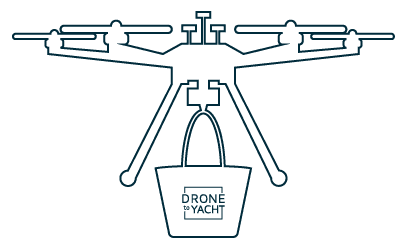
Become a partner
Expand your business possibilities by offering your costumers the possibility to receive their orders directly on their boats.
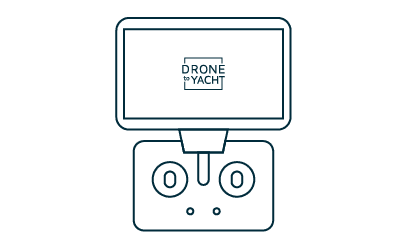
Become a pilot
Work as a drone pilot at Drone To Yacht and take care of getting all our orders to their destination.
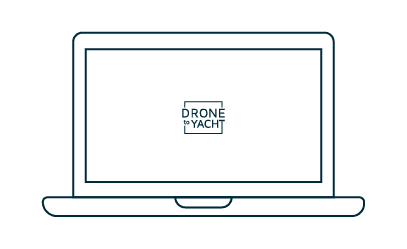
Work with us
Join our team and work in one of Drone To Yacht departments: administration, marketing, sales, IT,...

Coppercoat: The environmentally sensitive antifoul choice *sponsored post*

Yachting Monthly sponsors the Chichester Marina Boat Show and Watersports Festival

Round the Island Race 2019: Entries open

Düsseldorf Boat Show 2019: Fairline announces yacht line-up

Düsseldorf Boat Show 2019: Bavaria to showcase its complete range of motoryachts
- Subscribe Now
- Digital Editions
Best drones for sailing: Take your boating videos to the next level
- Phil Sampson
We pick out 8 of the best drones for sailing, from budget-friendly options right the way through to advanced 4K models

It’s no understatement to say that drones have changed the moving image landscape in a more dramatic way than any other product since the video camera was invented more than 100 years ago.
Why? Because a drone removes the limitations of fixed, or largely fixed, viewpoints at a stroke by giving its operator the freedom of the skies from which to film. Well, almost…
The caveat here is that anyone wishing to pilot a drone must first register and take a theory test to gain a Flyer ID for themselves, and then apply for an Operator ID for their drone. It’s all set down in the Civil Aviation Authority’s Drone Code .
The Drone Code also covers topics such as safety, where you can and cannot fly, and privacy protection. As such, it is the bible for wannabe droners.
Once the registration and ID hurdles have been overcome, there are then the not inconsiderable questions of what are you looking to achieve with a drone, and what sort of drone do you need to achieve it?
We’ve all seen those awe-inspiring TV and movie images produced by drone-mounted cameras soaring over ridges, speeding through gullies, circling 360-degrees around moving vehicles and so on.
These will have been shot by skilled professionals using professional equipment and while it’s eminently possible for the rest of us to create spectacular drone footage, do be aware that any successful shoot will demand considerable planning and preparation beforehand and editing skills afterwards.
And if you’re looking to film from a boat, you may also want to ask questions about landing the drone safely back onboard after a flight…
In terms of equipment, suitable drones for sailing fall into a number of categories – which for our purposes we’ve summed up as budget, intermediate and advanced:
Budget drones for sailing

Drone X Pro
Typical of the mass of entry-level drones available on eBay is the Drone X Pro, a three-speed foldable drone which gives around 10 minutes of flying time for a 100 minute charge.
Its control distance is limited to approximately 150 metres, which although it doesn’t sound much is the equivalent to the length of one-and-a-half football pitches. The Drone X Pro shoots in 4K ultra high definition and boasts a range of features including 360-degree rolling, one key take-off and landing, and one key Auto Return.
Smartphones clip onto the drone’s handset to provide a straightforward controller with real-time screen viewing.
Price: £18.99
Buy it now on eBay
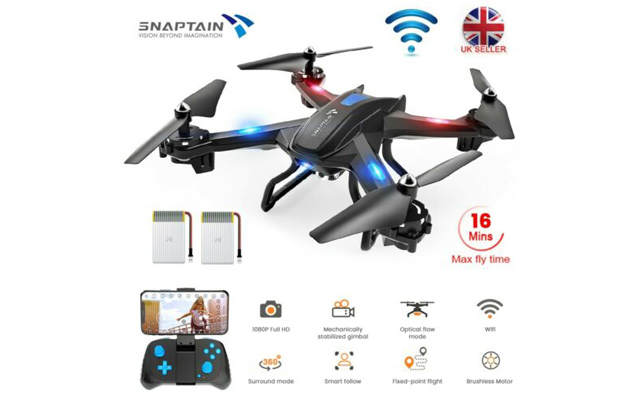
Snaptain GPS
We’re hoping this drone’s name is not an amalgamation of ‘snap’ and ‘captain’, and on the presumption it won’t make boaters lose their cool we’ve added it to our best drones for sailing list because the Snaptain GPS delivers a host of features at a budget price.
Included in the spec are a wide angle 1080P HD camera, a mechanically stabilised gimbal and voice control, which is affected by speaking command words (eg: forward, back) into your connected smartphone.
GPS enables functions such as Follow Me and Auto Return and there’s an Optical Flow mode to help keep the drone’s lateral and forward movement stable relative to what’s below it. As such, Optical Flow provides a useful stability tool should the GPS signal be lost.
Price: £35.99
Intermediate drones for sailing

Proflight X18
Moving up a level in sophistication we come to the Proflight X18. Providing up to 25 minutes of fly time, this drone has a 4K UHD camera, so the footage it delivers should be super-clear.
There are also controls for camera zoom and tilt, plus a gesture mode which allows the user to control the drone by way of hand and arm movements aimed at their smartphone app, which dutifully relays the commands to the drone.
The Proflight X18 has a range of 1,000 metres, although its WiFi is limited to around 600 metres. An extra bonus is that this drone is supplied with a spare set of propellors.
Price: £129.97
Buy it now on DronesDirect.co.uk
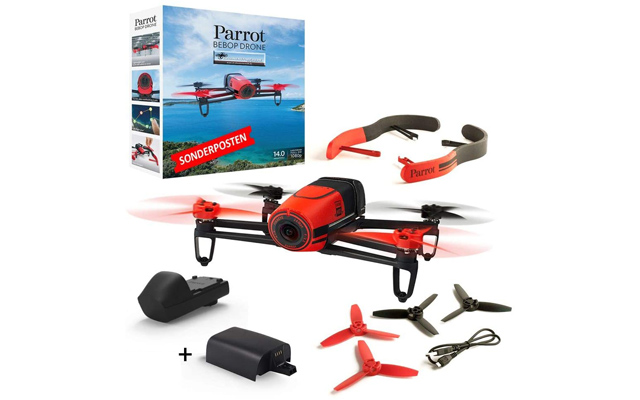
Parrot Bebop
Simplicity in motion sums up the funkily named Parrot Bebop as this drone features an intelligent flight system which automatically keeps the Parrot aloft and under the user’s control at all times by way of its associated app.
The integrated onboard camera takes 14 mega pixel 180-degree fish eye photos and shoots 1080p high definition video, which can be monitored from the ground by way of a live feed direct to the pilot’s phone.
The Parrot Bebop can manage up to 12 minutes on a single charge, so investing in a spare battery might well be an option to consider here.
Price: £263.99
Buy it now on Amazon (UK)

Holy Stone HS720E
One of the key advantages of the Holy Stone HS720E is that it’s supplied with two intelligent batteries. Each of these provides up to 23 minutes of flight time, meaning more time in the air and less charging.
The unit’s brushless motors are powerful and quiet in operation and have been designed to make flying smooth, stable and fast. Air optical flow and air pressure altitude controls are both included, meaning the drone can hover stably.
The integral GPS system locks onto the position of the drone before take-off, which in turn enables the auto-return to home function, thereby minimising the chances of the drone being lost.
Price: £254.99
Advanced drones for sailing

Yuneec Typhoon Q500
Raising the bar another notch is the Yuneec Typhoon Q500, our choice for a sub-£1,000 advanced drone for sailing. Inside the box is the aircraft itself, its 4K UHD 30 frames per second camera, Yuneec’s ST10+ FPV (First Person View) ground station, a Yuneec SteadyGrip, a Lithium Polymer battery and a range of accessories.
One of the many advantages of the Yuneec Typhoon Q500 is that its ST10+ ground station has an integrated 5.5″ LCD viewing screen, meaning that no other equipment (e.g. smartphone) is required for flight.
The system comes with a range of features and modes, including Follow Me and Watch Me (where the camera remains pointed at the pilot) and Dynamic Return Home, which automatically lands the drone within 4-8 metres of the ground station.
Price: £699.99

DJI Mavic 2
With an established range of gimbal-equipped cameras under its belt, DJI is an experienced player in the stabilised image field. The DJI Mavic 2 sees the company’s expertise applied to the world of drones, where it is undoubtedly making a fine job of matters.
The Mavic 2 Zoom featured here is classed as a professional level piece of kit and as such offers high resolution still images and video shot through its camera’s 24-48 mm optical zoom lens, with a further x2 magnification available digitally.
Fast, accurate focus is another stand out feature of this drone and its Dolly Zoom mode automatically adjusts focus when flying to provide what DJI describe as an intense warping visual effect.
Price: £1,059

DJI Air 2S Worry-Free Fly More Combo
As the name on the box infers, this DJI offering is an all-in-one product intended to dispel any fear of flying and freeing its owner to concentrate on making great movies – the bundle even includes a service plan covering various types of common drone damage.
Anyone still worried about the risks can comfort themselves with the fact that the DJI Air 2S also has AirSense, a flight location system which provides audio and visual alerts of other aircraft in the vicinity through the DJI Fly app.
Two video options of 4K and an even higher resolution of 5.4K come as part of the package, which also features a 5.5″ smart controller with its own 1080p HD display.
Other items supplied in the combo are three intelligent flight batteries, a charging hub, a set of neutral density filters to aid shooting in bright conditions, and a shoulder bag.
Price: £1,229

Drones on Boats: Choosing a Drone and How to Fly it While Boating
Step-by-step on how to buy a drone for boating use and learn to safely launch and recover a drone from your boat [with video].
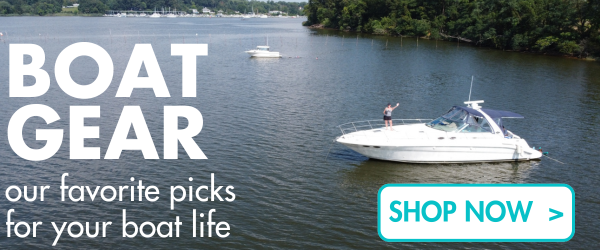
There is no doubt that small [1] unmanned aircraft systems [2] (sUAS or drones) are becoming nearly as common place as iPads and smartphones. The features and capabilities of these machines are astounding and not the least of which is the quality of the available on-board cameras.
With the popularity of drones on the rise, it’s no wonder that many boaters are intrigued by the idea of bringing a drone on their boat and having the ability to capture aerial video & photos of your boat at your favorite anchorage.
Before launching a drone from your boat, you’ll want to do your research on the best drone to buy, learn about FAA laws and practice flying your drone on land. It’s very important to plan ahead for your drone launch and recovery when flying it on the water from your boat.
This article addresses everything you’ll need to know about selecting and flying a drone with the intent of using your boat as a launch and recovery point.
Make sure to watch his video demo at the end showing the drone launch, flight and recovery on a boat!
Types of Drones
The range of sizes for remote controlled aircraft is stunning. Most people think of drones that fit in suitcase sized carriers or fold or collapse into a large backpack carrier. However, there are a category of sUAS called nanodrones – the smallest of these which are available commercially to the public can literally fit in the palm of your hand.
Apart from the thrill of flying a drone, most people are particularly attracted to the camera functions which may be available on a given drone. Bear in mind that the size of your drone can be directly related to the quality of any onboard camera and, by extension, to the quality of any images or videos you may record.
By the Number of Rotors
By far, the most common configuration on the market is the quadcopter with 4 rotors. This design makes controlling the motion of the drone in its 4 degrees of motion relatively easy. Those 4 would be translation in 3 dimensions plus rotation around the vertical axis. (Note that lateral and longitudinal rolls are generally undesirable!) That being said, it is possible to find drones with 3 to 8 rotors.
Two rotor standard RC helicopters are available but much more difficult to learn to fly. While 4 rotors may be somewhat optimal, you might infer that more than 4 rotors, which also means more than 4 motors, could represent a faster drain on the battery and therefore, a constraint on the amount of flight time.
Recreational versus Commercial
Any sUAS drone can be used either recreationally or commercially. The one big difference is that in the latter case, the operator MUST be certified by the Federal Aviation Administration (FAA). Commercial use means receiving compensation of any kind for the use of your drone.
Certification is simply taking a written test. That test includes basic elements which are also on the license exam for private pilots. Naturally, there are also questions on the operation of drones and questions to test knowledge of the rules as spelled in FAA Part 107. There is no flight test.
Regardless of intended use, ALL drones MUST be registered with the FAA . A very useful online resource is Know Before You Fly . It contains pages of information including FAQs and links to relevant sites such as where you go to register your drone.
Selecting a Drone
Before you purchase a drone and spend upwards of $1500…or more, be an informed and prepared consumer. It is an expensive item and you are committing yourself to obeying the laws regarding its use.
It should be noted that some drones come with pre-programmed geo-fences . That is, they are smart enough to know NOT to approach certain areas and at least one manufacturer has configured its drones to not even take off within 20 miles of Washington, DC. Before buying a drone, you should find out if you live or intend to fly in one of these exclusion zones.
First of all, make a list of all of the features that you want in a drone . This might include things like camera quality, whether you want a camera at all, user interface design on the remote control, flight time on a fully charged battery, flight range from the controller, carrying case, and other potentially useful features like auto take off and land, return to home, and preprogrammed flight maneuvers. It appears most of the drones in the $1000 range have all of the features I just listed.
Determine your budget . The number and relative quality of features will affect the price you pay. With online shopping websites, it is very easy to compare drones for features and prices. In creating your budget, be aware that you may need or want to purchase additional items like spare batteries, spare rotors, or a carrying case if one is not included in the base price.
Select your manufacturer. By comparing features and prices, you are likely to find a few manufacturers that can meet your requirements. Be sure to review customer comments online. Drones on Amazon and sites like Carolina Dronz offer a variety of drones with consumer feedback. Pay particular attention to issues of customer service! Where you buy is completely up to you. However, consider whether it is better to order online and have it shipped or to simply buy it at your local Best Buy !
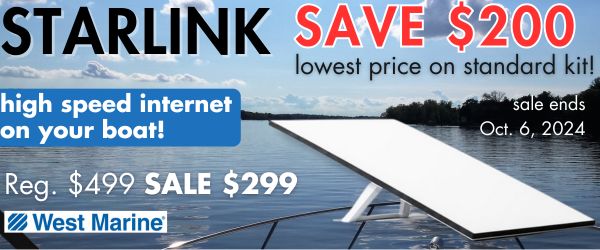
The Autel Robotics X-Star Premium is very easy to fly. Their customer support is VERY responsive and maybe best of all, it is American made! I am very happy with my purchase. I subsequently purchased an additional battery and combination lens cap and gimbal lock.
My comments here do not represent a commercial endorsement or recommendation of any kind. I am merely explaining the choices I made and why.
Learning to Fly Your Drone
Before you get clever and try to fly your new toy off your boat, you should absolutely follow the manufacturer’s instructions and practice on land in an appropriately open area.
You will want to get a feel for take-off and landing. You will want to understand how fast the battery drains and under what conditions. You will want to try all of the features available in a controlled environment. Do experiment with moving your aircraft around. Play with the camera settings as well for both photos and videos. Understand how to adjust your exposures for the best photos given any given lighting conditions.
I first practiced in my backyard and then tried it from the parking lot of the office tower where I work. With each flight, I directed my drone to fly higher, faster, and then farther and farther away. This let me determine just how far I could visually track the aircraft and to understand how obstacles affect the range of control. Eventually I flew my drone at my marina but from land. I did some overwater flights but I always launched and recovered on solid ground.
Fully understand all of your flight controls. The one thing with which some people struggle is using the point of view monitor on the controller versus flying the drone while looking at it. The challenge is more so when flying the drone towards you because your control inputs may be reversed from your intentions.
Launching and Recovering Your Drone from Your Boat
First take a deep breath… There are a still few things to do before you try this. In this case, “dry run” is not just jargon!
Unless you own a boat that has wide open flat spaces on deck or cabin tops, recovery of your drone will mean grabbing it out of the air as it hovers close at hand. The best way to do this is to have an assistant grab and hold the drone while you work the controls. Do NOT try to do both at the same time.
Keep the rotors above the head of your helper so that they can reach up to grab the aircraft. The most important thing will be to shut down the rotors once your assistant has a firm grasp on the drone. The rotors are sharp and spin fast. They can easily cause injuries like lacerations. You will not want to shut down the motors until s/he has a good grasp on it in case you need to fly the aircraft up and away to prevent it from crashing into the water or into your assistant.
Practice this maneuver on land a few times so that both pilot and recovery crew get a feel for how it will be. Also, beware of the down draft from the rotors. It is significant and could startle an unaware individual.
Let me offer a word of caution here that may or may not be obvious. Many drones have a Return To Home feature where you can command the aircraft to return to its launch site and land automatically. For what may be obvious reasons, you do NOT want to do this on a boat. The Return To Home function is sometimes automatically initiated when the batteries get low. Always manually fly your drone back for recovery before the battery gets too low.
Time for the Real Thing!
Pick a flat stable place on your boat from which to launch. You will want to have the widest possible circle of clear space. The drone will lift off and possibly side slip or drift momentarily until it can lock in its GPS position. During that brief time, you will want to be clear of rigging, sails, or any other obstacles.
Once your drone is hovering, fly it away from the boat…especially if the boat is swinging or rocking. All drones come with recommendations on safe weather conditions in which to fly. You will want to be even more conservative with those limits when flying from a boat.
You may wish to start by orbiting your boat. Then advance to exploring your anchorage. By the way, not only do I NOT recommend flying while your vessel is underway, the FAA regulations put limitations on that ( CFR 107.25 ).
While you are exploring your anchorage, remember that other boats anchored nearby may not enjoy the presence of your aircraft, regardless of how cool you may think it is. Keep your drone a safe and respectful distance from other boats.
Also, there are rules on how close you may fly to an airport. Remember to check if there are any airports within the area of concern around your anchorage.
When you are ready to recover your drone, have your assistant stand on a flat stable deck area. It should be open to allow the unimpeded approach of the drone and to also prevent your helper from having to lean or otherwise contort themselves to reach the drone.
Instruct your recovery helper to never jump, lean, or get off balance when reaching for the aircraft. Once you have secured the aircraft, enjoy your photos and plan your next flight!
Drones are fun and can even provide a source of revenue. They are available most everywhere. If you want to use one while boating, do your research, make smart choices, and obey the laws. You can anticipate years of pleasure and great memories captured in aerial photos and videos!
Watch how Capt. Rob launches and recovers his drone from his boat, Bay Poet , while anchored on the Chesapeake Bay.
Subscribe to my YouTube Channel for more how-to videos, sailing excursions and more!
[1] A small UAS is defined to be less than 55 pounds in weight at the time of takeoff. This includes everything that is onboard or otherwise attached such as a separate and detachable payload.
[2] Small unmanned aircraft system (small UAS) means a small unmanned aircraft and its associated elements (including communication links and the components that control the small unmanned aircraft) that are required for the safe and efficient operation of the small unmanned aircraft in the national airspace system. Unmanned aircraft means an aircraft operated without the possibility of direct human intervention from within or on the aircraft.
Trending Now: Must-Have Boat Gear for Your Boat Life
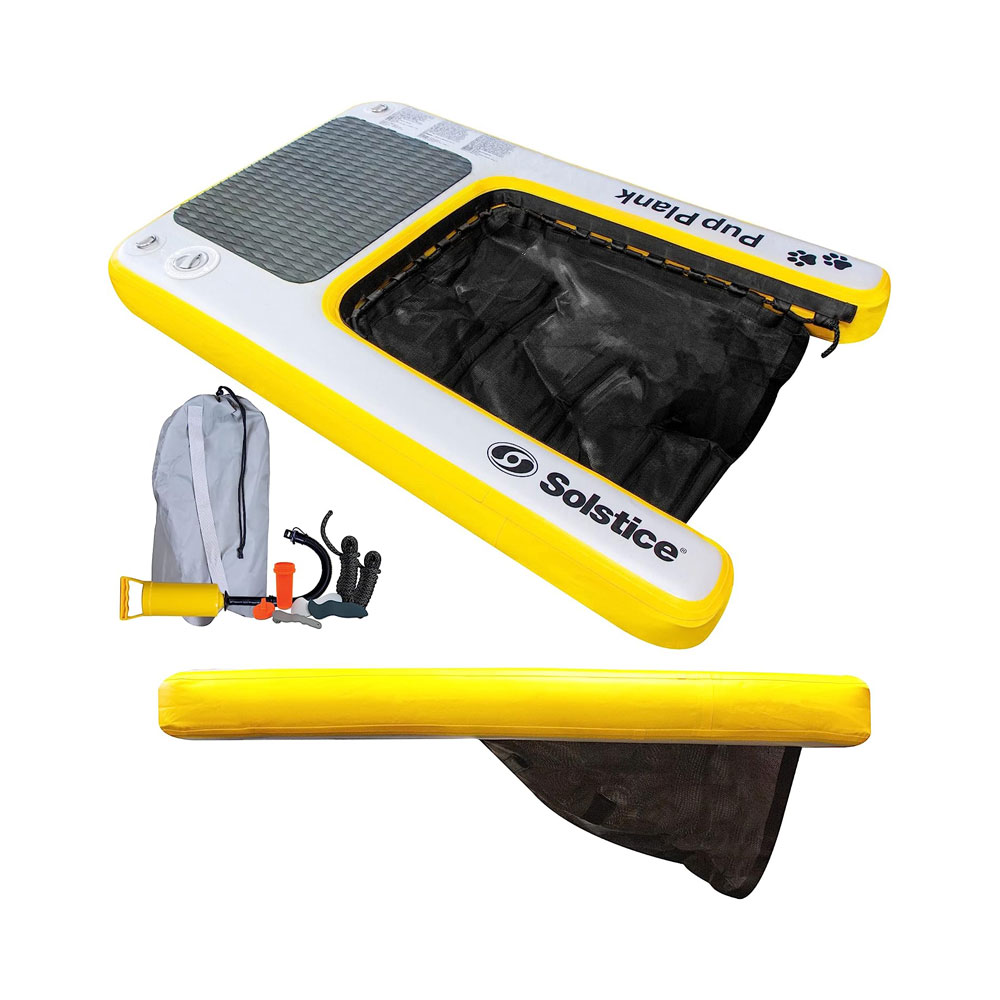
Inflatable Floating Pet Ramp
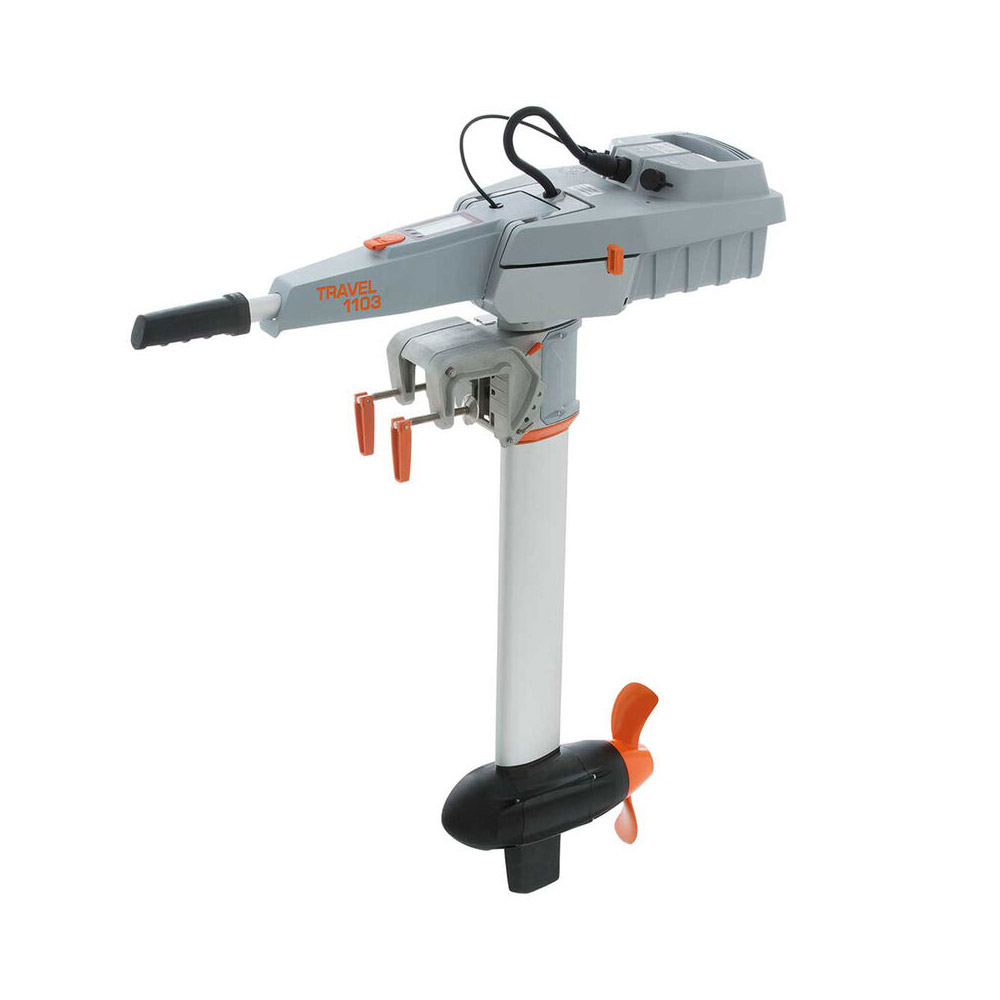
Torqeedo Travel 1103 CS Electric Outboard Short Shaft
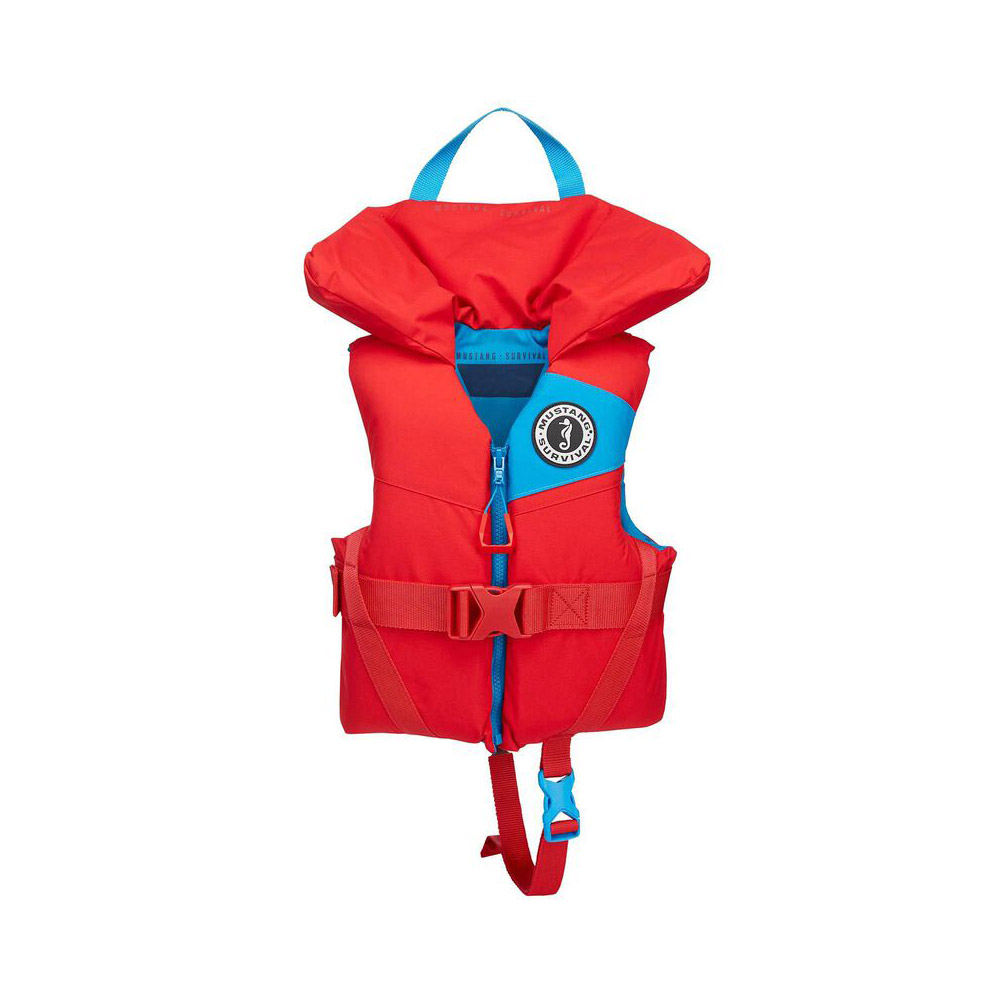
Mustang Survival Lil’ Legends Infant Jacket
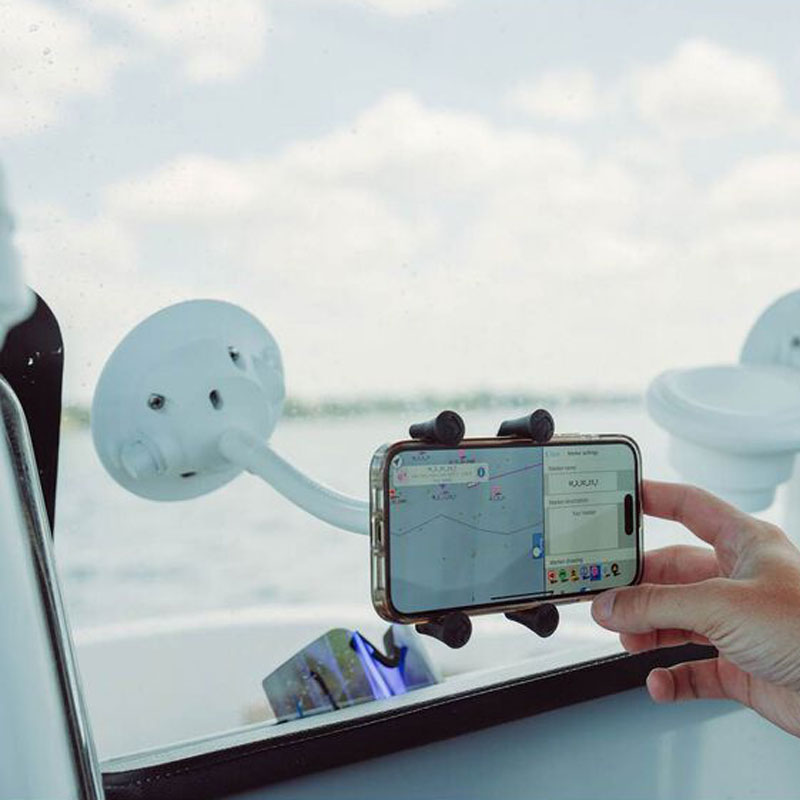
SeaSucker Flex-X Cell Phone Mount
Trending now: custom nautical decor for your boat life.
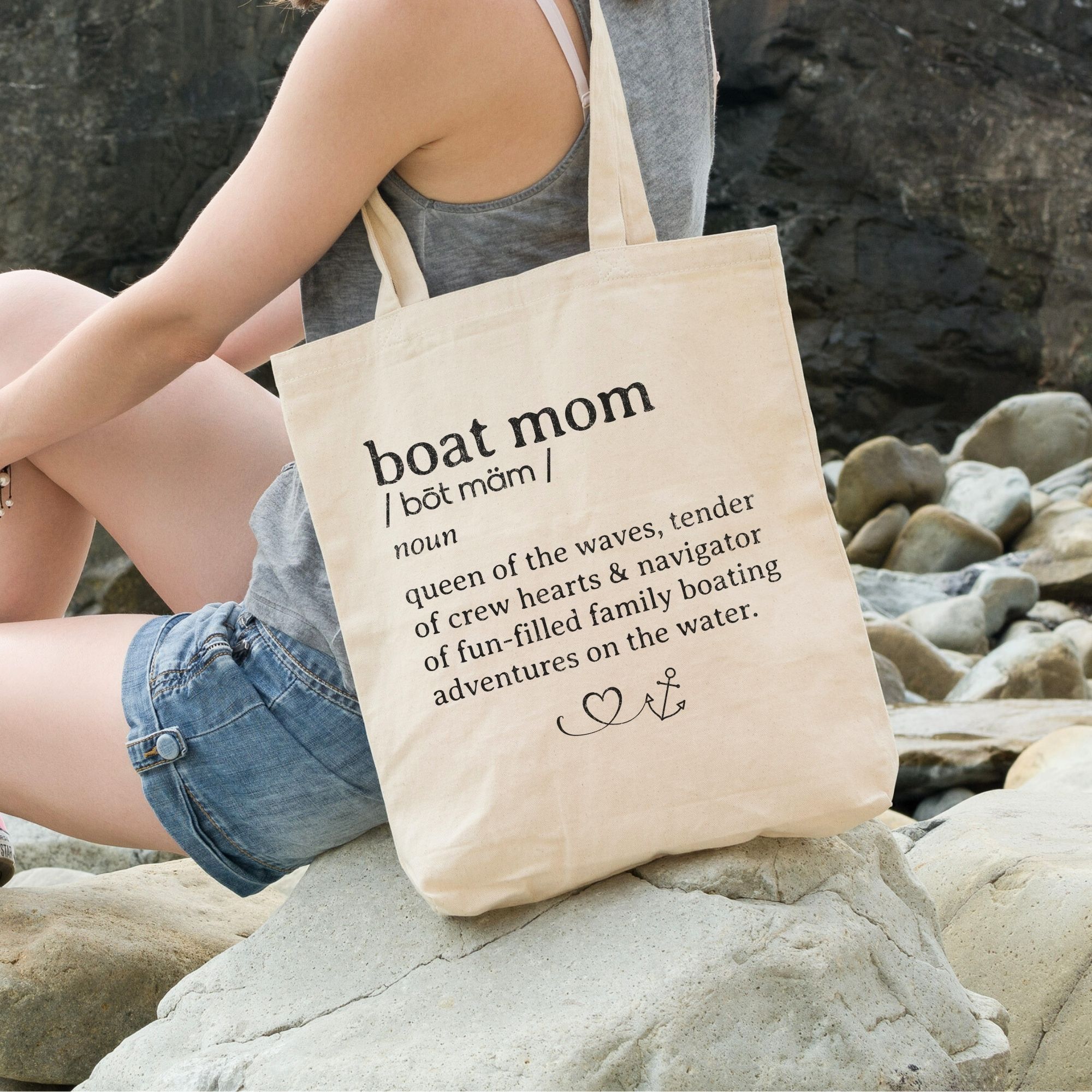
Boat Mom Definition Canvas Tote Bag
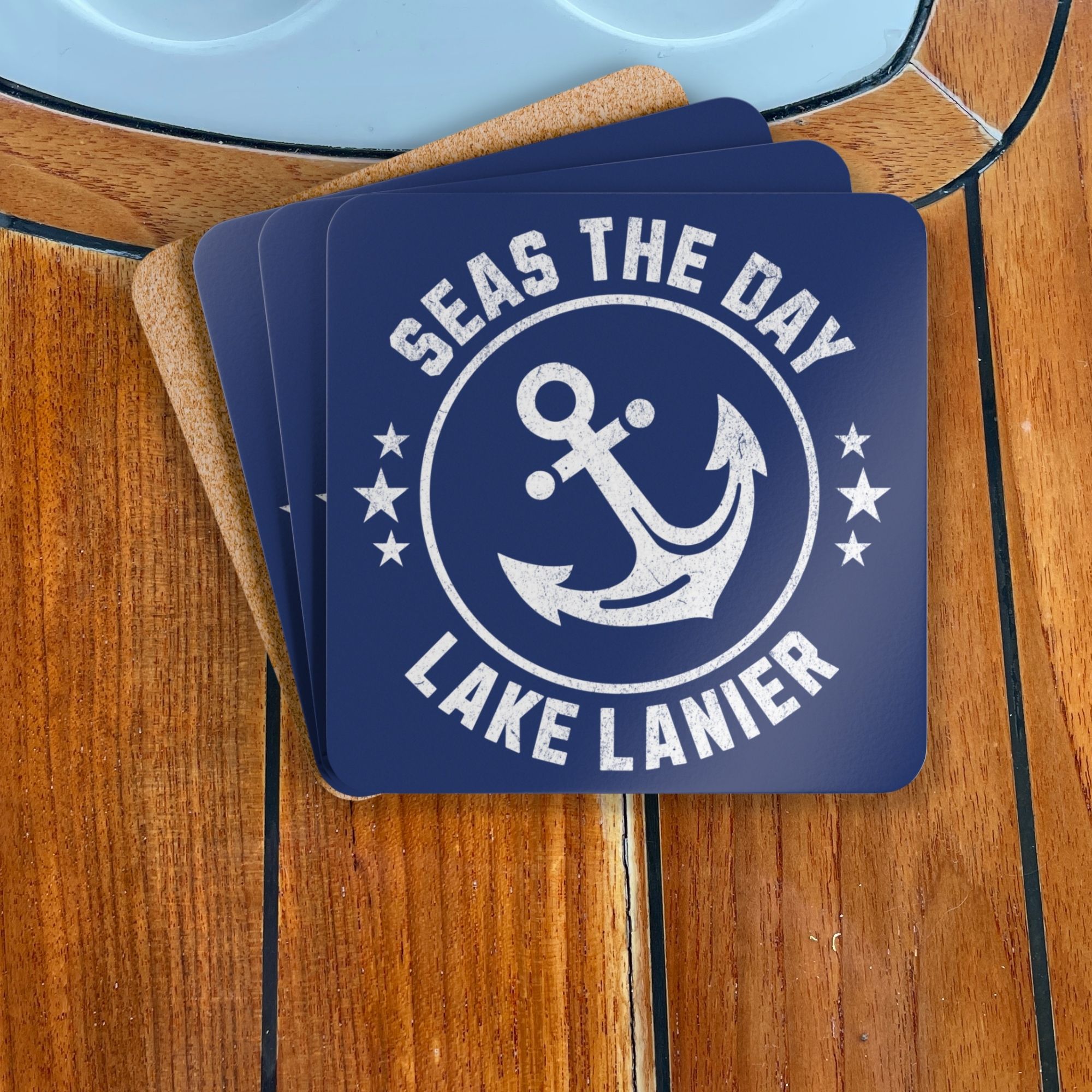
Custom Boat Coaster Set with Boat Name – Anchor
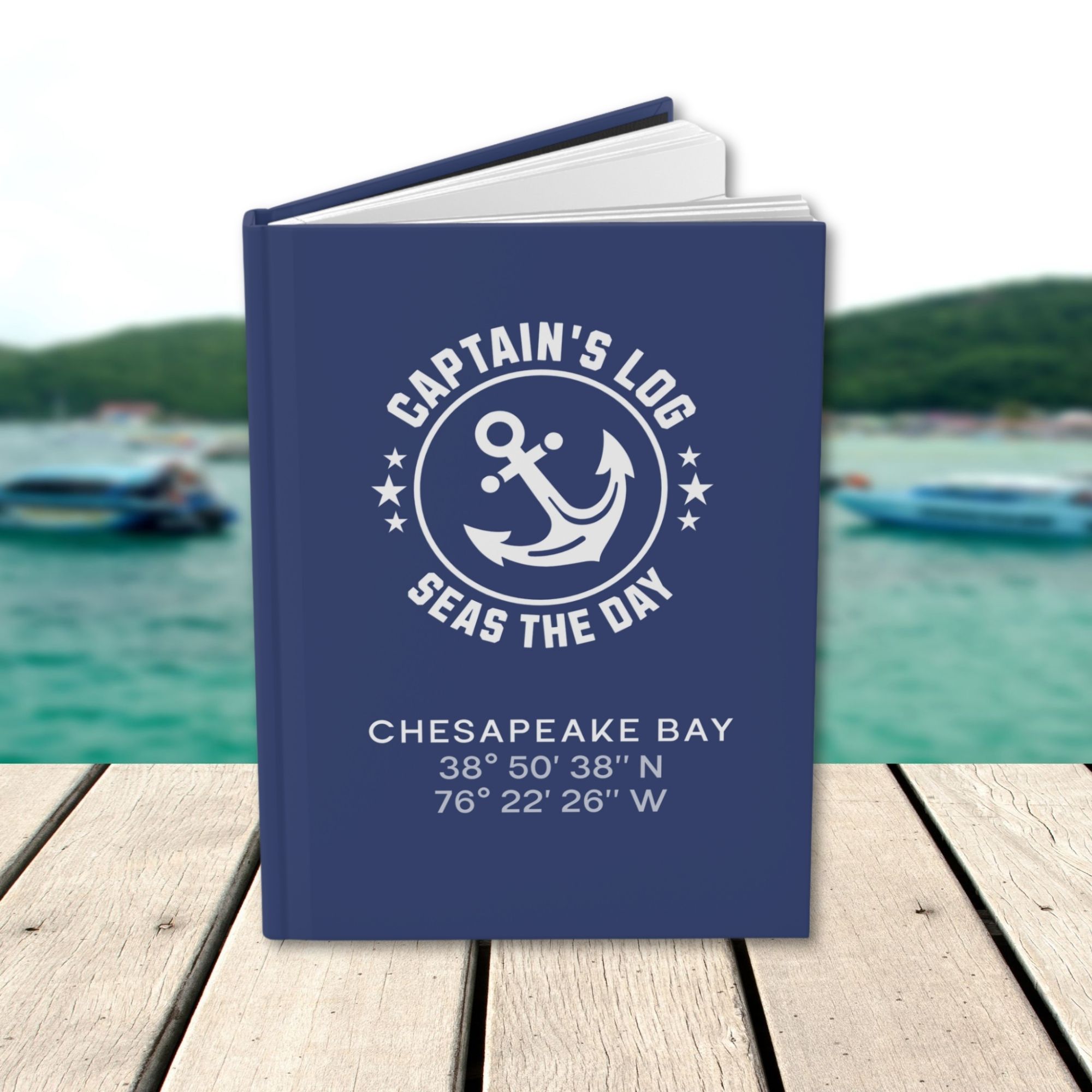
Captain’s Log Book Personalized with Boat Name – Anchor
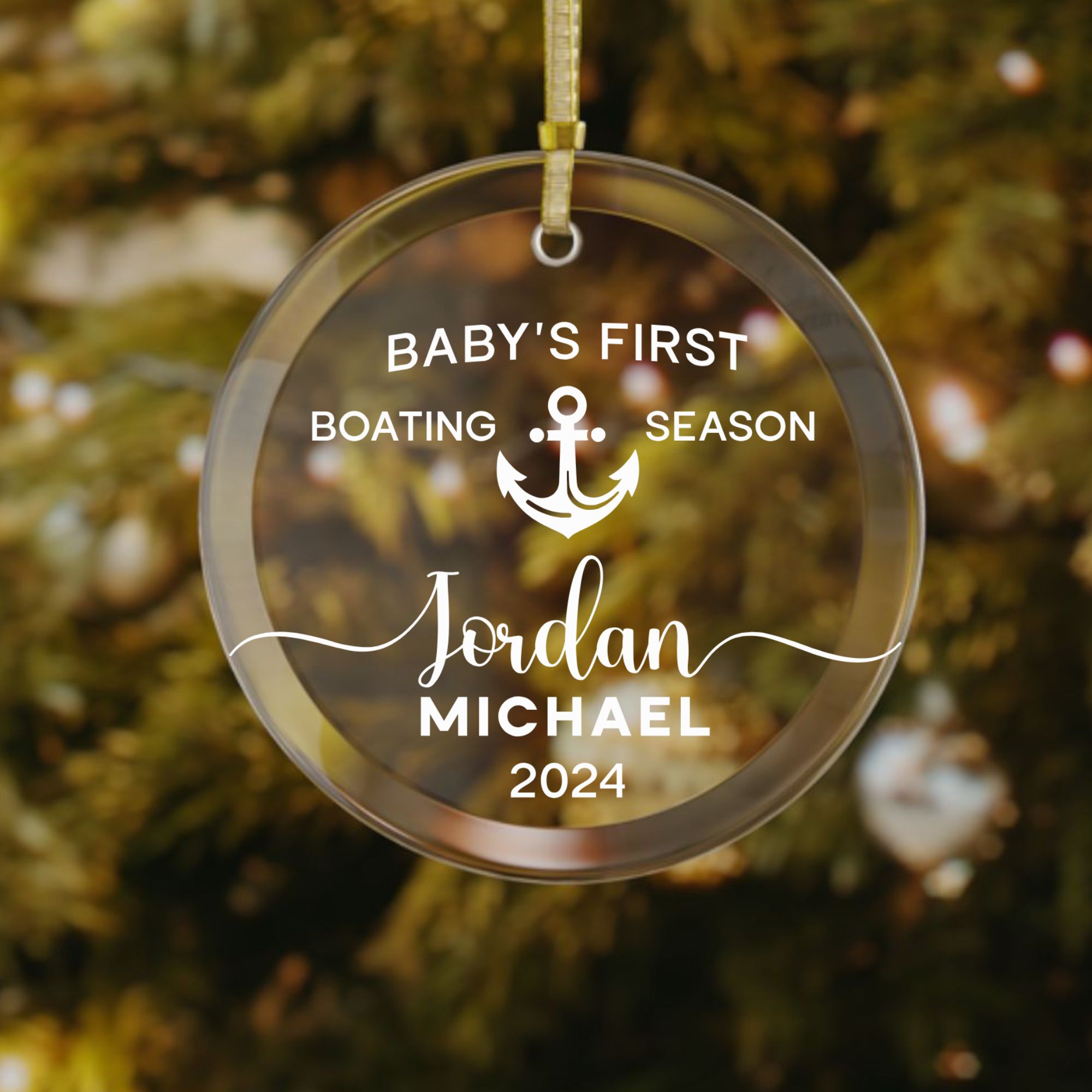
Custom Baby’s First Boating Season Ornament – Acrylic or Glass

Capt. Rob Chichester
Related posts.
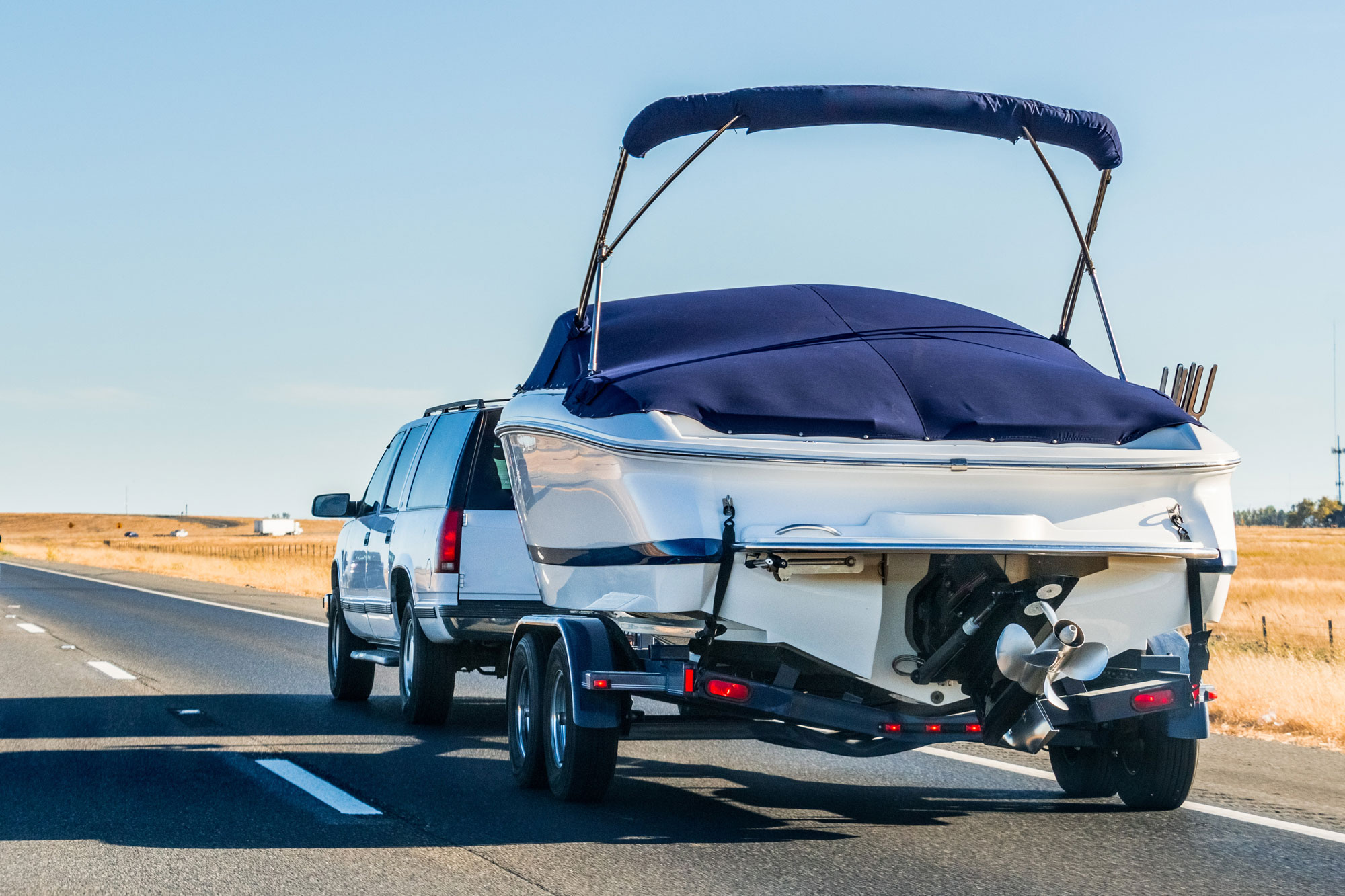
Equipment Needed To Tow Your Boat
September 20, 2024
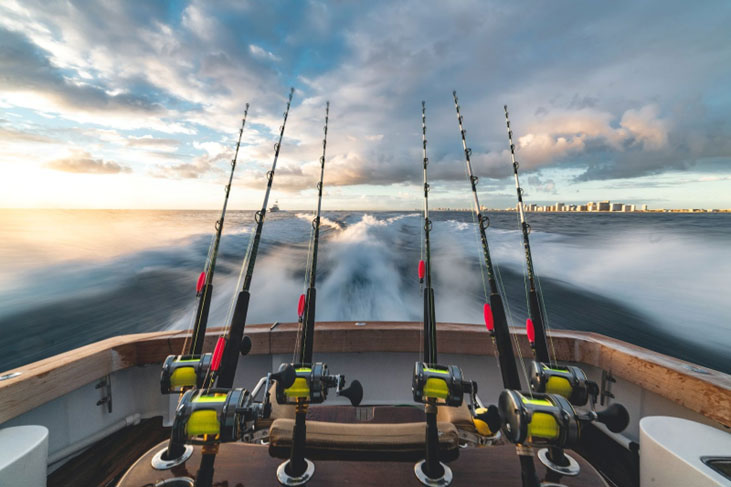
5 Must Haves to Carry in Your Boat
July 25, 2023
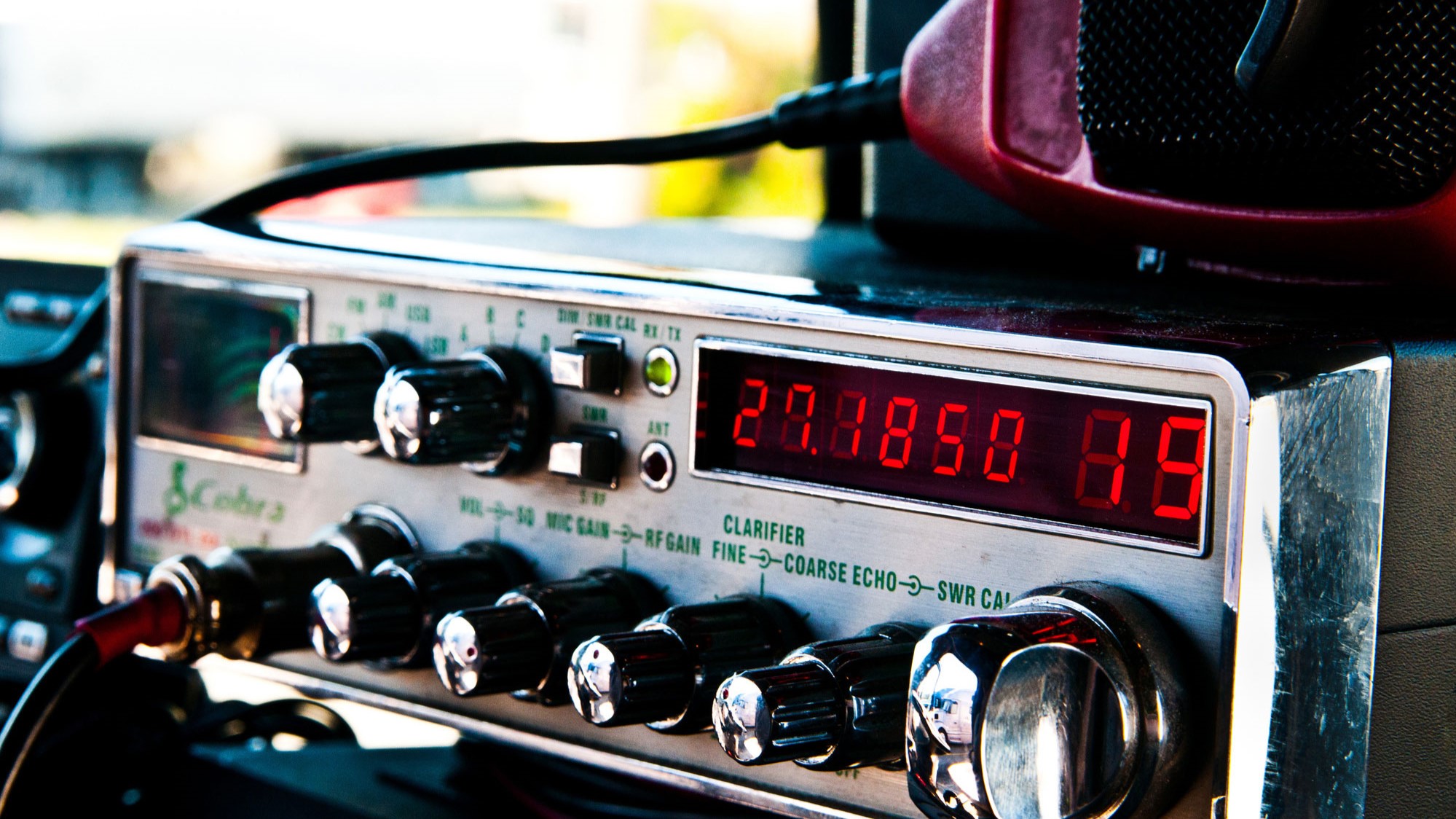
Why Boaters Should Use A Citizens Band (CB) Radio
March 28, 2023

I like the X-Star Premium a LOT! It is easy to fly, takes great photos, and the price was right. I also like the hard case that comes with it. That is important when sailing as things can move around the cabin as the boat heels and tacks. The three best features…in no particular order…are the cost, the orange color, and the responsivity of their customer support.
Awesome article, your footage looks really good! How are you finding the Autel X Star? I’m looking for a drone to use when I go out sailing with my brother, and have come across [an article on drones] the Autel isn’t on there, but after looking at your footage and reading your article I’m seriously considering it! Although I am intrigued by the portable aspect of the DJI Mavic Pro. Will have to think on it some more.
Anyway, thanks again for the article, was extremely insightful!
Comments are closed.
- 2024 BOAT BUYERS GUIDE
- Email Newsletters
- Boat of the Year
- 2024 Freshwater Boat and Gear Buyers Guide
- 2024 Boat Buyers Guide
- 2024 Water Sports Boat Buyers Guide
- 2024 Pontoon Boat Buyers Guide
- Cruising Boats
- Pontoon Boats
- Fishing Boats
- Personal Watercraft
- Water Sports
- Boat Walkthroughs
- What To Look For
- Watersports Favorites Spring 2022
- Boating Lab
- Boating Safety
- Ultimate Boating Giveaway

Drones for Boats
- By Jim Hendricks
- Updated: September 7, 2018
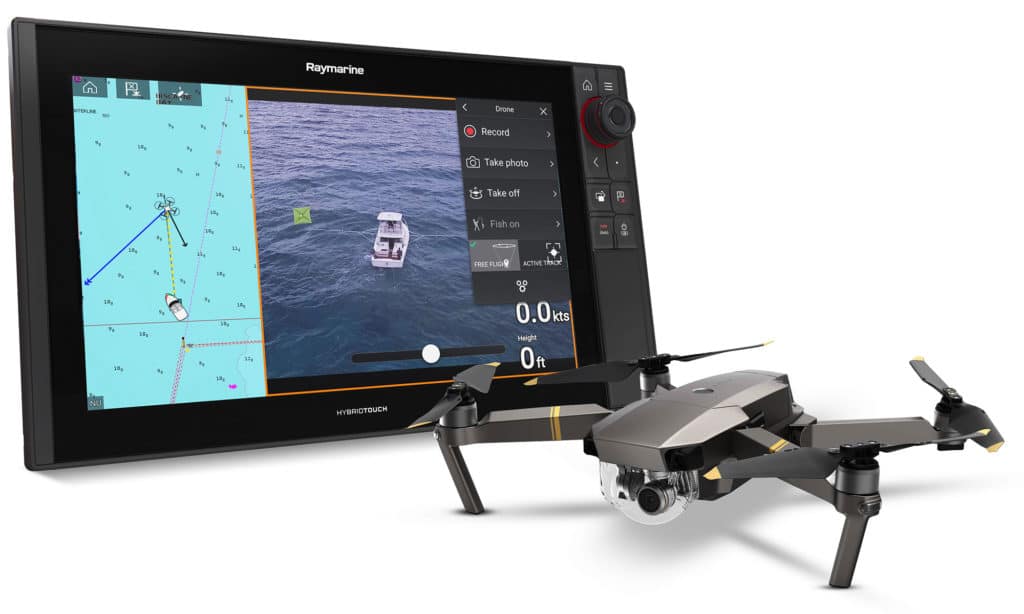
With marine multifunction displays, you can look underwater with sonar, all around the boat with radar, and even peer through the dark with a thermal camera. Now you can also look down from above on your boat, thanks to the unmanned aerial vehicle (UAV) control feature built into the Raymarine Axiom and Axiom Pro MFDs.
This marine-electronics first allows boaters to connect to a UAV, then control the drone and view images from its camera using the Axiom display. The patent-pending technology is currently compatible with DJI Spark and DJI Mavic series UAV video drones (see “Compatible UAV Models”). Features include single-button launch/track/record functions, GPS link for various follow modes, and real-time video streaming to the MFD.
It works like this: First you need to update your Axiom or Axiom Pro with the latest Raymarine Lighthouse software — version 3.5 — a free download directly to the MFD. Then pair a drone such as the DJI Mavic Pro (shown left, $1,299, store.dji.com) with the MFD. Press Take Off to launch the UAV and track it with a live-chart display on one side of the Axiom split-screen display, which will show the drone’s location, along with the direction in which the camera is pointed, the direction the drone is headed, and the course back to the boat.
The other side of the split screen shows a live feed from the UAV’s video camera with data overlays that include the drone’s distance from the boat, as well as its speed and altitude.
A Fish-On button is designed to automatically capture fishing action. As soon as you hook up (for example, while trolling for tuna or drifting for tarpon), you press the Hook-Up button. The drone instantly launches, acquires and tracks the boat, and starts recording aerial footage of the action. You can also view the action live on the Axiom display to see, for instance, if any mahi are following the one you just hooked.
Compatible UAV Models The new UAV control function of Raymarine’s Axiom and Axiom Pro MFDs is compatible with these video drones.
DJI Spark The affordably priced Spark mini drone (not shown) includes ActiveTrack, which can automatically recognize and track objects. PalmControl mode allows you to control the Spark’s movements and take pictures with hand gestures, and a stabilized two-axis gimbal for smooth video footage. You can choose from pano or shallow-focus modes to get the shots you want. Return-to-home mode ensures you won’t lose your Spark when the battery runs low. With flight speeds up to 31 mph, it offers 16 minutes of maximum flying time on a single battery charge. $399; store.dji.com
DJI Mavic Air Among the Mavic series is the Mavic Air (shown left). Designed to fold for easy transport, it features top-of-the-line flight and video performance. The three-axis gimbal, three-directional environment sensing, and 4K camera offer the capability of 32 megapixel sphere panoramas and 100 Mbps video capture. Gimbal dampeners create steady shots. It includes a remote, but you can also use hand gestures to launch and control this drone in SmartCapture mode. With flight speeds up to 42.5 mph, it offers 21 minutes of maximum flying time on a single charge. $799; store.dji.com
- More: Electronics , Gear , raymarine

Inflatable Water Mats for Boaters
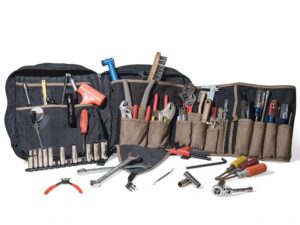
Choosing the Right Tools for Boat Repairs
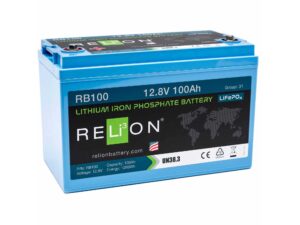
What Are the Best Trolling Motor Batteries for Your Needs?
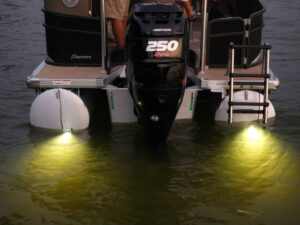
Guide to LED Pontoon Boat Lights
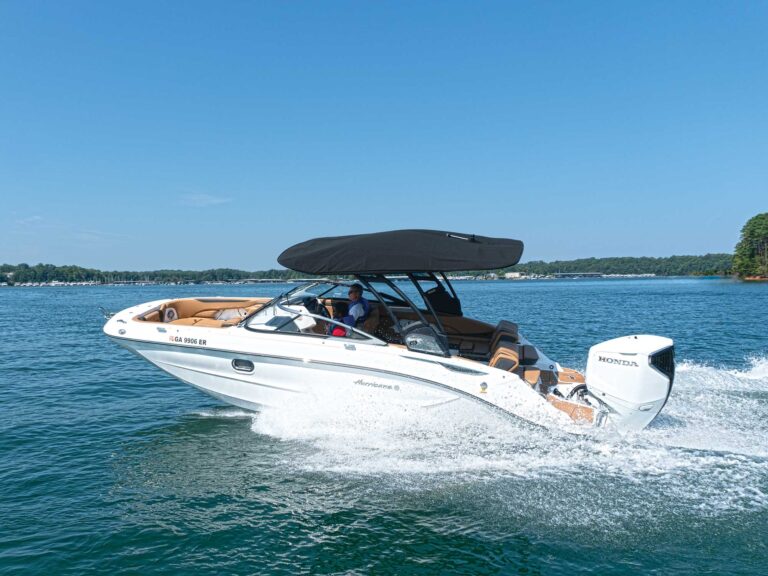
Boat Test: 2024 Hurricane SunDeck 2600 OB
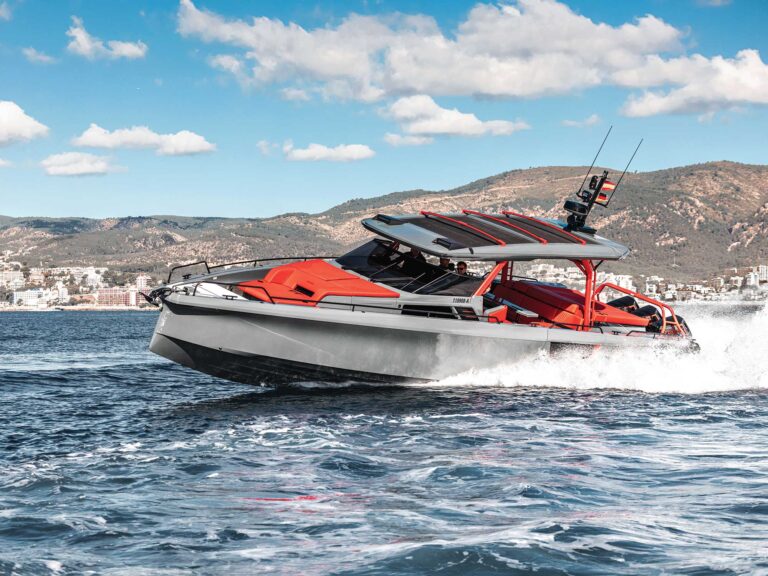
Boat Test: 2024 Brabus Shadow 1200 Sun-Top
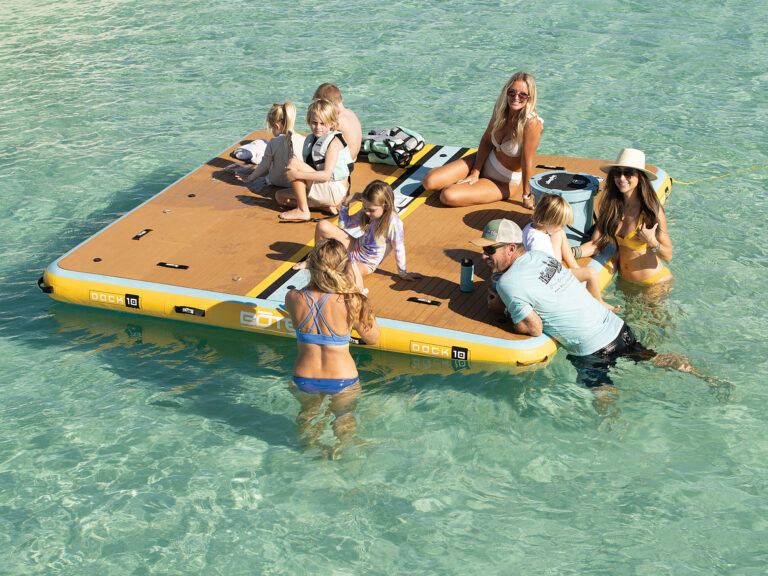
Boat Test: 2024 Monterey Elite 30

- Digital Edition
- Customer Service
- Privacy Policy
- Terms of Use
- Cruising World
- Sailing World
- Salt Water Sportsman
- Sport Fishing
- Wakeboarding
Many products featured on this site were editorially chosen. Boating may receive financial compensation for products purchased through this site.
Copyright © 2024 Boating Firecrown . All rights reserved. Reproduction in whole or in part without permission is prohibited.
- Israel-Gaza War
- War in Ukraine
- US Election
- Kamala Harris
- Donald Trump
- US & Canada
- UK Politics
- N. Ireland Politics
- Scotland Politics
- Wales Politics
- Latin America
- Middle East
- In Pictures
- BBC InDepth
- Executive Lounge
- Technology of Business
- Women at the Helm
- Future of Business
- Science & Health
- Artificial Intelligence
- AI v the Mind
- Film & TV
- Art & Design
- Entertainment News
- Arts in Motion
- Destinations
- Australia and Pacific
- Caribbean & Bermuda
- Central America
- North America
- South America
- World’s Table
- Culture & Experiences
- The SpeciaList
- Natural Wonders
- Weather & Science
- Climate Solutions
- Sustainable Business
- Green Living
Sea drones: What are they and how much do they cost?

Sea drones are increasingly being used in the war between Ukraine and Russia.
While aerial drones have been used to great effect during the conflict, this new form of seaborne technology has been gaining momentum - and it may change the future of naval warfare.
What are sea drones?
Sea drones are small, unmanned vessels. Unlike aerial drones, these ones operate on or below the water's surface.
There are many terms used to describe them, including drone boats, drone ships and uncrewed surface vessels (USVs).
They come in all shapes and sizes and are used for a variety of tasks, including environmental monitoring.
These drones can be used for military purposes too - like clearing mines, carrying out surveillance or detonating near targets like enemy ships.
Several sea drones have been pictured since the start of the war, including one which reportedly washed up on the shores of Russian-occupied Crimea.
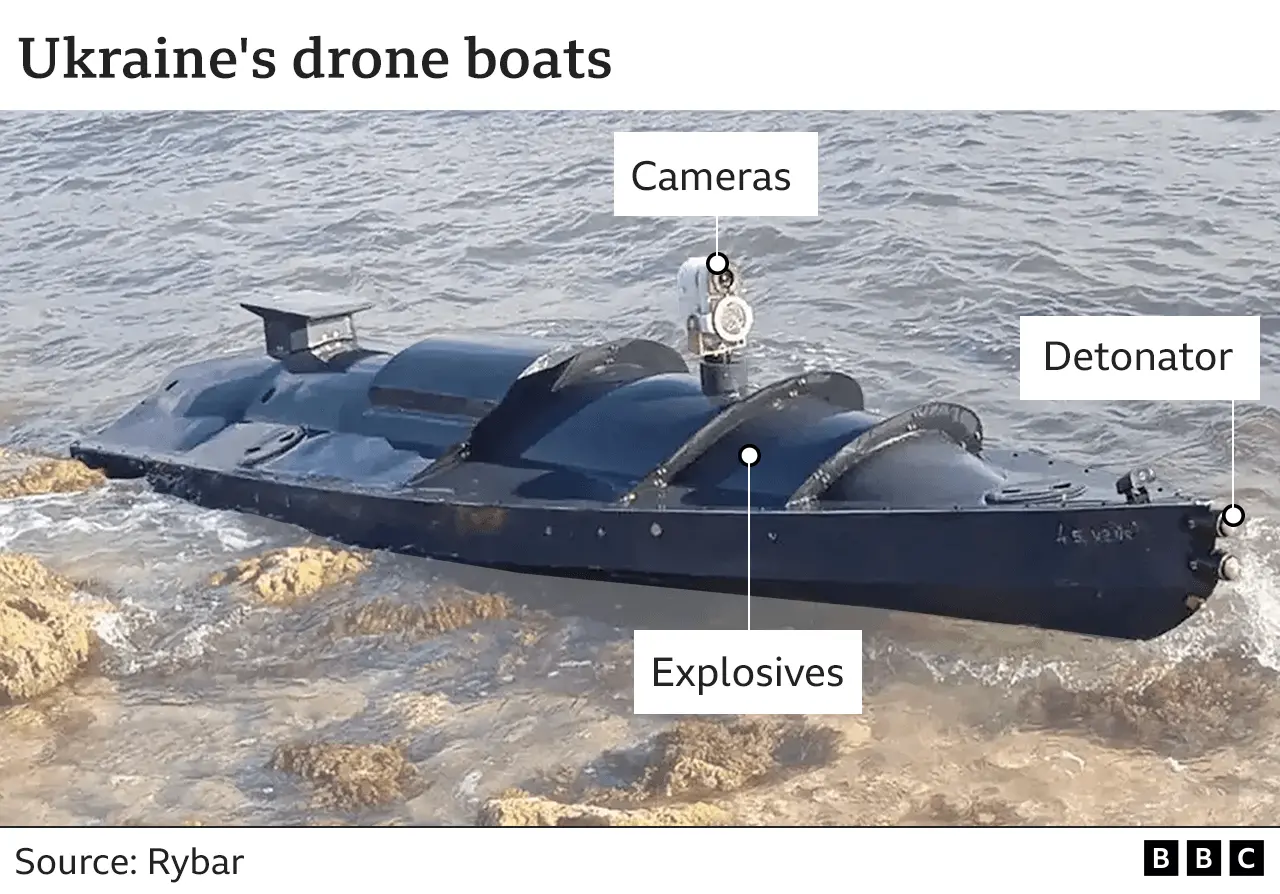
As well as drones that operate on the water's surface, Ukraine recently unveiled a prototype of an unmanned, undersea drone called the Toloka TLK-150.
How do sea drones work and how much do they cost?
Common sea drone features include built-in explosives and cameras which beam back images to the person controlling it.
Long-range targets are typically pre-programmed into the drones when launched.
They are then guided remotely by a human as they close in on the target, explains Sidharth Kaushal from the defence think tank Rusi.
Some Ukrainian sea drones have been developed with help from crowdfunding campaigns. They are usually made with "off-the-shelf" components normally for commercial - rather than military - use, adds Mr Kaushal.
Russian media and bloggers have claimed that Russia also used them in an attack on a bridge in the port city of Odesa. However, the BBC has seen no evidence to support this.
How many sea drones each side holds is not publicly known. It's also unclear how much they cost, but one drone publicised by the Ukrainian government has a price tag of $250,000 (£197,000). That would be cheaper than many types of long-range missile.
Sea drones can also be deployed quickly and without the need for a fully-trained crew.
"Even if you intercept a lot of low-cost objects, all you need is one to get through and damage a much more expensive asset and the model has paid for itself," says Mr Kaushal.
- What do we know about drone attacks in Russia?
- Russian drones hit Ukraine grain stores near Romania
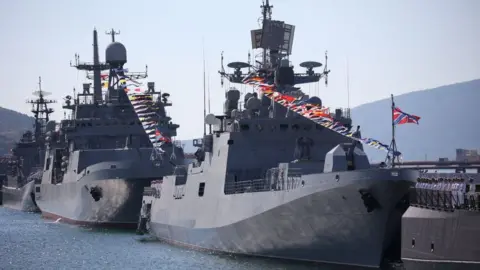
When have sea drones been used against Russia?
BBC Verify's research suggests Ukraine has carried out at least 13 attacks with sea drones - targeting military ships, Russia's naval base in Sevastopol, and Novorossiysk harbour. This is based on announcements by Russian and Ukrainian authorities, and local media reports.
Ukrainian defence sources have told CNN that sea drones were also used in an attack on the Kerch Bridge in July.
Some attacks have been far from Ukrainian shores.
In May, footage emerged showing drone ships approaching a Russian intelligence-gathering ship called the Ivan Khurs, but it's unclear if the ship was damaged.
Russia says the incident took place 90 miles (140km) north of Turkey's Bosphorus Strait - around 120 miles (193km) from the Ukrainian coast. This suggests these drones can potentially travel long distances.
What impact are sea drones having on the war?
Ukraine's deployment of sea drones, at relatively low cost, marks a new era for naval warfare. The tactic poses an increasing risk to Russia, according to some analysts.
Compared with naval vessels, sea drones are harder to detect on radar because they travel low on the water and they make far less noise.
While Ukraine does not have a substantial navy, its sea drones have stopped Russia from taking full control of the Black Sea, says Katarzyna Zysk, a professor at the Norwegian Institute of Defence Studies.
The attack on Russia's naval base in Sevastopol, back in October 2022, was the first in recorded history to use both sea and aerial drones.
At least three Russian ships were damaged in the attack, according GeoConfirmed, an organisation that analyses satellite and other open source imagery. Since then, Russia has significantly bolstered defences around the base according to recent satellite images seen by BBC Verify.
Another attack on Sevastopol in September which left 24 people injured involved three unmanned boats, Russia claimed.
Sea drones still have some disadvantages.
On-board sensors may have a narrow field of view, which will make it hard to track moving targets without accurate location data or to spot camouflaged ships.
Those with onboard cameras also need constant communication with their controller to direct them to a target, so any issues with streaming video will jeopardise their mission.
"It's not a revolution as yet," says Prof Zysk. "We're still in an experimental phase".
Nonetheless, Ukraine's strategy has caught international attention, and is "pushing other navies to develop these kind of systems and their operational practice," she adds.

Only in Monaco – A drone services delivers a $440 bottle of Dom Pérignon Champagne and caviar to a superyacht. As fancy, this service is equally eco-friendly for delivering supplies on the high seas.

Picture this: Jeff Bezos and Lauren Sanchez on a $500 million sailing yacht, enjoying uninterrupted views. Their perfect moment is interrupted only by the unavailability of a bottle of Dom Pérignon . It’s hard to imagine the Amazon founder running out of anything, but should that day arrive, a Monaco-based startup, MC Click, is ready to come to the rescue with “Dom on the drone!” Kookiejar of Sweden, the drone supplier, successfully delivered a $440 bottle of 2008 Dom Pérignon Champagne, a 500g tin of Caviar by Azure Caviar, a Ralf Tec Watch, and some perfume aboard Lürssen’s 240-foot Coral Ocean superyacht.
View this post on Instagram A post shared by Mc Clic – Erwan Grimaud (@mcclicmonaco)
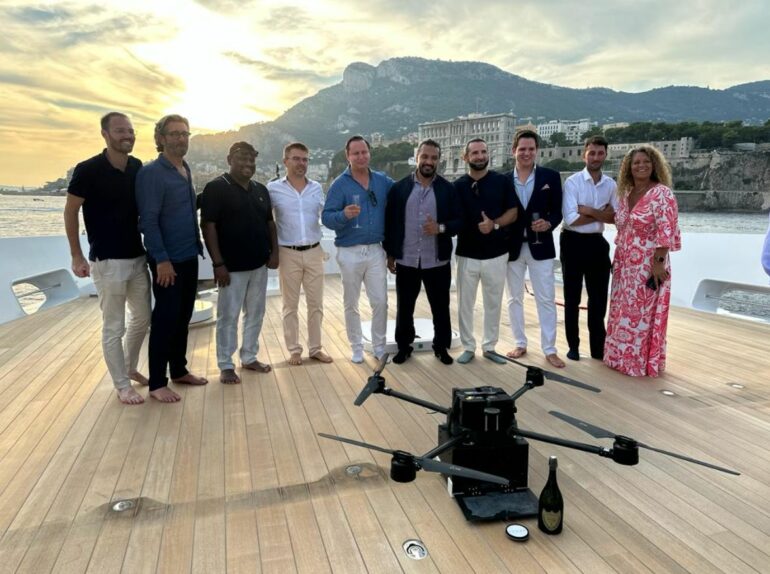
You may also like
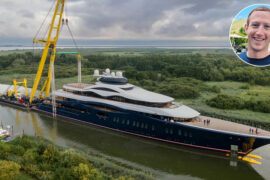
Is Mark Zuckerberg planning to buy a sanctioned oligarch’s abandoned $382 million superyacht? Longer than a football field, the brand new vessel has a helipad with a hangar, swimming pool, a sky lounge & a massive deck for the Facebook CEO to do martial arts on.
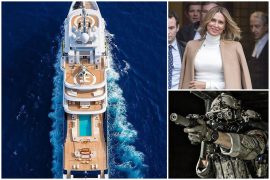
Tatiana Akhmedova, the Ex-wife of a Russian Oligarch has hired Ex-Special Forces soldiers, to storm and seize her husbands $320 million superyacht as he is refusing to pay her the $640 million divorce settlement.
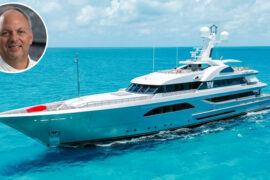
This Chicago businessman who started selling luxury car mats after taking a second mortgage on his home now owns this stunning 188-foot W superyacht. Designed to be the most playful luxury vessel, it has an inflatable dock, a giant water slide, laser sailboats, and even a climbing wall.

Inspite of being impounded by the authorities more than a year ago, this sanctioned billionaire is quietly paying for the repairs and maintenance of his $120 million superyacht at the same shipyard that allegedly repaired Walmart heiress Nancy Walton’s superyacht.
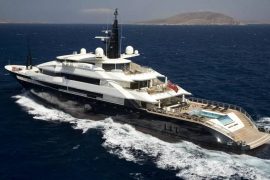
Inspite of being ‘dark’ and cleverly hidden for months, the FBI traced the location and raided the $120 million superyacht ‘Alfa Nero’ of sanctioned oligarch Andrey Guryev.

Its bar has $153,000 worth of rare wines and spirits alone. The Russian billionaire’s auctioned superyacht has so many luxury items onboard that the authorities have no idea of what to do with them.
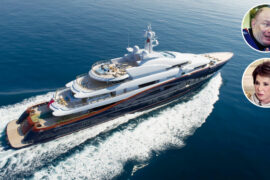
Russia’s richest man who cleverly saved his $300 million superyacht from getting seized by the US authorities may end up losing the 345 feet long Nirvana to his ex-wife in one of the world’s priciest divorces.
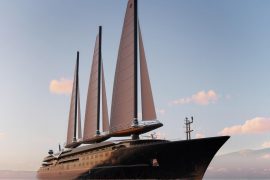
Twice the size of Jeff Bezos’ $500 million yacht, Accor is building the worlds largest megayacht – The 722 feet long Orient Express Silenseas will offer stately suites, two swimming pools, amphitheater cabaret and oyster bar.
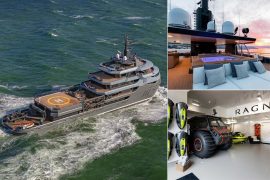
Left without food, its desperate staff had to catch fish from the sea and barbeque – After being stranded in freezing Norway for 6 weeks as the locals refused to sell it food or fuel this former KGB agent’s $85 million adventure superyacht is now headed to Malta.
The best drone for fishing in 2024
Boost your catch, with the best drone for fishing in lakes, rivers and the sea
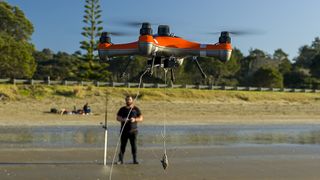
The best drone for fishing is one that uses a polarizing lens to look directly into the water and help you pick the perfect spot. Some special features can assist in the process further, such as SwellPro’s bait release systems. These can be controlled remotely, or simply through tension you apply to the line with the drone. Also, if you like to fish in one particular spot, creating a detailed satellite-style map is easy with a drone, which why we’ve included a number with good cameras on this list.
When choosing the best drone for fishing, it’s a good idea to look at range – the maximum distance you can control the drone and still see a video signal back. Even if your national regulations don’t allow you to fly this far, it gives a good idea of the quality of the radio signal you can expect.
If you've never flown a drone before, you might be worried about crashing it. Well, don't stress. Every drone on this list features GPS hover in at least one of the flight modes. That means you’ll be able to take off, fly around, and let go of the controls, with no worries that the aircraft will plummet from the sky. Collision avoidance sensors can also be found on pricier drones.
- Also read: the best underwater drones.
The best drones for fishing in 2024
Why you can trust Digital Camera World Our expert reviewers spend hours testing and comparing products and services so you can choose the best for you. Find out how we test.

1. DJI Air 2S
Our expert review:
Specifications
Reasons to buy, reasons to avoid.
If you’re able to take off from dry ground, this is a near perfect choice in terms of visual quality, with a 1080p livestream. There are plenty who would be jealous of this drone in the photography or cinematography space. While, like many, it isn't waterproof, the gimbal-stabilized camera can be directed straight down and has an easy filter attachment system, so it's possible to add a polarizing lens and penetrate the surface of a lake.
The folding design makes it portable, and the propellors are relatively quiet. powerful motors mean it can make its way home in strong winds. DJI provides high quality charging tools and the control app is easy to use, even for beginners, while offering advanced features where required.
The Air 2S also features an array of collision avoidance sensors, meaning you can fly through trees and it’ll plot a route around them rather than plough into them. For more details, see our DJI Air 2S review .
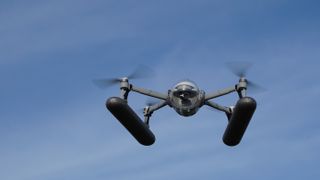
2. PowerVision PowerEgg X Wizard
PowerVision is known for its underwater drones, as well as this uniquely adaptable aerial one. It requires a little on-site assembly – especially if you’re using the waterproof housing and floating landing skids – but in exchange you have a reasonably powerful drone with a competitive battery life which can land on the surface of the water, and lift itself off again.
PowerVision makes no specific claims for speed, but it’ll remain controllable in Beaufort Scale 5 winds, which isn’t to be sniffed at. The live view to a mobile phone (connected to the remote) gives a clear view of what the camera is seeing, and the app is reasonably intuitive. If you want to narrate your lake-mapping you can use your phone’s microphone to record your thoughts onto the video from the drone.
The three-axis gimbal provides stable video and while the camera sensor is a standard 1 / 2.8 inch CMOS (like a typical phone), the picture is plenty sharp for fish finding. Then, if you change activities, you can take the drone body out of its arms and just use the ‘egg’ as a stabilized action camera – adaptable! For more details, see our Powervision PowerEgg X drone review .
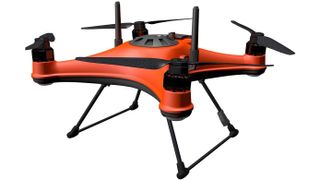
3. SwellPro SplashDrone 4
An IP67 waterproof drone built for the water? You bet. At over 2kg, with capacity for a load of about the same again (that’s around 25 pieces of bait on a line) the SplashDrone 4 is a powerful – if a little pricey – option. Especially when paired with the PL1-S bait release mechanism.
The orange shell of the drone can float and take off from water; if it finds itself the wrong way up, it can even flip itself upright, which is stunning to watch. You get all the usual drone treats that a high-end consumer pilot would expect, including high-res live view and intelligent follow, thanks to the NaviFly app (note: you'll need a phone clipped atop the remote control). Plus there are delightful extras, like the bait release, more traditional feeling buttons and switches on the IP66-waterproof remote.
SwellPro support their SplashDrone series of drones with a number of payload release mechanisms for “skytrolling,” so you can troll for fish up to 1.6km from the shore without a boat.

4. DJI Mini 2 SE
The DJI Mini SE was created as the entry-point to the leading drone manufacturer’s range. As such it might leave a few of the latest features out, and the camera’s 2.7K video recording irks some tech heads, but the 720P live video to the phone monitor is crisp and clean, especially now.
The new DJI Mini SE 2, first shipping in 2023, hasn’t made any significant changes to that success story except an improvement to the radio system which to DJI’s O2 standard, giving it a range of 6.2 miles in the US, or 6000m (3.7m) in UK/EU markets, and improving the bit rate of the live preview.
It also shares the same well maintained and easy-to-use software with other DJI drones, making it easy to learn. The camera gets a sharp image because it's on a gimbal, which also allows you to remotely tilt it to point down to the water.
Crucially… drum roll please… the Mini is also just under the weight limit which requires registration. This means that if you’re in the USA, you won’t need to do any paperwork with the FAA.
Check our DJI Mini SE vs Mini SE 2 comparison

5. SwellPRO Spry+
This certainly looks like a piece of marine equipment, and for some the optional TrollSafe bait release tool this will be a must-have. It works when you fly your line out and it reaches a certain tension, releasing the bait and line.
It’s also a very exciting drone, built on powerful motors. Sometimes this can be a little bit of an issue: GPS return to home can be a touch enthusiastic. But SwellPRO have made refinements to the design and software since the first edition. That’s good, because underneath there is the heart of an FPV racing drone .
That means you get very low latency video feedback, and the option of goggles for FPV view, but on the downside the resolution you view on the monitor is not as high as the more photography-oriented drones like those from DJI. On the plus side, there's a color screen built into the remote control, which is waterproof.
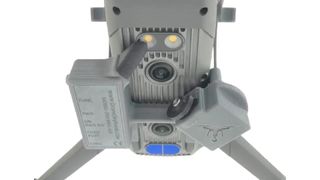
6. Drone Sky Hook
Want a drone that can drop bait for you? This is forbidden in some countries, including the UK, but otherwise here's our top recommendation.
Drone Sky Hook has made a number of variants of their Sky Hook to clip onto different DJI airframes, including the Mavic line all the way up to the 3, the Mavic Air series, and Phantom 4. The device is a rounded latch which, when activated, makes a turn, enough for anything dangling from it to be released.
The trigger to activate the latch is a light sensor. This is positioned at the drone’s built in landing lights and the instructions tell you to assign one of your remote control keys to the lights. Failing that, two full anti-clockwise rotations can also trigger the release.
The mechanism does slightly obscure the lower sensors on the Mavic 3, and undoubtedly would rule out a DJI Care Refresh claim, but the drone can still fly. The reduction on your overall flight time will depend on the weight, and the motors will be subject to some stress, but DJI also sell some accessories (like lights) so they are built to cope.
Is drone fishing legal?
The legality of drone fishing varies depending on where you are. It is important to check with your local authorities to find out the specific rules that apply in your area. For example, in the UK you're forbidden from dropping anything from drones, which effectively rules out any drone with a dropping mechanism, or an accessory like the Sky Hook. Assuming you’re not taking off in international waters, you’ll be bound by the rules of your local aviation authority. In the USA, that's the Federal Aviation Administration (FAA). In the UK, it's the Civil Aviation Authority (CAA).
What are the benefits of using a drone for fishing?
Drones can be used to scout for fish from the air, allowing you to target specific fish species or schools of fish. This also helps you fish more efficiently by reducing the time spent casting and retrieving lines. Drones can be used to cast bait and hooks into areas that are difficult or impossible to reach by traditional methods, such as deep water, reefs, or areas with overhanging vegetation (however, this may not be legal in specific areas, so always check the regulations).
How do I choose a drone for fishing
There are a number of different drones that can be used for fishing, so choosing between them will depend largely on your specific needs. First, consider payload capacity: the drone should be able to carry the weight of your bait, hook, and line. Also think about how long you're likely to be out fishing on a given day, and how much battery life you'll need in a drone should have enough battery life to last for several hours of fishing. The drone will also have enough range to reach the areas you want to fish in.
• Best indoor drones • Best camera drones • Best drones for kids • Best travel drones • The best drone accessories • Drone rules and regulations • Best waterproof camera • Best handheld GPS • Best head torch
Get the Digital Camera World Newsletter
The best camera deals, reviews, product advice, and unmissable photography news, direct to your inbox!
With over 20 years of expertise as a tech journalist, Adam brings a wealth of knowledge across a vast number of product categories, including timelapse cameras, home security cameras, NVR cameras, photography books, webcams, 3D printers and 3D scanners, borescopes, radar detectors… and, above all, drones.
Adam is our resident expert on all aspects of camera drones and drone photography, from buying guides on the best choices for aerial photographers of all ability levels to the latest rules and regulations on piloting drones.
He is the author of a number of books including The Complete Guide to Drones , The Smart Smart Home Handbook , 101 Tips for DSLR Video and The Drone Pilot's Handbook .
Related articles

trending now in World News
Royal Caribbean quietly bans this essential travel item from its...

Hezbollah chiefs killed in IDF airstrike were plotting Oct....

200-year-old message reveals note from archaeologist

Netanyahu weighs plan to evacuate all of northern Gaza, lay...

Boy, 7, denied passport for family vacation over shared name with...

Brewing tropical threat to US could play out in four different...

Iran delivers ballistic missiles to Russia without launchers:...

Trove of top-secret information may be trapped on $40M yacht...
Ukrainian drones take out major russian ammo depots in huge explosion.
Ukrainian drones struck two Russian munition depots in an overnight attack that caused one of Russia’s largest ammo storage facilities to explode in a massive, fiery blaze Saturday, officials said.
Kyiv’s military general staff claimed the attack targeted ammunition facilities in Tikhoretsk and Oktyabrsky, with the former allegedly harboring about 2,000 tons of munitions, including weapons from North Korea .
Shocking videos uploaded to social media on Saturday from Tikhoretsk, in Russia’s southern Krasnodar region, show the moment the military facility erupts into a cloud of fire, with burning projectiles launched into the sky.

“The (Tikhoretsk) facility is in the top three largest munitions storages of the occupiers, and is one of the key points in the Russian military logistical system,” the general staff said in a statement about the attack.
The strike triggered Krasnodar regional governor Venyamin Kondratyev to order an evacuation near the facility, forcing more than 100 residents to relocate to local hotels.
A Ukrainian security source told Reuters that drones were used in the attack against both ammunition depots, with the second attack hitting an unspecified facility at Russia’s Shaikovka military airfield.
BREAKING: Several large Russian weapons depots destroyed in Ukrainian drone swarm strikes a few hours ago. This video shows the weapons depot storing North Korean artillery shells exploding in Tikhoretsk, in the Krasnodar region nearly 500 km from the frontlines. pic.twitter.com/Kzsdsua7iT — Visegrád 24 (@visegrad24) September 21, 2024
The attacks came a week after a Ukrainian drone hit another Russian weapons depot in Toropets, with the immense blast registering on earthquake monitoring stations in the region.

The strikes on the large Russian weapons facilities may force Moscow to “reorganize and disperse support and logistics systems within Russia to mitigate the impact of such strikes,” according to an analysis from the Institute for the Study of War, a Washington-based think tank.
The latest drone strikes came as the Kremlin’s Ministry of Defense said its forces intercepted 101 drones, including 21 in the same regions where the munitions depots were located.
Following the attack, Russia launched a series of new strikes on Kharkiv, with bombs hitting a civilian high-rise apartment that left at least 21 wounded .
With Post wires.

Advertisement

IMAGES
VIDEO
COMMENTS
Join us! Drones for Yachts is the first drone delivery service at sea. Our goal is to offer an innovative solution to the yachting world. Customer experience is at the heart of our DNA with a customized and exclusive service. At Drones for Yachts, our mission is to make drone delivery accessible. Air delivery makes it possible to reduce the ...
4K video/12MP images. 40mph top speed. Front collision detection. 27-minute flight time. The DJI Mavic Pro is currently one of the best drones on the market. It is incredibly convenient to carry ...
Moreover, due to its wind resistance (level of 5), Mavic Air 2 can fly in windy conditions, making it an excellent drone for boating and sailing activities. Weighing only 20.01 oz (570 g) and having a level 5 wind resistance, DJI Maic Air 2 is probably the best drone for windy conditions.
Raising the bar another notch is the Yuneec Typhoon Q500, our choice for a sub-£1,000 advanced drone for sailing. Inside the box is the aircraft itself, its 4K UHD 30 frames per second camera ...
The best boating, kayaking, and sailing drones include the DJI Avata, DJI Mavic 3 Classic, SwellPro Splash Drone 4, PowerVision PowerEgg X, and the DJI Mini 3 Pro. These drones will suit you whether you want to create cinematic footage, shoot underwater, or even use a drone for fishing. Keep reading to learn more about these drones and some ...
DJI Mavic 2 Zoom Drone, £1,099. Shoot silky smooth high resolution imagery with this latest offering from drone expert DJI. The Mavic 2 has a 12-megapixel sensor and 4x zoom for capturing every detail and boasts a supreme speed of 72kph. Able to fly for up to 31 minutes at a time, the Mavic 2 is has also been designed as a quieter and more ...
The overall best drone for sailing: DJI Mavic 3 Pro The DJI Mavic 3 Pro is the best drone for sailing photography, thanks to its three cameras, flight time, intelligent features, and wind resistance.. The Mavic 3 Pro has a three-axis gimbal with three cameras built-in: A custom Hasselblad wide-angle camera (24 mm) for capturing stunning landscapes
This is perfect for use when sailing. This drone is incredibly strong and even comes with 8gb inbuilt storage. It is SD card friendly meaning you can fit up to 128gb of further storage onboard your drone. The DJI Mavic 2 Pro has a flight time of 31 minutes and can reach speeds of 44mph in good conditions. 2.
The partnership will see Drones for Yachts utilize EuroLink's Beluga family of mini-drones, which will be utilized for filming yachts and races, transporting goods and supplies to yachts at sea ...
Film Your Boat in a New Perspective. SplashDrone 4 can take high-resolution photos and smooth videos with a 4K camera stabilized by 3-axis gimbal. On top of that, there are several innovative flight features on the drone for cinematic sailing footage in all kinds of boating situations.
DJI Spark Key features:. Takeoff from the palm of your hand; Gesture controls and quick shots; GPS and GLONASS; 1080P video; 13 minutes flight; Dji has extensive experience in creating miniature drones, which can confirm DJI Mavic Pro.DJI Spark - technically the smallest drone of the company - but only in comparison with the disclosed one Mavic Pro.. Thanks to its small size and light weight ...
A new tethered drone system from Volarious enables DJI drones for boats. The system allows a commercial off-the-shelf, Mavic 2 drone to autonomously take off, follow, and land safely on small ...
However, there are some downsides to consider before purchasing this drone. First, the Phantom 4 Pro is quite expensive, costing around $1,500. This makes it one of the most costly consumer drones on the market. Secondly, the Phantom 4 Pro is large and heavy, making it difficult to transport and store.
A wide-open grassy space with no other people, trees or structures is ideal. Concrete and steel structures (e.g., buildings) in particular wreak havoc on the compass of a drone. When going through the drone's initial setup, "swinging" the compass—just like on a sailboat's autopilot—is one of the first required steps.
You've got to fly it in backwards, because the forward vision sensors will stop it from getting close enough to catch. "Keep the boat sailing straight and bring the drone in. If you need to re ...
Drone To Yacht is on a mission to transform the way customers make their orders. We believe that knowing what consumers want today is not enough. We are building a complete food delivery experience that many had never considered before. A service that anticipates and meets the expectations of the consumer of the present and the future.
Raising the bar another notch is the Yuneec Typhoon Q500, our choice for a sub-£1,000 advanced drone for sailing. Inside the box is the aircraft itself, its 4K UHD 30 frames per second camera, Yuneec's ST10+ FPV (First Person View) ground station, a Yuneec SteadyGrip, a Lithium Polymer battery and a range of accessories.
This article addresses everything you'll need to know about selecting and flying a drone with the intent of using your boat as a launch and recovery point. Make sure to watch his video demo at the end showing the drone launch, flight and recovery on a boat! Types of Drones By Size. The range of sizes for remote controlled aircraft is stunning.
Gimbal dampeners create steady shots. It includes a remote, but you can also use hand gestures to launch and control this drone in SmartCapture mode. With flight speeds up to 42.5 mph, it offers 21 minutes of maximum flying time on a single charge. $799; store.dji.com. Ever wondered about the possibilities of a drone for use aboard your boat.
Geneinno recently launched a drone with a robotic arm to assist in the underwater rescue. If you don't feel like donning a wetsuit and jumping in the water to try and retrieve your valuables, use the drone. 3. Underwater Filming. Filming the big blue has relieved fascinating tales and opened up a whole new world.
How many sea drones each side holds is not publicly known. It's also unclear how much they cost, but one drone publicised by the Ukrainian government has a price tag of $250,000 (£197,000). That ...
This one-off delivery was a trial to test the feasibility of using drones to transport goods and services to yachts in the future. It seems they can. Although the trial goods weighed 10kg, future services, after approval, could see drones transporting up to 40kg of goods, according to The Drinks Business. The trial received support from ...
SwellPro support their SplashDrone series of drones with a number of payload release mechanisms for "skytrolling," so you can troll for fish up to 1.6km from the shore without a boat. (Image credit: Adam Juniper/Digital Camera World) 4. DJI Mini 2 SE. The best drone for fishing that doesn't need FAA authorisation.
Ukrainian drones struck two Russian munition depots in an overnight attack that caused one of Russia's top ammo storage facilities to explode in a massive, fiery blaze, officials said.